
Brain Power
5 steps (and 4 techniques) for effective problem solving.
Problem solving is the process of reviewing every element of an issue so you can get to a solution or fix it. Problem solving steps cover multiple aspects of a problem that you can bring together to find a solution. Whether that’s in a group collaboratively or independently, the process remains the same, but the approach and the steps can differ.
To find a problem solving approach that works for you, your team, or your company, you have to take into consideration the environment you’re in and the personalities around you.
Knowing the characters in the room will help you decide on the best approach to try and ultimately get to the best solution.
Table of Contents
5 problem solving steps, 4 techniques to encourage problem solving, the bottom line.
No matter what the problem is, to solve it, you nearly always have to follow these problem solving steps. Missing any of these steps can cause the problem to either resurface or the solution to not be implemented correctly.
Once you know these steps, you can then get creative with the approach you take to find the solutions you need.
1. Define the Problem
You must define and understand the problem before you start, whether you’re solving it independently or as a group. If you don’t have a single view of what the problem is, you could be fixing something that doesn’t need fixing, or you’ll fix the wrong problem.
Spend time elaborating on the problem, write it down, and discuss everything, so you’re clear on why the problem is occurring and who it is impacting.
Once you have clarity on the problem, you then need to start thinking about every possible solution . This is where you go big and broad, as you want to come up with as many alternative solutions as possible. Don’t just take the first idea; build out as many as you can through active listening, as the more you create, the more likely you’ll find a solution that has the best impact on the team.
3. Decide on a Solution
Whichever solution you pick individually or as a team, make sure you think about the impact on others if you implement this solution. Ask questions like:
- How will they react to this change?
- Will they need to change anything?
- Who do we need to inform of this change?
4. Implement the Solution
At this stage of problem solving, be prepared for feedback, and plan for this. When you roll out the solution, request feedback on the success of the change made.
5. Review, Iterate, and Improve
Making a change shouldn’t be a one time action. Spend time reviewing the results of the change to make sure it’s made the required impact and met the desired outcomes.
Make changes where needed so you can further improve the solution implemented.
Each individual or team is going to have different needs and may need a different technique to encourage each of the problem solving steps. Try one of these to stimulate the process.
1-2-4 All Approach + Voting
The 1-2-4-All is a good problem solving approach that can work no matter how large the group is. Everyone is involved, and you can generate a vast amount of ideas quickly.
Ideas and solutions are discussed and organized rapidly, and what is great about this approach is the attendees own their ideas, so when it comes to implementing the solutions, you don’t have more work to gain buy-in.
As a facilitator, you first need to present the group with a question explaining the problem or situation. For example, “What actions or ideas would you recommend to solve the company’s lack of quiet working areas?”
With the question clear for all to see, the group then spends 5 minutes to reflect on the question individually. They can jot down their thoughts and ideas on Post-Its.
Now ask the participants to find one or two other people to discuss their ideas and thoughts with. Ask the group to move around to find a partner so they can mix with new people.
Ask the pairs to spend 5 minutes discussing their shared ideas and thoughts.
Next, put the group into groups of two or three pairs to make groups of 4-6. Each group shouldn’t be larger than six as the chances of everyone being able to speak reduces.
Ask the group to discuss one interesting idea they’ve heard in previous rounds, and each group member shares one each.
The group then needs to pick their preferred solution to the problem. This doesn’t have to be voted on, just one that resonated most with the group.
Then ask for three actions that could be taken to implement this change.
Bring everyone back together as a group and ask open questions like “What is the one thing you discussed that stood out for you?” or “Is there something you now see differently following these discussions?”
By the end of the session, you’ll have multiple approaches to solve the problem, and the whole group will have contributed to the future solutions and improvements.
The Lightning Decision Jam
The Lightning Decision Jam is a great way to solve problems collaboratively and agree on one solution or experiment you want to try straight away. It encourages team decision making, but at the same time, the individual can get their ideas and feedback across. [1]
If, as a team, you have a particular area you want to improve upon, like the office environment, for example, this approach is perfect to incorporate in the problem solving steps.
The approach follows a simple loop.
Make a Note – Stick It on The Wall – Vote – Prioritize
Using sticky notes, the technique identifies major problems, encourages solutions, and opens the group up for discussion. It allows each team member to play an active role in identifying both problems and ways to solve them.
Mind Mapping
Mind mapping is a fantastic visual thinking tool that allows you to bring problems to life by building out the connections and visualizing the relationships that make up the problem.
You can use a mind map to quickly expand upon the problem and give yourself the full picture of the causes of the problem, as well as solutions [2] .

The goal of a mind map is to simplify the problem and link the causes and solutions to the problem.
To create a mind map, you must first create the central topic (level 1). In this case, that’s the problem.
Next, create the linked topics (level 2) that you place around and connect to the main central topic with a simple line.
If the central topic is “The client is always changing their mind at the last minute,” then you could have linked topics like:
- How often does this happen?
- Why are they doing this?
- What are they asking for?
- How do they ask for it?
- What impact does this have?
Adding these linking topics allows you to start building out the main causes of the problem as you can begin to see the full picture of what you need to fix. Once you’re happy that you’ve covered the breadth of the problem and its issues, you can start to ideate on how you’re going to fix it with the problem solving steps.
Now, start adding subtopics (level 3) linking to each of the level 2 topics. This is where you can start to go big on solutions and ideas to help fix the problem.
For each of the linked topics (level 2), start to think about how you can prevent them, mitigate them, or improve them. As this is just ideas on paper, write down anything that comes to mind, even if you think the client will never agree to it!
The more you write down, the more ideas you’ll have until you find one or two that could solve the main problem.
Once you run out of ideas, take a step back and highlight your favorite solutions to take forward and implement.
The 5 Why’s
The five why’s can sound a little controversial, and you shouldn’t try this without prepping the team beforehand.
Asking “why” is a great way to go deep into the root of the problem to make the individual or team really think about the cause. When a problem arises, we often have preconceived ideas about why this problem has occurred, which is usually based on our experiences or beliefs.
Start with describing the problem, and then the facilitator can ask “Why?” fives time or more until you get to the root of the problem. It’s tough at first to keep being asked why, but it’s also satisfying when you get to the root of the problem [3] .
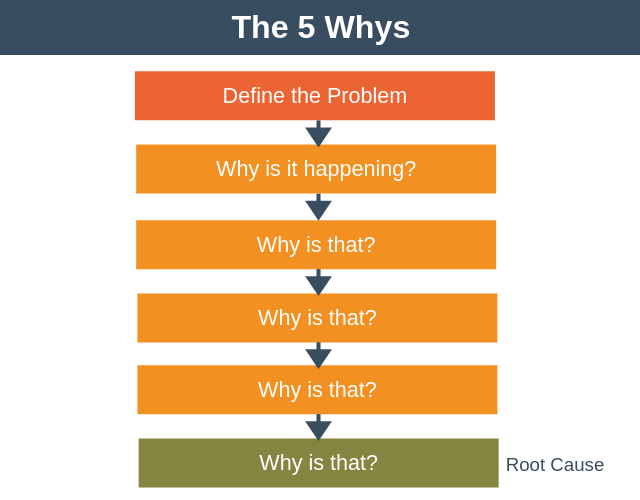
As a facilitator, although the basic approach is to ask why, you need to be careful not to guide the participant down a single route.
To help with this, you can use a mind map with the problem at the center. Then ask a why question that will result in multiple secondary topics around the central problem. Having this visual representation of the problem helps you build out more useful why questions around it.
Once you get to the root of the problem, don’t forget to be clear in the actions to put a fix in place to resolve it.
Learn more about how to use the five why’s here .
To fix a problem, you must first be in a position where you fully understand it. There are many ways to misinterpret a problem, and the best way to understand them is through conversation with the team or individuals who are experiencing it.
Once you’re aligned, you can then begin to work on the solutions that will have the greatest impact through effective problem solving steps.
For the more significant or difficult problems to solve, it’s often advisable to break the solution up into smaller actions or improvements.
Trial these improvements in short iterations, and then continue the conversations to review and improve the solution. Implementing all of these steps will help you root out the problems and find useful solutions each time.
| [1] | ^ | UX Planet: |
| [2] | ^ | Focus: |
| [3] | ^ | Expert Program Management: |
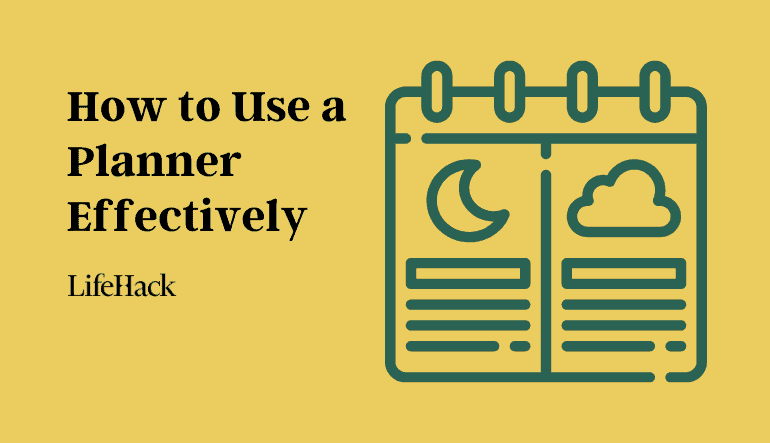
How to Use a Planner Effectively
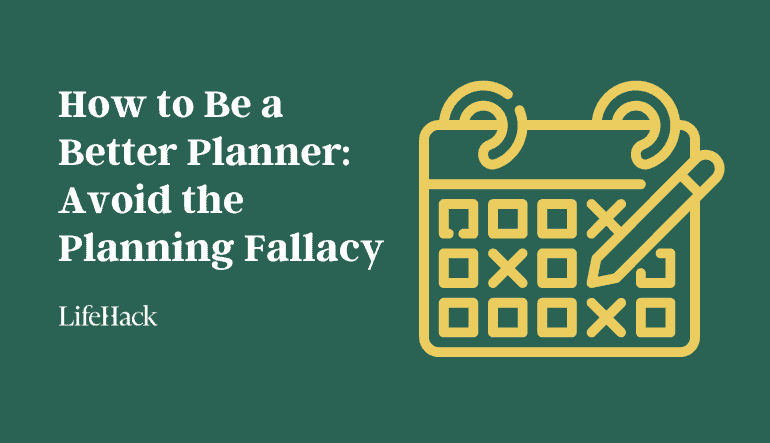
How to Be a Better Planner: Avoid the Planning Fallacy
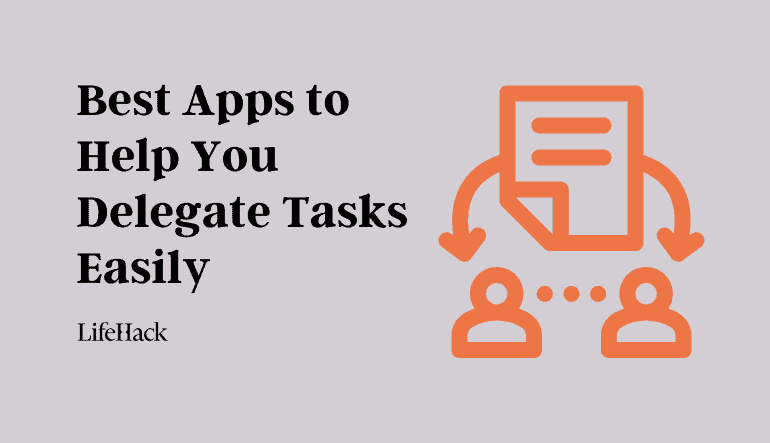
5 Best Apps to Help You Delegate Tasks Easily
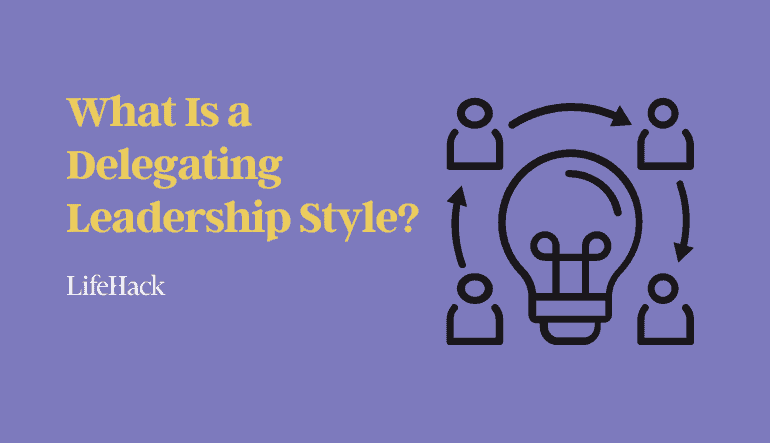
Delegating Leadership Style: What Is It & When To Use It?
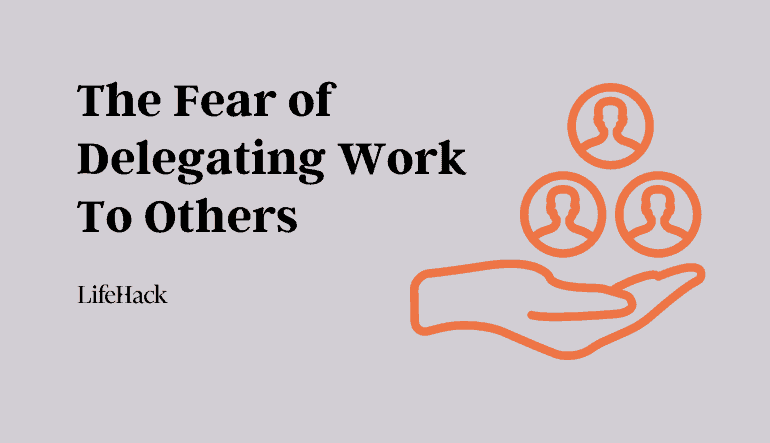
The Fear of Delegating Work To Others
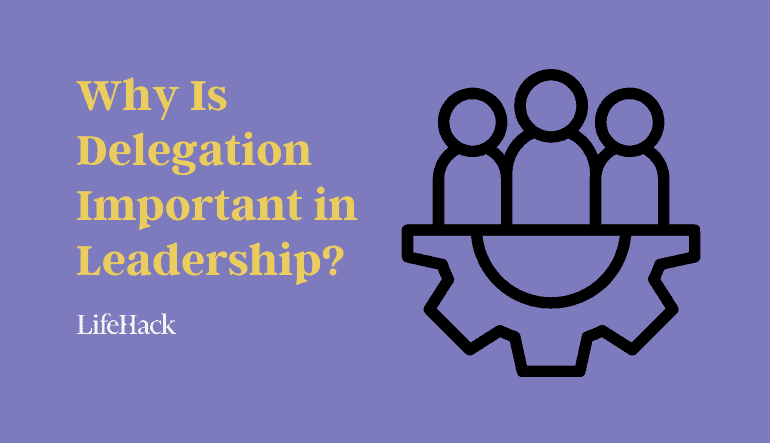
Why Is Delegation Important in Leadership?
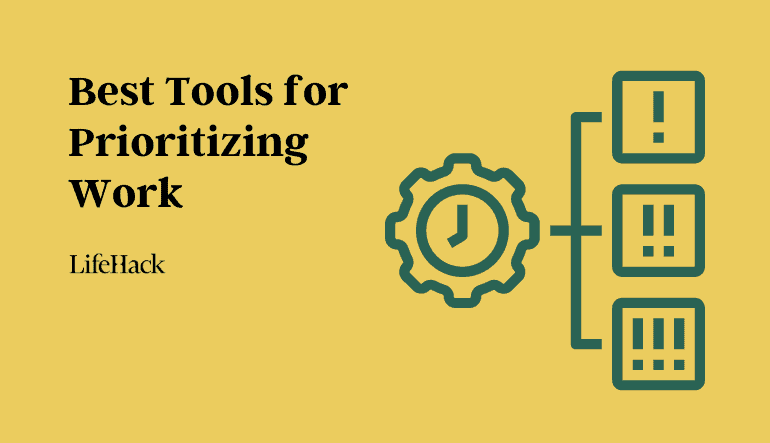
7 Best Tools for Prioritizing Work
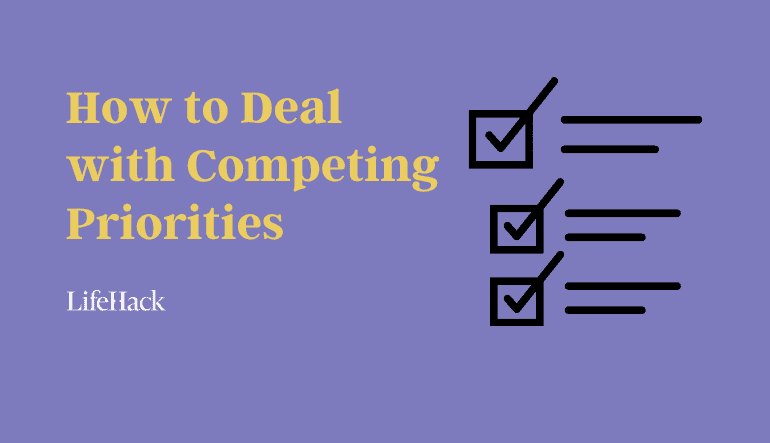
How to Deal with Competing Priorities Effectively
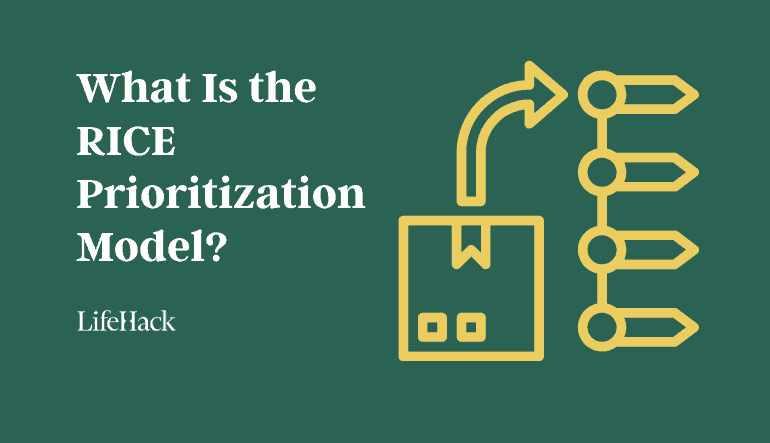
What Is the RICE Prioritization Model And How Does It Work?
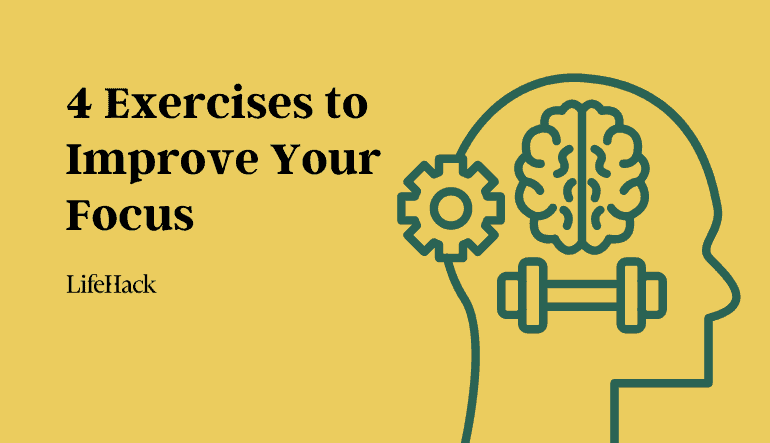
4 Exercises to Improve Your Focus
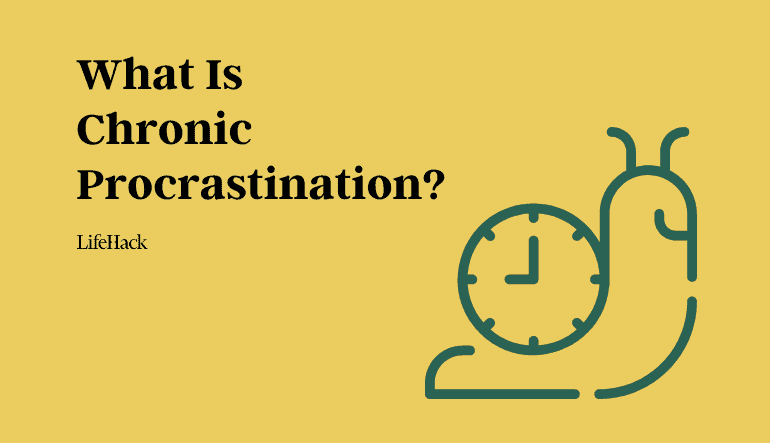
What Is Chronic Procrastination and How To Deal with It
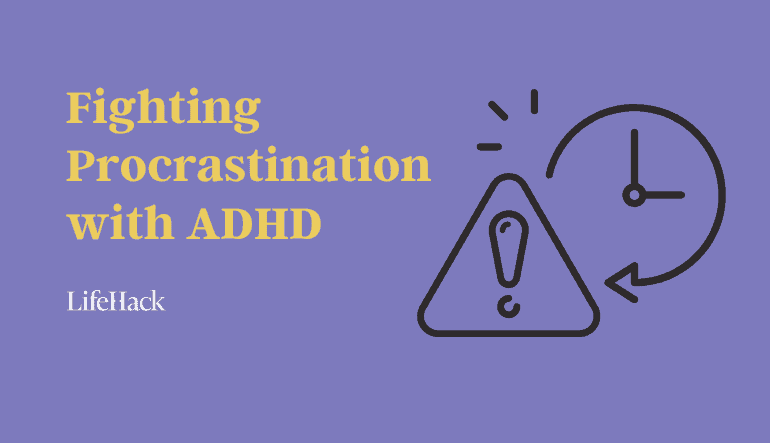
How to Snap Out of Procrastination With ADHD
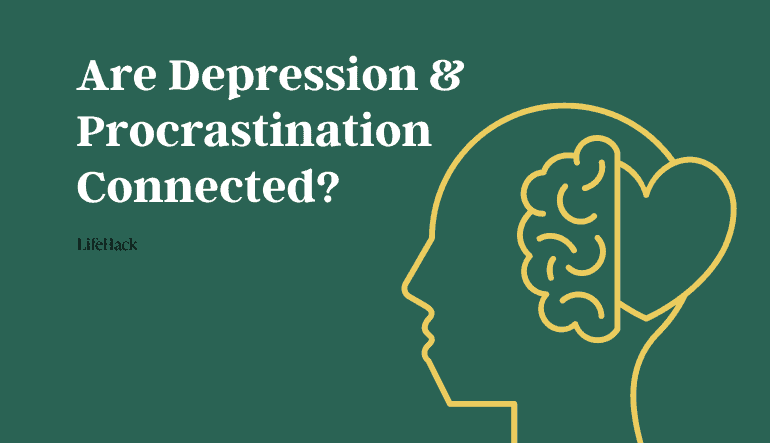
Are Depression And Procrastination Connected?
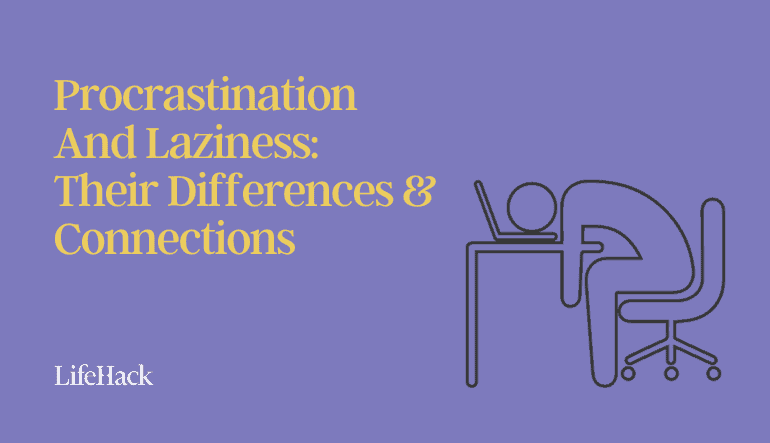
Procrastination And Laziness: Their Differences & Connections

Bedtime Procrastination: Why You Do It And How To Break It
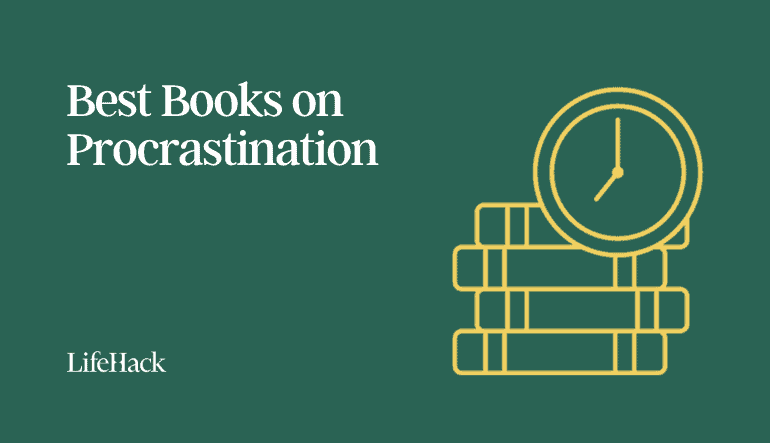
15 Books on Procrastination To Help You Start Taking Action

Productive Procrastination: Is It Good or Bad?

The Impact of Procrastination on Productivity
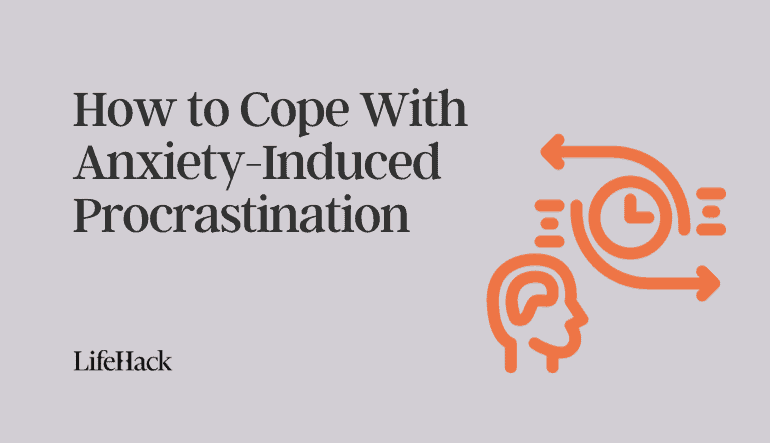
How to Cope With Anxiety-Induced Procrastination

How to Break the Perfectionism-Procrastination Loop
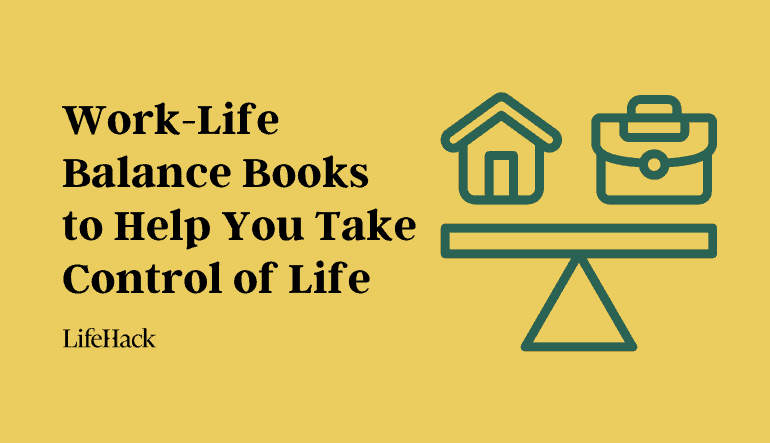
15 Work-Life Balance Books to Help You Take Control of Life
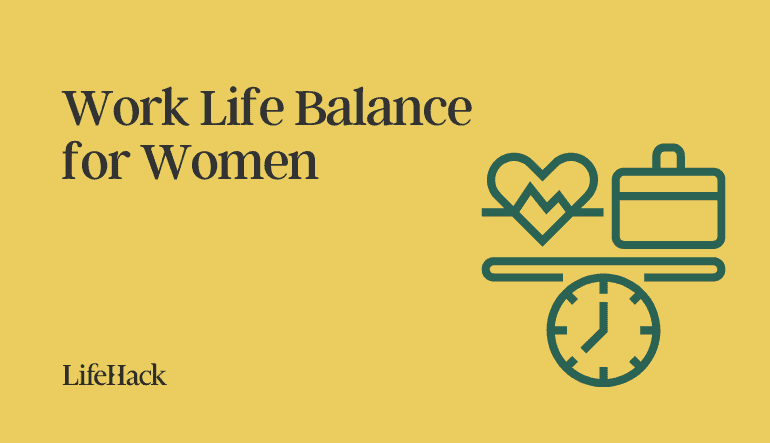
Work Life Balance for Women: What It Means & How to Find It

6 Essential Mindsets For Continuous Career Growth

How to Discover Your Next Career Move Amid the Great Resignation

The Key to Creating a Vibrant (And Magical Life) by Lee Cockerell

9 Tips on How To Disconnect From Work And Stay Present

Work-Life Integration vs Work-Life Balance: Is One Better Than the Other?

How To Practice Self-Advocacy in the Workplace (Go-to Guide)

How to Boost Your Focus And Attention Span
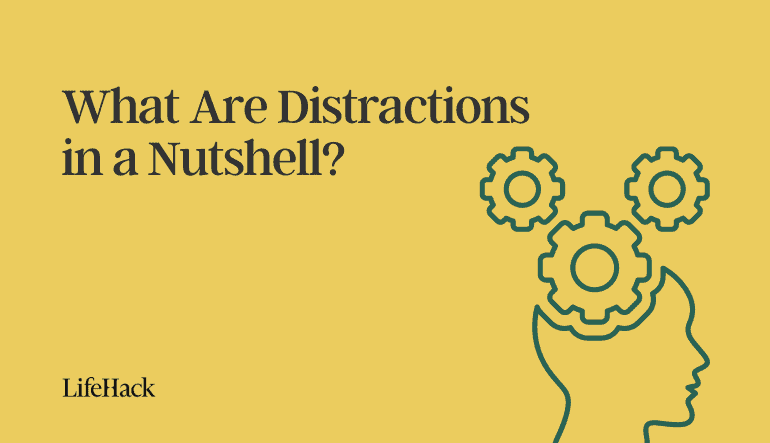
What Are Distractions in a Nutshell?
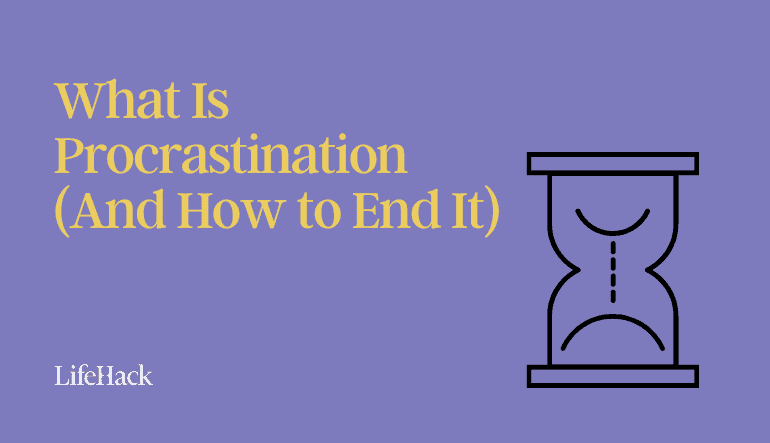
What Is Procrastination And How To End It
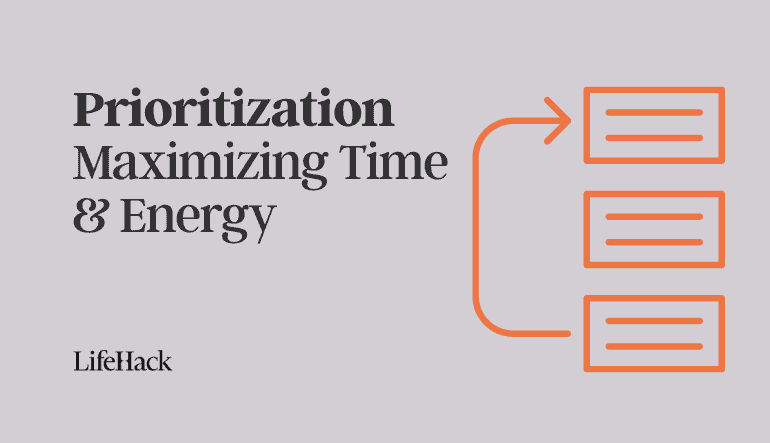
Prioritization — Using Your Time & Energy Effectively

Delegation — Leveraging Your Time & Resources

Your Guide to Effective Planning & Scheduling

The Ultimate Guide to Achieving Goals

How to Find Lasting Motivation

Complete Guide to Getting Back Your Energy
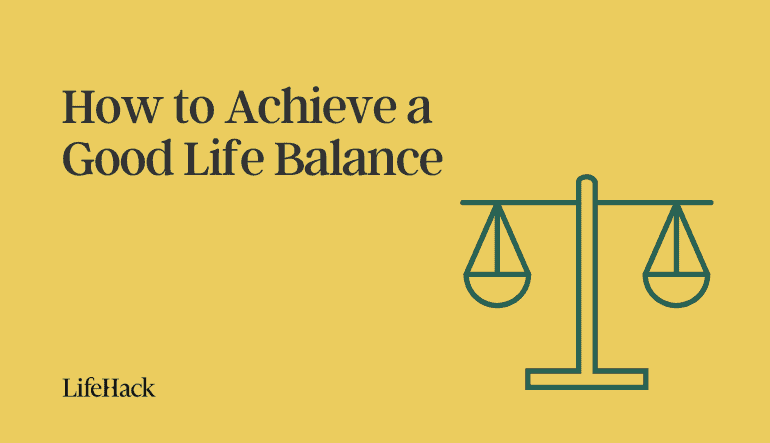
How to Have a Good Life Balance
Explore the time flow system.
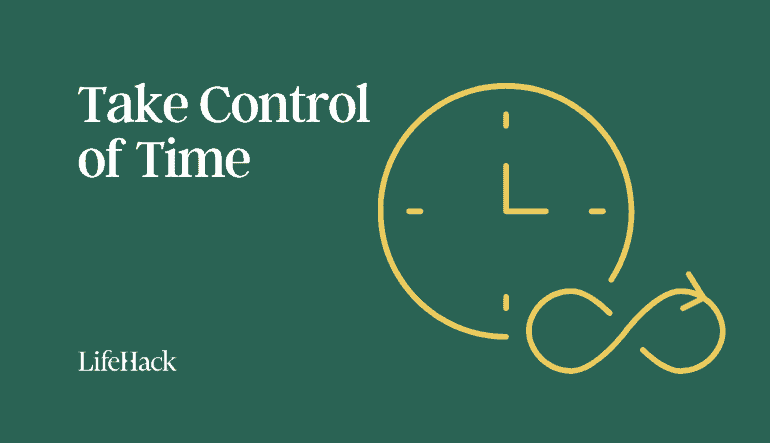
About the Time Flow System

Key Philosophy I: Fluid Progress, Like Water
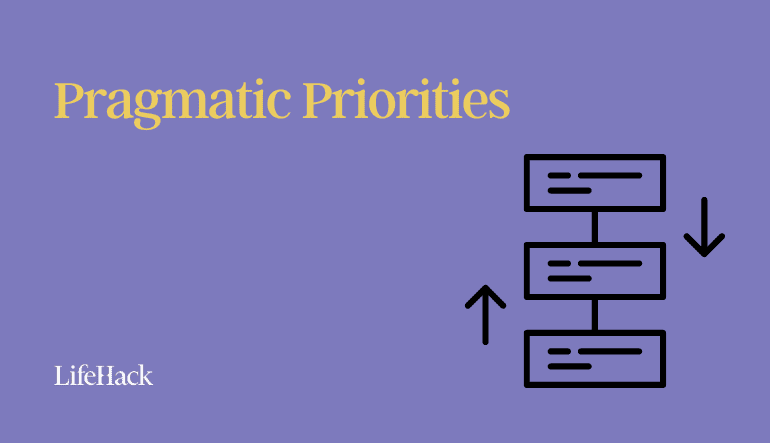
Key Philosophy II: Pragmatic Priorities

Key Philosophy III: Sustainable Momentum
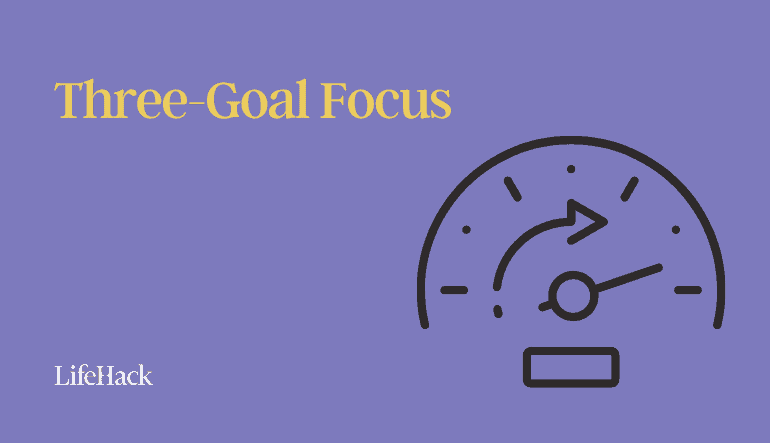
Key Philosophy IV: Three Goal Focus
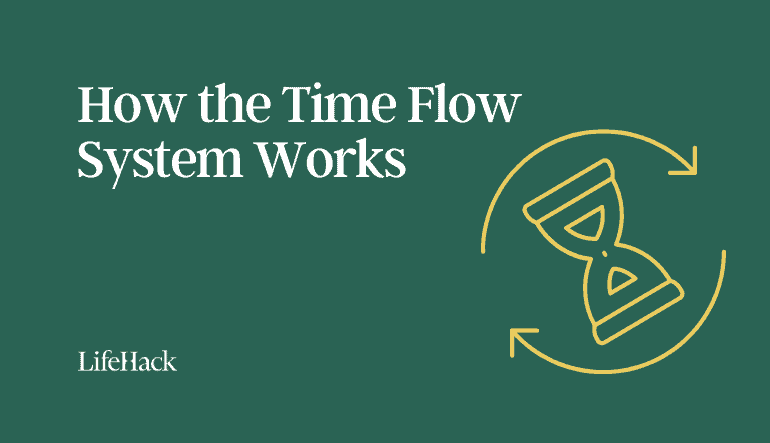
How the Time Flow System Works

How it works
Transform your enterprise with the scalable mindsets, skills, & behavior change that drive performance.
Explore how BetterUp connects to your core business systems.
We pair AI with the latest in human-centered coaching to drive powerful, lasting learning and behavior change.
Build leaders that accelerate team performance and engagement.
Unlock performance potential at scale with AI-powered curated growth journeys.
Build resilience, well-being and agility to drive performance across your entire enterprise.
Transform your business, starting with your sales leaders.
Unlock business impact from the top with executive coaching.
Foster a culture of inclusion and belonging.
Accelerate the performance and potential of your agencies and employees.
See how innovative organizations use BetterUp to build a thriving workforce.
Discover how BetterUp measurably impacts key business outcomes for organizations like yours.
A demo is the first step to transforming your business. Meet with us to develop a plan for attaining your goals.

- What is coaching?
Learn how 1:1 coaching works, who its for, and if it's right for you.
Accelerate your personal and professional growth with the expert guidance of a BetterUp Coach.
Types of Coaching
Navigate career transitions, accelerate your professional growth, and achieve your career goals with expert coaching.
Enhance your communication skills for better personal and professional relationships, with tailored coaching that focuses on your needs.
Find balance, resilience, and well-being in all areas of your life with holistic coaching designed to empower you.
Discover your perfect match : Take our 5-minute assessment and let us pair you with one of our top Coaches tailored just for you.

Research, expert insights, and resources to develop courageous leaders within your organization.
Best practices, research, and tools to fuel individual and business growth.
View on-demand BetterUp events and learn about upcoming live discussions.
The latest insights and ideas for building a high-performing workplace.
- BetterUp Briefing
The online magazine that helps you understand tomorrow's workforce trends, today.
Innovative research featured in peer-reviewed journals, press, and more.
Founded in 2022 to deepen the understanding of the intersection of well-being, purpose, and performance
We're on a mission to help everyone live with clarity, purpose, and passion.
Join us and create impactful change.
Read the buzz about BetterUp.
Meet the leadership that's passionate about empowering your workforce.
For Business
For Individuals
10 Problem-solving strategies to turn challenges on their head

Jump to section
What is an example of problem-solving?
What are the 5 steps to problem-solving, 10 effective problem-solving strategies, what skills do efficient problem solvers have, how to improve your problem-solving skills.
Problems come in all shapes and sizes — from workplace conflict to budget cuts.
Creative problem-solving is one of the most in-demand skills in all roles and industries. It can boost an organization’s human capital and give it a competitive edge.
Problem-solving strategies are ways of approaching problems that can help you look beyond the obvious answers and find the best solution to your problem .
Let’s take a look at a five-step problem-solving process and how to combine it with proven problem-solving strategies. This will give you the tools and skills to solve even your most complex problems.
Good problem-solving is an essential part of the decision-making process . To see what a problem-solving process might look like in real life, let’s take a common problem for SaaS brands — decreasing customer churn rates.
To solve this problem, the company must first identify it. In this case, the problem is that the churn rate is too high.
Next, they need to identify the root causes of the problem. This could be anything from their customer service experience to their email marketing campaigns. If there are several problems, they will need a separate problem-solving process for each one.
Let’s say the problem is with email marketing — they’re not nurturing existing customers. Now that they’ve identified the problem, they can start using problem-solving strategies to look for solutions.
This might look like coming up with special offers, discounts, or bonuses for existing customers. They need to find ways to remind them to use their products and services while providing added value. This will encourage customers to keep paying their monthly subscriptions.
They might also want to add incentives, such as access to a premium service at no extra cost after 12 months of membership. They could publish blog posts that help their customers solve common problems and share them as an email newsletter.
The company should set targets and a time frame in which to achieve them. This will allow leaders to measure progress and identify which actions yield the best results.

Perhaps you’ve got a problem you need to tackle. Or maybe you want to be prepared the next time one arises. Either way, it’s a good idea to get familiar with the five steps of problem-solving.
Use this step-by-step problem-solving method with the strategies in the following section to find possible solutions to your problem.
1. Identify the problem
The first step is to know which problem you need to solve. Then, you need to find the root cause of the problem.
The best course of action is to gather as much data as possible, speak to the people involved, and separate facts from opinions.
Once this is done, formulate a statement that describes the problem. Use rational persuasion to make sure your team agrees .
2. Break the problem down
Identifying the problem allows you to see which steps need to be taken to solve it.
First, break the problem down into achievable blocks. Then, use strategic planning to set a time frame in which to solve the problem and establish a timeline for the completion of each stage.
3. Generate potential solutions
At this stage, the aim isn’t to evaluate possible solutions but to generate as many ideas as possible.
Encourage your team to use creative thinking and be patient — the best solution may not be the first or most obvious one.
Use one or more of the different strategies in the following section to help come up with solutions — the more creative, the better.
4. Evaluate the possible solutions
Once you’ve generated potential solutions, narrow them down to a shortlist. Then, evaluate the options on your shortlist.
There are usually many factors to consider. So when evaluating a solution, ask yourself the following questions:
- Will my team be on board with the proposition?
- Does the solution align with organizational goals ?
- Is the solution likely to achieve the desired outcomes?
- Is the solution realistic and possible with current resources and constraints?
- Will the solution solve the problem without causing additional unintended problems?

5. Implement and monitor the solutions
Once you’ve identified your solution and got buy-in from your team, it’s time to implement it.
But the work doesn’t stop there. You need to monitor your solution to see whether it actually solves your problem.
Request regular feedback from the team members involved and have a monitoring and evaluation plan in place to measure progress.
If the solution doesn’t achieve your desired results, start this step-by-step process again.
There are many different ways to approach problem-solving. Each is suitable for different types of problems.
The most appropriate problem-solving techniques will depend on your specific problem. You may need to experiment with several strategies before you find a workable solution.
Here are 10 effective problem-solving strategies for you to try:
- Use a solution that worked before
- Brainstorming
- Work backward
- Use the Kipling method
- Draw the problem
- Use trial and error
- Sleep on it
- Get advice from your peers
- Use the Pareto principle
- Add successful solutions to your toolkit
Let’s break each of these down.
1. Use a solution that worked before
It might seem obvious, but if you’ve faced similar problems in the past, look back to what worked then. See if any of the solutions could apply to your current situation and, if so, replicate them.
2. Brainstorming
The more people you enlist to help solve the problem, the more potential solutions you can come up with.
Use different brainstorming techniques to workshop potential solutions with your team. They’ll likely bring something you haven’t thought of to the table.
3. Work backward
Working backward is a way to reverse engineer your problem. Imagine your problem has been solved, and make that the starting point.
Then, retrace your steps back to where you are now. This can help you see which course of action may be most effective.
4. Use the Kipling method
This is a method that poses six questions based on Rudyard Kipling’s poem, “ I Keep Six Honest Serving Men .”
- What is the problem?
- Why is the problem important?
- When did the problem arise, and when does it need to be solved?
- How did the problem happen?
- Where is the problem occurring?
- Who does the problem affect?
Answering these questions can help you identify possible solutions.
5. Draw the problem
Sometimes it can be difficult to visualize all the components and moving parts of a problem and its solution. Drawing a diagram can help.
This technique is particularly helpful for solving process-related problems. For example, a product development team might want to decrease the time they take to fix bugs and create new iterations. Drawing the processes involved can help you see where improvements can be made.

6. Use trial-and-error
A trial-and-error approach can be useful when you have several possible solutions and want to test them to see which one works best.
7. Sleep on it
Finding the best solution to a problem is a process. Remember to take breaks and get enough rest . Sometimes, a walk around the block can bring inspiration, but you should sleep on it if possible.
A good night’s sleep helps us find creative solutions to problems. This is because when you sleep, your brain sorts through the day’s events and stores them as memories. This enables you to process your ideas at a subconscious level.
If possible, give yourself a few days to develop and analyze possible solutions. You may find you have greater clarity after sleeping on it. Your mind will also be fresh, so you’ll be able to make better decisions.
8. Get advice from your peers
Getting input from a group of people can help you find solutions you may not have thought of on your own.
For solo entrepreneurs or freelancers, this might look like hiring a coach or mentor or joining a mastermind group.
For leaders , it might be consulting other members of the leadership team or working with a business coach .
It’s important to recognize you might not have all the skills, experience, or knowledge necessary to find a solution alone.
9. Use the Pareto principle
The Pareto principle — also known as the 80/20 rule — can help you identify possible root causes and potential solutions for your problems.
Although it’s not a mathematical law, it’s a principle found throughout many aspects of business and life. For example, 20% of the sales reps in a company might close 80% of the sales.
You may be able to narrow down the causes of your problem by applying the Pareto principle. This can also help you identify the most appropriate solutions.
10. Add successful solutions to your toolkit
Every situation is different, and the same solutions might not always work. But by keeping a record of successful problem-solving strategies, you can build up a solutions toolkit.
These solutions may be applicable to future problems. Even if not, they may save you some of the time and work needed to come up with a new solution.

Improving problem-solving skills is essential for professional development — both yours and your team’s. Here are some of the key skills of effective problem solvers:
- Critical thinking and analytical skills
- Communication skills , including active listening
- Decision-making
- Planning and prioritization
- Emotional intelligence , including empathy and emotional regulation
- Time management
- Data analysis
- Research skills
- Project management
And they see problems as opportunities. Everyone is born with problem-solving skills. But accessing these abilities depends on how we view problems. Effective problem-solvers see problems as opportunities to learn and improve.
Ready to work on your problem-solving abilities? Get started with these seven tips.
1. Build your problem-solving skills
One of the best ways to improve your problem-solving skills is to learn from experts. Consider enrolling in organizational training , shadowing a mentor , or working with a coach .
2. Practice
Practice using your new problem-solving skills by applying them to smaller problems you might encounter in your daily life.
Alternatively, imagine problematic scenarios that might arise at work and use problem-solving strategies to find hypothetical solutions.
3. Don’t try to find a solution right away
Often, the first solution you think of to solve a problem isn’t the most appropriate or effective.
Instead of thinking on the spot, give yourself time and use one or more of the problem-solving strategies above to activate your creative thinking.

4. Ask for feedback
Receiving feedback is always important for learning and growth. Your perception of your problem-solving skills may be different from that of your colleagues. They can provide insights that help you improve.
5. Learn new approaches and methodologies
There are entire books written about problem-solving methodologies if you want to take a deep dive into the subject.
We recommend starting with “ Fixed — How to Perfect the Fine Art of Problem Solving ” by Amy E. Herman.
6. Experiment
Tried-and-tested problem-solving techniques can be useful. However, they don’t teach you how to innovate and develop your own problem-solving approaches.
Sometimes, an unconventional approach can lead to the development of a brilliant new idea or strategy. So don’t be afraid to suggest your most “out there” ideas.
7. Analyze the success of your competitors
Do you have competitors who have already solved the problem you’re facing? Look at what they did, and work backward to solve your own problem.
For example, Netflix started in the 1990s as a DVD mail-rental company. Its main competitor at the time was Blockbuster.
But when streaming became the norm in the early 2000s, both companies faced a crisis. Netflix innovated, unveiling its streaming service in 2007.
If Blockbuster had followed Netflix’s example, it might have survived. Instead, it declared bankruptcy in 2010.
Use problem-solving strategies to uplevel your business
When facing a problem, it’s worth taking the time to find the right solution.
Otherwise, we risk either running away from our problems or headlong into solutions. When we do this, we might miss out on other, better options.
Use the problem-solving strategies outlined above to find innovative solutions to your business’ most perplexing problems.
If you’re ready to take problem-solving to the next level, request a demo with BetterUp . Our expert coaches specialize in helping teams develop and implement strategies that work.
Boost your productivity
Maximize your time and productivity with strategies from our expert coaches.
Elizabeth Perry, ACC
Elizabeth Perry is a Coach Community Manager at BetterUp. She uses strategic engagement strategies to cultivate a learning community across a global network of Coaches through in-person and virtual experiences, technology-enabled platforms, and strategic coaching industry partnerships. With over 3 years of coaching experience and a certification in transformative leadership and life coaching from Sofia University, Elizabeth leverages transpersonal psychology expertise to help coaches and clients gain awareness of their behavioral and thought patterns, discover their purpose and passions, and elevate their potential. She is a lifelong student of psychology, personal growth, and human potential as well as an ICF-certified ACC transpersonal life and leadership Coach.
What is lateral thinking? 7 techniques to encourage creative ideas
Learn what process mapping is and how to create one (+ examples), 10 organizational skills that will put you a step ahead, the only guide you'll need to create effective cascading goals, how to create a work plan (with template), the pareto principle: how the 80/20 rule can help you do more with less, get smart about your goals at work and start seeing results, make the most of your time with the best time management tools, hit the ground running with this ultimate 30-60-90 day plan, create smart kpis to strategically grow your business, curious wanting to learn more is key to career success, 5 problem-solving questions to prepare you for your next interview, 8 creative solutions to your most challenging problems, how much do distractions cost 8 effects of lack of focus, 8 time management skills to help reclaim your work-life balance, 9 strategies to better manage your time, why building a personal supply chain is key to productivity, strategic plan vs. work plan: what's the difference, stay connected with betterup, get our newsletter, event invites, plus product insights and research..
3100 E 5th Street, Suite 350 Austin, TX 78702
- Platform Overview
- Integrations
- Powered by AI
- BetterUp Lead™
- BetterUp Manage™
- BetterUp Care®
- Sales Performance
- Diversity & Inclusion
- Case Studies
- Why BetterUp?
- About Coaching
- Find your Coach
- Career Coaching
- Communication Coaching
- Life Coaching
- News and Press
- Leadership Team
- Become a BetterUp Coach
- BetterUp Labs
- Center for Purpose & Performance
- Leadership Training
- Business Coaching
- Contact Support
- Contact Sales
- Privacy Policy
- Acceptable Use Policy
- Trust & Security
- Cookie Preferences
40 problem-solving techniques and processes

All teams and organizations encounter challenges. Approaching those challenges without a structured problem solving process can end up making things worse.
Proven problem solving techniques such as those outlined below can guide your group through a process of identifying problems and challenges , ideating on possible solutions , and then evaluating and implementing the most suitable .
In this post, you'll find problem-solving tools you can use to develop effective solutions. You'll also find some tips for facilitating the problem solving process and solving complex problems.
Design your next session with SessionLab
Join the 150,000+ facilitators using SessionLab.
Recommended Articles
A step-by-step guide to planning a workshop, 54 great online tools for workshops and meetings, how to create an unforgettable training session in 8 simple steps.
- 18 Free Facilitation Resources We Think You’ll Love
What is problem solving?
Problem solving is a process of finding and implementing a solution to a challenge or obstacle. In most contexts, this means going through a problem solving process that begins with identifying the issue, exploring its root causes, ideating and refining possible solutions before implementing and measuring the impact of that solution.
For simple or small problems, it can be tempting to skip straight to implementing what you believe is the right solution. The danger with this approach is that without exploring the true causes of the issue, it might just occur again or your chosen solution may cause other issues.
Particularly in the world of work, good problem solving means using data to back up each step of the process, bringing in new perspectives and effectively measuring the impact of your solution.
Effective problem solving can help ensure that your team or organization is well positioned to overcome challenges, be resilient to change and create innovation. In my experience, problem solving is a combination of skillset, mindset and process, and it’s especially vital for leaders to cultivate this skill.
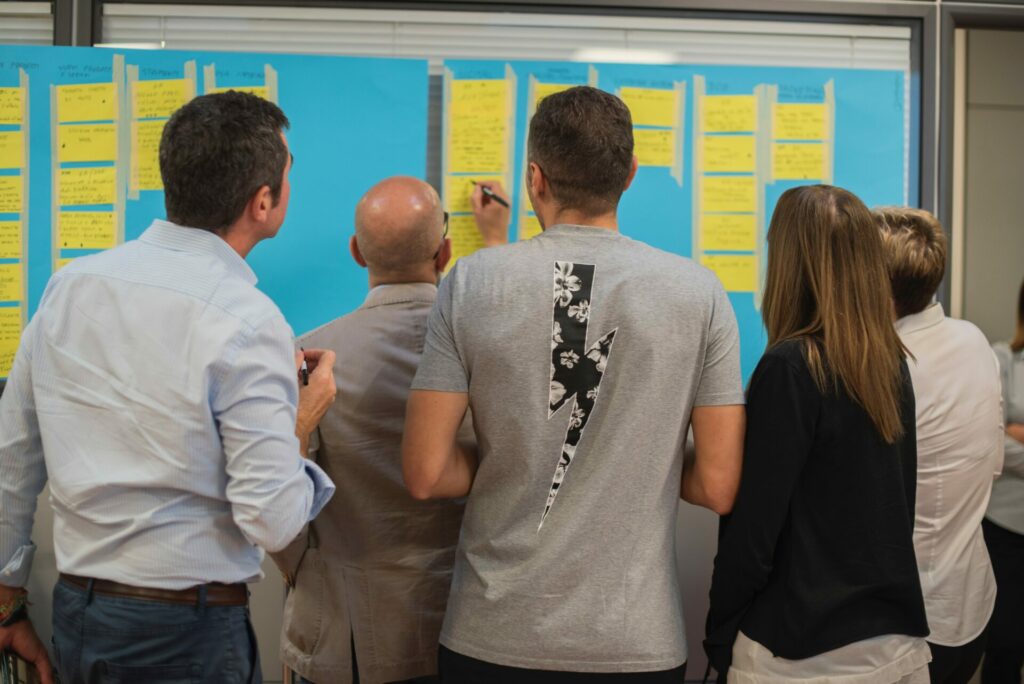
What is the seven step problem solving process?
A problem solving process is a step-by-step framework from going from discovering a problem all the way through to implementing a solution.
With practice, this framework can become intuitive, and innovative companies tend to have a consistent and ongoing ability to discover and tackle challenges when they come up.
You might see everything from a four step problem solving process through to seven steps. While all these processes cover roughly the same ground, I’ve found a seven step problem solving process is helpful for making all key steps legible.
We’ll outline that process here and then follow with techniques you can use to explore and work on that step of the problem solving process with a group.
The seven-step problem solving process is:
1. Problem identification
The first stage of any problem solving process is to identify the problem(s) you need to solve. This often looks like using group discussions and activities to help a group surface and effectively articulate the challenges they’re facing and wish to resolve.
Be sure to align with your team on the exact definition and nature of the problem you’re solving. An effective process is one where everyone is pulling in the same direction – ensure clarity and alignment now to help avoid misunderstandings later.
2. Problem analysis and refinement
The process of problem analysis means ensuring that the problem you are seeking to solve is the right problem . Choosing the right problem to solve means you are on the right path to creating the right solution.
At this stage, you may look deeper at the problem you identified to try and discover the root cause at the level of people or process. You may also spend some time sourcing data, consulting relevant parties and creating and refining a problem statement.
Problem refinement means adjusting scope or focus of the problem you will be aiming to solve based on what comes up during your analysis. As you analyze data sources, you might discover that the root cause means you need to adjust your problem statement. Alternatively, you might find that your original problem statement is too big to be meaningful approached within your current project.
Remember that the goal of any problem refinement is to help set the stage for effective solution development and deployment. Set the right focus and get buy-in from your team here and you’ll be well positioned to move forward with confidence.
3. Solution generation
Once your group has nailed down the particulars of the problem you wish to solve, you want to encourage a free flow of ideas connecting to solving that problem. This can take the form of problem solving games that encourage creative thinking or techniquess designed to produce working prototypes of possible solutions.
The key to ensuring the success of this stage of the problem solving process is to encourage quick, creative thinking and create an open space where all ideas are considered. The best solutions can often come from unlikely places and by using problem solving techniques that celebrate invention, you might come up with solution gold.
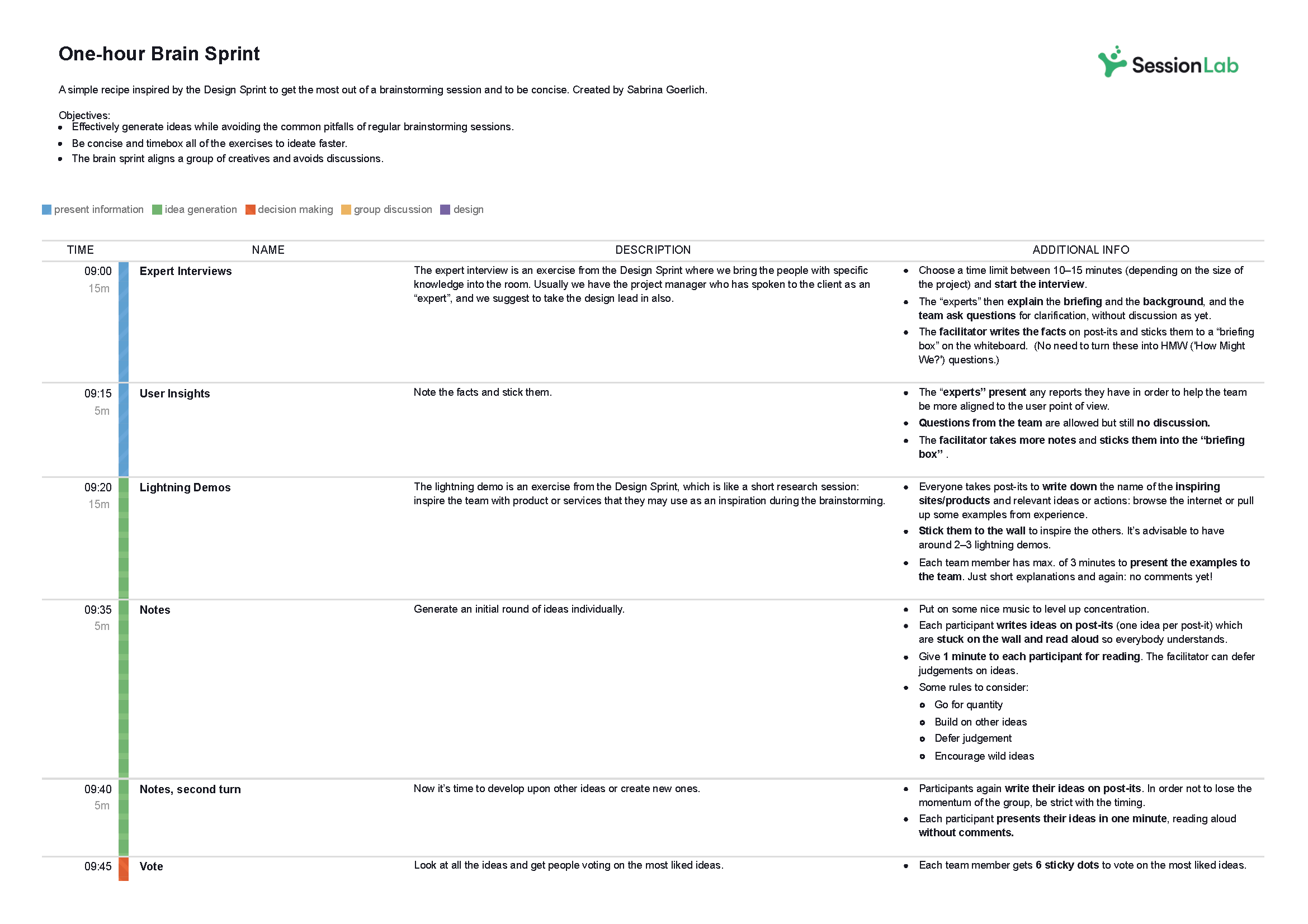
4. Solution development
No solution is perfect right out of the gate. It’s important to discuss and develop the solutions your group has come up with over the course of following the previous problem solving steps in order to arrive at the best possible solution. Problem solving games used in this stage involve lots of critical thinking, measuring potential effort and impact, and looking at possible solutions analytically.
During this stage, you will often ask your team to iterate and improve upon your front-running solutions and develop them further. Remember that problem solving strategies always benefit from a multitude of voices and opinions, and not to let ego get involved when it comes to choosing which solutions to develop and take further.
Finding the best solution is the goal of all problem solving workshops and here is the place to ensure that your solution is well thought out, sufficiently robust and fit for purpose.
5. Decision making and planning
Nearly there! Once you’ve got a set of possible, you’ll need to make a decision on which to implement. This can be a consensus-based group decision or it might be for a leader or major stakeholder to decide. You’ll find a set of effective decision making methods below.
Once your group has reached consensus and selected a solution, there are some additional actions that also need to be decided upon. You’ll want to work on allocating ownership of the project, figure out who will do what, how the success of the solution will be measured and decide the next course of action.
Set clear accountabilities, actions, timeframes, and follow-ups for your chosen solution. Make these decisions and set clear next-steps in the problem solving workshop so that everyone is aligned and you can move forward effectively as a group.
Ensuring that you plan for the roll-out of a solution is one of the most important problem solving steps. Without adequate planning or oversight, it can prove impossible to measure success or iterate further if the problem was not solved.
6. Solution implementation
This is what we were waiting for! All problem solving processes have the end goal of implementing an effective and impactful solution that your group has confidence in.
Project management and communication skills are key here – your solution may need to adjust when out in the wild or you might discover new challenges along the way. For some solutions, you might also implement a test with a small group and monitor results before rolling it out to an entire company.
You should have a clear owner for your solution who will oversee the plans you made together and help ensure they’re put into place. This person will often coordinate the implementation team and set-up processes to measure the efficacy of your solution too.
7. Solution evaluation
So you and your team developed a great solution to a problem and have a gut feeling it’s been solved. Work done, right? Wrong. All problem solving strategies benefit from evaluation, consideration, and feedback.
You might find that the solution does not work for everyone, might create new problems, or is potentially so successful that you will want to roll it out to larger teams or as part of other initiatives.
None of that is possible without taking the time to evaluate the success of the solution you developed in your problem solving model and adjust if necessary.
Remember that the problem solving process is often iterative and it can be common to not solve complex issues on the first try. Even when this is the case, you and your team will have generated learning that will be important for future problem solving workshops or in other parts of the organization.
It’s also worth underlining how important record keeping is throughout the problem solving process. If a solution didn’t work, you need to have the data and records to see why that was the case. If you go back to the drawing board, notes from the previous workshop can help save time.
What does an effective problem solving process look like?
Every effective problem solving process begins with an agenda . In our experience, a well-structured problem solving workshop is one of the best methods for successfully guiding a group from exploring a problem to implementing a solution.
The format of a workshop ensures that you can get buy-in from your group, encourage free-thinking and solution exploration before making a decision on what to implement following the session.
This Design Sprint 2.0 template is an effective problem solving process from top agency AJ&Smart. It’s a great format for the entire problem solving process, with four-days of workshops designed to surface issues, explore solutions and even test a solution.
Check it for an example of how you might structure and run a problem solving process and feel free to copy and adjust it your needs!
For a shorter process you can run in a single afternoon, this remote problem solving agenda will guide you effectively in just a couple of hours.
Whatever the length of your workshop, by using SessionLab, it’s easy to go from an idea to a complete agenda . Start by dragging and dropping your core problem solving activities into place . Add timings, breaks and necessary materials before sharing your agenda with your colleagues.
The resulting agenda will be your guide to an effective and productive problem solving session that will also help you stay organized on the day!
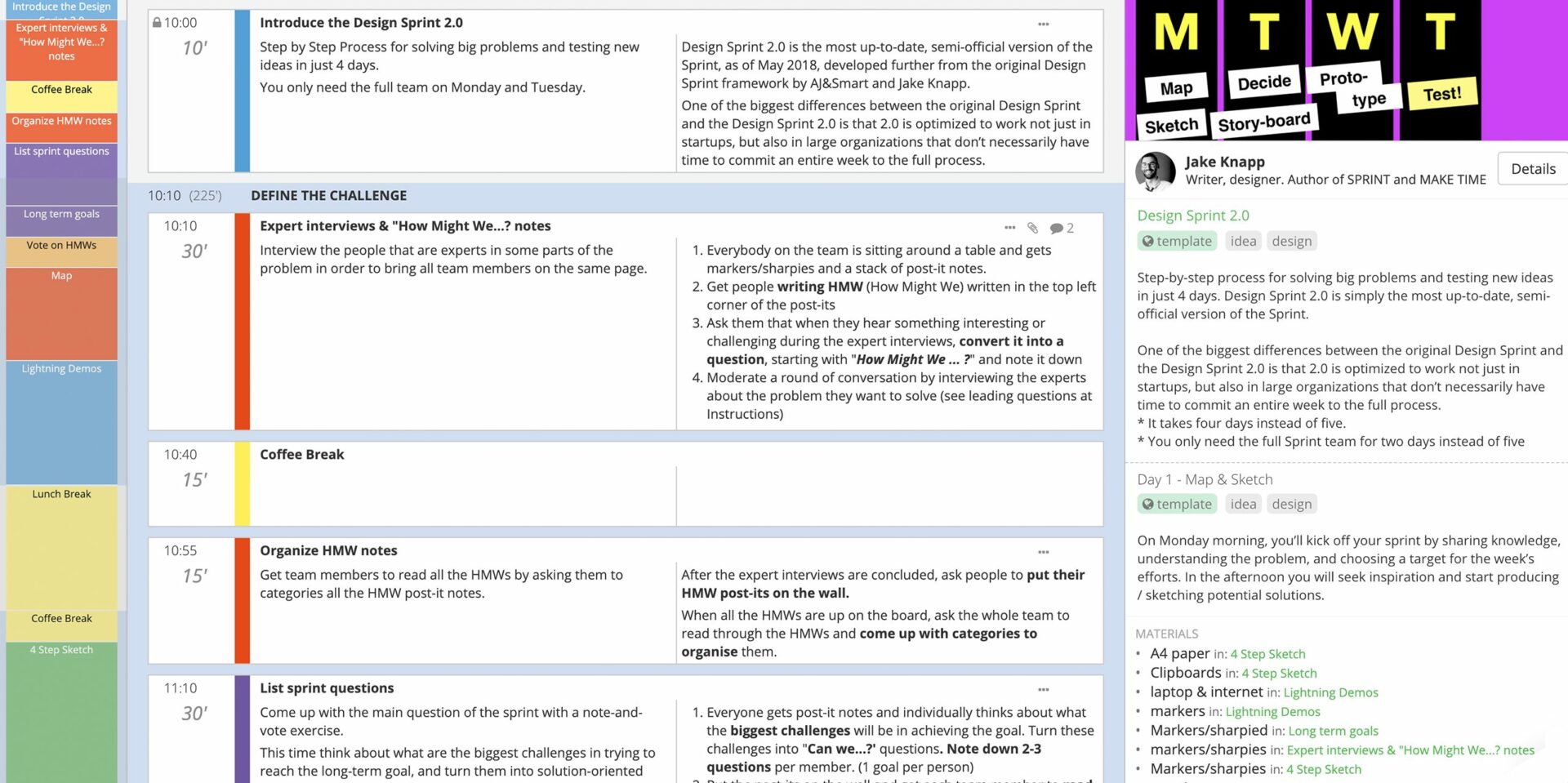
Complete problem-solving methods
In this section, we’ll look at in-depth problem-solving methods that provide a complete end-to-end process for developing effective solutions. These will help guide your team from the discovery and definition of a problem through to delivering the right solution.
If you’re looking for an all-encompassing method or problem-solving model, these processes are a great place to start. They’ll ask your team to challenge preconceived ideas and adopt a mindset for solving problems more effectively.
Six Thinking Hats
Individual approaches to solving a problem can be very different based on what team or role an individual holds. It can be easy for existing biases or perspectives to find their way into the mix, or for internal politics to direct a conversation.
Six Thinking Hats is a classic method for identifying the problems that need to be solved and enables your team to consider them from different angles, whether that is by focusing on facts and data, creative solutions, or by considering why a particular solution might not work.
Like all problem-solving frameworks, Six Thinking Hats is effective at helping teams remove roadblocks from a conversation or discussion and come to terms with all the aspects necessary to solve complex problems.
The Six Thinking Hats #creative thinking #meeting facilitation #problem solving #issue resolution #idea generation #conflict resolution The Six Thinking Hats are used by individuals and groups to separate out conflicting styles of thinking. They enable and encourage a group of people to think constructively together in exploring and implementing change, rather than using argument to fight over who is right and who is wrong.
Lightning Decision Jam
Featured courtesy of Jonathan Courtney of AJ&Smart Berlin, Lightning Decision Jam is one of those strategies that should be in every facilitation toolbox. Exploring problems and finding solutions is often creative in nature, though as with any creative process, there is the potential to lose focus and get lost.
Unstructured discussions might get you there in the end, but it’s much more effective to use a method that creates a clear process and team focus.
In Lightning Decision Jam, participants are invited to begin by writing challenges, concerns, or mistakes on post-its without discussing them before then being invited by the moderator to present them to the group.
From there, the team vote on which problems to solve and are guided through steps that will allow them to reframe those problems, create solutions and then decide what to execute on.
By deciding the problems that need to be solved as a team before moving on, this group process is great for ensuring the whole team is aligned and can take ownership over the next stages.
Lightning Decision Jam (LDJ) #action #decision making #problem solving #issue analysis #innovation #design #remote-friendly It doesn’t matter where you work and what your job role is, if you work with other people together as a team, you will always encounter the same challenges: Unclear goals and miscommunication that cause busy work and overtime Unstructured meetings that leave attendants tired, confused and without clear outcomes. Frustration builds up because internal challenges to productivity are not addressed Sudden changes in priorities lead to a loss of focus and momentum Muddled compromise takes the place of clear decision- making, leaving everybody to come up with their own interpretation. In short, a lack of structure leads to a waste of time and effort, projects that drag on for too long and frustrated, burnt out teams. AJ&Smart has worked with some of the most innovative, productive companies in the world. What sets their teams apart from others is not better tools, bigger talent or more beautiful offices. The secret sauce to becoming a more productive, more creative and happier team is simple: Replace all open discussion or brainstorming with a structured process that leads to more ideas, clearer decisions and better outcomes. When a good process provides guardrails and a clear path to follow, it becomes easier to come up with ideas, make decisions and solve problems. This is why AJ&Smart created Lightning Decision Jam (LDJ). It’s a simple and short, but powerful group exercise that can be run either in-person, in the same room, or remotely with distributed teams.
Problem Definition Process
While problems can be complex, the problem-solving methods you use to identify and solve those problems can often be simple in design.
By taking the time to truly identify and define a problem before asking the group to reframe the challenge as an opportunity, this method is a great way to enable change.
Begin by identifying a focus question and exploring the ways in which it manifests before splitting into five teams who will each consider the problem using a different method: escape, reversal, exaggeration, distortion or wishful. Teams develop a problem objective and create ideas in line with their method before then feeding them back to the group.
This method is great for enabling in-depth discussions while also creating space for finding creative solutions too!
Problem Definition #problem solving #idea generation #creativity #online #remote-friendly A problem solving technique to define a problem, challenge or opportunity and to generate ideas.
The 5 Whys
Sometimes, a group needs to go further with their strategies and analyze the root cause at the heart of organizational issues. An RCA or root cause analysis is the process of identifying what is at the heart of business problems or recurring challenges.
The 5 Whys is a simple and effective method of helping a group go find the root cause of any problem or challenge and conduct analysis that will deliver results.
By beginning with the creation of a problem statement and going through five stages to refine it, The 5 Whys provides everything you need to truly discover the cause of an issue.
The 5 Whys #hyperisland #innovation This simple and powerful method is useful for getting to the core of a problem or challenge. As the title suggests, the group defines a problems, then asks the question “why” five times, often using the resulting explanation as a starting point for creative problem solving.
World Cafe is a simple but powerful facilitation technique to help bigger groups to focus their energy and attention on solving complex problems.
World Cafe enables this approach by creating a relaxed atmosphere where participants are able to self-organize and explore topics relevant and important to them which are themed around a central problem-solving purpose. Create the right atmosphere by modeling your space after a cafe and after guiding the group through the method, let them take the lead!
Making problem-solving a part of your organization’s culture in the long term can be a difficult undertaking. More approachable formats like World Cafe can be especially effective in bringing people unfamiliar with workshops into the fold.
World Cafe #hyperisland #innovation #issue analysis World Café is a simple yet powerful method, originated by Juanita Brown, for enabling meaningful conversations driven completely by participants and the topics that are relevant and important to them. Facilitators create a cafe-style space and provide simple guidelines. Participants then self-organize and explore a set of relevant topics or questions for conversation.
Discovery & Action Dialogue (DAD)
One of the best approaches is to create a safe space for a group to share and discover practices and behaviors that can help them find their own solutions.
With DAD, you can help a group choose which problems they wish to solve and which approaches they will take to do so. It’s great at helping remove resistance to change and can help get buy-in at every level too!
This process of enabling frontline ownership is great in ensuring follow-through and is one of the methods you will want in your toolbox as a facilitator.
Discovery & Action Dialogue (DAD) #idea generation #liberating structures #action #issue analysis #remote-friendly DADs make it easy for a group or community to discover practices and behaviors that enable some individuals (without access to special resources and facing the same constraints) to find better solutions than their peers to common problems. These are called positive deviant (PD) behaviors and practices. DADs make it possible for people in the group, unit, or community to discover by themselves these PD practices. DADs also create favorable conditions for stimulating participants’ creativity in spaces where they can feel safe to invent new and more effective practices. Resistance to change evaporates as participants are unleashed to choose freely which practices they will adopt or try and which problems they will tackle. DADs make it possible to achieve frontline ownership of solutions.
Design Sprint 2.0
Want to see how a team can solve big problems and move forward with prototyping and testing solutions in a few days? The Design Sprint 2.0 template from Jake Knapp, author of Sprint, is a complete agenda for a with proven results.
Developing the right agenda can involve difficult but necessary planning. Ensuring all the correct steps are followed can also be stressful or time-consuming depending on your level of experience.
Use this complete 4-day workshop template if you are finding there is no obvious solution to your challenge and want to focus your team around a specific problem that might require a shortcut to launching a minimum viable product or waiting for the organization-wide implementation of a solution.
Open space technology
Open space technology- developed by Harrison Owen – creates a space where large groups are invited to take ownership of their problem solving and lead individual sessions. Open space technology is a great format when you have a great deal of expertise and insight in the room and want to allow for different takes and approaches on a particular theme or problem you need to be solved.
Start by bringing your participants together to align around a central theme and focus their efforts. Explain the ground rules to help guide the problem-solving process and then invite members to identify any issue connecting to the central theme that they are interested in and are prepared to take responsibility for.
Once participants have decided on their approach to the core theme, they write their issue on a piece of paper, announce it to the group, pick a session time and place, and post the paper on the wall. As the wall fills up with sessions, the group is then invited to join the sessions that interest them the most and which they can contribute to, then you’re ready to begin!
Everyone joins the problem-solving group they’ve signed up to, record the discussion and if appropriate, findings can then be shared with the rest of the group afterward.
Open Space Technology #action plan #idea generation #problem solving #issue analysis #large group #online #remote-friendly Open Space is a methodology for large groups to create their agenda discerning important topics for discussion, suitable for conferences, community gatherings and whole system facilitation
Techniques to identify and analyze problems
Using a problem-solving method to help a team identify and analyze a problem can be a quick and effective addition to any workshop or meeting.
While further actions are always necessary, you can generate momentum and alignment easily, and these activities are a great place to get started.
We’ve put together this list of techniques to help you and your team with problem identification, analysis, and discussion that sets the foundation for developing effective solutions.
Let’s take a look!
Fishbone Analysis
Organizational or team challenges are rarely simple, and it’s important to remember that one problem can be an indication of something that goes deeper and may require further consideration to be solved.
Fishbone Analysis helps groups to dig deeper and understand the origins of a problem. It’s a great example of a root cause analysis method that is simple for everyone on a team to get their head around.
Participants in this activity are asked to annotate a diagram of a fish, first adding the problem or issue to be worked on at the head of a fish before then brainstorming the root causes of the problem and adding them as bones on the fish.
Using abstractions such as a diagram of a fish can really help a team break out of their regular thinking and develop a creative approach.
Fishbone Analysis #problem solving ##root cause analysis #decision making #online facilitation A process to help identify and understand the origins of problems, issues or observations.
Problem Tree
Encouraging visual thinking can be an essential part of many strategies. By simply reframing and clarifying problems, a group can move towards developing a problem solving model that works for them.
In Problem Tree, groups are asked to first brainstorm a list of problems – these can be design problems, team problems or larger business problems – and then organize them into a hierarchy. The hierarchy could be from most important to least important or abstract to practical, though the key thing with problem solving games that involve this aspect is that your group has some way of managing and sorting all the issues that are raised.
Once you have a list of problems that need to be solved and have organized them accordingly, you’re then well-positioned for the next problem solving steps.
Problem tree #define intentions #create #design #issue analysis A problem tree is a tool to clarify the hierarchy of problems addressed by the team within a design project; it represents high level problems or related sublevel problems.
SWOT Analysis
Chances are you’ve heard of the SWOT Analysis before. This problem-solving method focuses on identifying strengths, weaknesses, opportunities, and threats is a tried and tested method for both individuals and teams.
Start by creating a desired end state or outcome and bare this in mind – any process solving model is made more effective by knowing what you are moving towards. Create a quadrant made up of the four categories of a SWOT analysis and ask participants to generate ideas based on each of those quadrants.
Once you have those ideas assembled in their quadrants, cluster them together based on their affinity with other ideas. These clusters are then used to facilitate group conversations and move things forward.
SWOT analysis #gamestorming #problem solving #action #meeting facilitation The SWOT Analysis is a long-standing technique of looking at what we have, with respect to the desired end state, as well as what we could improve on. It gives us an opportunity to gauge approaching opportunities and dangers, and assess the seriousness of the conditions that affect our future. When we understand those conditions, we can influence what comes next.
Agreement-Certainty Matrix
Not every problem-solving approach is right for every challenge, and deciding on the right method for the challenge at hand is a key part of being an effective team.
The Agreement Certainty matrix helps teams align on the nature of the challenges facing them. By sorting problems from simple to chaotic, your team can understand what methods are suitable for each problem and what they can do to ensure effective results.
If you are already using Liberating Structures techniques as part of your problem-solving strategy, the Agreement-Certainty Matrix can be an invaluable addition to your process. We’ve found it particularly if you are having issues with recurring problems in your organization and want to go deeper in understanding the root cause.
Agreement-Certainty Matrix #issue analysis #liberating structures #problem solving You can help individuals or groups avoid the frequent mistake of trying to solve a problem with methods that are not adapted to the nature of their challenge. The combination of two questions makes it possible to easily sort challenges into four categories: simple, complicated, complex , and chaotic . A problem is simple when it can be solved reliably with practices that are easy to duplicate. It is complicated when experts are required to devise a sophisticated solution that will yield the desired results predictably. A problem is complex when there are several valid ways to proceed but outcomes are not predictable in detail. Chaotic is when the context is too turbulent to identify a path forward. A loose analogy may be used to describe these differences: simple is like following a recipe, complicated like sending a rocket to the moon, complex like raising a child, and chaotic is like the game “Pin the Tail on the Donkey.” The Liberating Structures Matching Matrix in Chapter 5 can be used as the first step to clarify the nature of a challenge and avoid the mismatches between problems and solutions that are frequently at the root of chronic, recurring problems.
Organizing and charting a team’s progress can be important in ensuring its success. SQUID (Sequential Question and Insight Diagram) is a great model that allows a team to effectively switch between giving questions and answers and develop the skills they need to stay on track throughout the process.
Begin with two different colored sticky notes – one for questions and one for answers – and with your central topic (the head of the squid) on the board. Ask the group to first come up with a series of questions connected to their best guess of how to approach the topic. Ask the group to come up with answers to those questions, fix them to the board and connect them with a line. After some discussion, go back to question mode by responding to the generated answers or other points on the board.
It’s rewarding to see a diagram grow throughout the exercise, and a completed SQUID can provide a visual resource for future effort and as an example for other teams.
SQUID #gamestorming #project planning #issue analysis #problem solving When exploring an information space, it’s important for a group to know where they are at any given time. By using SQUID, a group charts out the territory as they go and can navigate accordingly. SQUID stands for Sequential Question and Insight Diagram.
To continue with our nautical theme, Speed Boat is a short and sweet activity that can help a team quickly identify what employees, clients or service users might have a problem with and analyze what might be standing in the way of achieving a solution.
Methods that allow for a group to make observations, have insights and obtain those eureka moments quickly are invaluable when trying to solve complex problems.
In Speed Boat, the approach is to first consider what anchors and challenges might be holding an organization (or boat) back. Bonus points if you are able to identify any sharks in the water and develop ideas that can also deal with competitors!
Speed Boat #gamestorming #problem solving #action Speedboat is a short and sweet way to identify what your employees or clients don’t like about your product/service or what’s standing in the way of a desired goal.
The Journalistic Six
Some of the most effective ways of solving problems is by encouraging teams to be more inclusive and diverse in their thinking.
Based on the six key questions journalism students are taught to answer in articles and news stories, The Journalistic Six helps create teams to see the whole picture. By using who, what, when, where, why, and how to facilitate the conversation and encourage creative thinking, your team can make sure that the problem identification and problem analysis stages of the are covered exhaustively and thoughtfully. Reporter’s notebook and dictaphone optional.
The Journalistic Six – Who What When Where Why How #idea generation #issue analysis #problem solving #online #creative thinking #remote-friendly A questioning method for generating, explaining, investigating ideas.
Individual and group perspectives are incredibly important, but what happens if people are set in their minds and need a change of perspective in order to approach a problem more effectively?
Flip It is a method we love because it is both simple to understand and run, and allows groups to understand how their perspectives and biases are formed.
Participants in Flip It are first invited to consider concerns, issues, or problems from a perspective of fear and write them on a flip chart. Then, the group is asked to consider those same issues from a perspective of hope and flip their understanding.
No problem and solution is free from existing bias and by changing perspectives with Flip It, you can then develop a problem solving model quickly and effectively.
Flip It! #gamestorming #problem solving #action Often, a change in a problem or situation comes simply from a change in our perspectives. Flip It! is a quick game designed to show players that perspectives are made, not born.
LEGO Challenge
Now for an activity that is a little out of the (toy) box. LEGO Serious Play is a facilitation methodology that can be used to improve creative thinking and problem-solving skills.
The LEGO Challenge includes giving each member of the team an assignment that is hidden from the rest of the group while they create a structure without speaking.
What the LEGO challenge brings to the table is a fun working example of working with stakeholders who might not be on the same page to solve problems. Also, it’s LEGO! Who doesn’t love LEGO!
LEGO Challenge #hyperisland #team A team-building activity in which groups must work together to build a structure out of LEGO, but each individual has a secret “assignment” which makes the collaborative process more challenging. It emphasizes group communication, leadership dynamics, conflict, cooperation, patience and problem solving strategy.
What, So What, Now What?
If not carefully managed, the problem identification and problem analysis stages of the problem-solving process can actually create more problems and misunderstandings.
The What, So What, Now What? problem-solving activity is designed to help collect insights and move forward while also eliminating the possibility of disagreement when it comes to identifying, clarifying, and analyzing organizational or work problems.
Facilitation is all about bringing groups together so that might work on a shared goal and the best problem-solving strategies ensure that teams are aligned in purpose, if not initially in opinion or insight.
Throughout the three steps of this game, you give everyone on a team to reflect on a problem by asking what happened, why it is important, and what actions should then be taken.
This can be a great activity for bringing our individual perceptions about a problem or challenge and contextualizing it in a larger group setting. This is one of the most important problem-solving skills you can bring to your organization.
W³ – What, So What, Now What? #issue analysis #innovation #liberating structures You can help groups reflect on a shared experience in a way that builds understanding and spurs coordinated action while avoiding unproductive conflict. It is possible for every voice to be heard while simultaneously sifting for insights and shaping new direction. Progressing in stages makes this practical—from collecting facts about What Happened to making sense of these facts with So What and finally to what actions logically follow with Now What . The shared progression eliminates most of the misunderstandings that otherwise fuel disagreements about what to do. Voila!
Journalists
Problem analysis can be one of the most important and decisive stages of all problem-solving tools. Sometimes, a team can become bogged down in the details and are unable to move forward.
Journalists is an activity that can avoid a group from getting stuck in the problem identification or problem analysis stages of the process.
In Journalists, the group is invited to draft the front page of a fictional newspaper and figure out what stories deserve to be on the cover and what headlines those stories will have. By reframing how your problems and challenges are approached, you can help a team move productively through the process and be better prepared for the steps to follow.
Journalists #vision #big picture #issue analysis #remote-friendly This is an exercise to use when the group gets stuck in details and struggles to see the big picture. Also good for defining a vision.
Problem-solving techniques for brainstorming solutions
Now you have the context and background of the problem you are trying to solving, now comes the time to start ideating and thinking about how you’ll solve the issue.
Here, you’ll want to encourage creative, free thinking and speed. Get as many ideas out as possible and explore different perspectives so you have the raw material for the next step.
Looking at a problem from a new angle can be one of the most effective ways of creating an effective solution. TRIZ is a problem-solving tool that asks the group to consider what they must not do in order to solve a challenge.
By reversing the discussion, new topics and taboo subjects often emerge, allowing the group to think more deeply and create ideas that confront the status quo in a safe and meaningful way. If you’re working on a problem that you’ve tried to solve before, TRIZ is a great problem-solving method to help your team get unblocked.
Making Space with TRIZ #issue analysis #liberating structures #issue resolution You can clear space for innovation by helping a group let go of what it knows (but rarely admits) limits its success and by inviting creative destruction. TRIZ makes it possible to challenge sacred cows safely and encourages heretical thinking. The question “What must we stop doing to make progress on our deepest purpose?” induces seriously fun yet very courageous conversations. Since laughter often erupts, issues that are otherwise taboo get a chance to be aired and confronted. With creative destruction come opportunities for renewal as local action and innovation rush in to fill the vacuum. Whoosh!
Mindspin
Brainstorming is part of the bread and butter of the problem-solving process and all problem-solving strategies benefit from getting ideas out and challenging a team to generate solutions quickly.
With Mindspin, participants are encouraged not only to generate ideas but to do so under time constraints and by slamming down cards and passing them on. By doing multiple rounds, your team can begin with a free generation of possible solutions before moving on to developing those solutions and encouraging further ideation.
This is one of our favorite problem-solving activities and can be great for keeping the energy up throughout the workshop. Remember the importance of helping people become engaged in the process – energizing problem-solving techniques like Mindspin can help ensure your team stays engaged and happy, even when the problems they’re coming together to solve are complex.
MindSpin #teampedia #idea generation #problem solving #action A fast and loud method to enhance brainstorming within a team. Since this activity has more than round ideas that are repetitive can be ruled out leaving more creative and innovative answers to the challenge.
The Creativity Dice
One of the most useful problem solving skills you can teach your team is of approaching challenges with creativity, flexibility, and openness. Games like The Creativity Dice allow teams to overcome the potential hurdle of too much linear thinking and approach the process with a sense of fun and speed.
In The Creativity Dice, participants are organized around a topic and roll a dice to determine what they will work on for a period of 3 minutes at a time. They might roll a 3 and work on investigating factual information on the chosen topic. They might roll a 1 and work on identifying the specific goals, standards, or criteria for the session.
Encouraging rapid work and iteration while asking participants to be flexible are great skills to cultivate. Having a stage for idea incubation in this game is also important. Moments of pause can help ensure the ideas that are put forward are the most suitable.
The Creativity Dice #creativity #problem solving #thiagi #issue analysis Too much linear thinking is hazardous to creative problem solving. To be creative, you should approach the problem (or the opportunity) from different points of view. You should leave a thought hanging in mid-air and move to another. This skipping around prevents premature closure and lets your brain incubate one line of thought while you consciously pursue another.
Idea and Concept Development
Brainstorming without structure can quickly become chaotic or frustrating. In a problem-solving context, having an ideation framework to follow can help ensure your team is both creative and disciplined.
In this method, you’ll find an idea generation process that encourages your group to brainstorm effectively before developing their ideas and begin clustering them together. By using concepts such as Yes and…, more is more and postponing judgement, you can create the ideal conditions for brainstorming with ease.
Idea & Concept Development #hyperisland #innovation #idea generation Ideation and Concept Development is a process for groups to work creatively and collaboratively to generate creative ideas. It’s a general approach that can be adapted and customized to suit many different scenarios. It includes basic principles for idea generation and several steps for groups to work with. It also includes steps for idea selection and development.
Problem-solving techniques for developing and refining solutions
The success of any problem-solving process can be measured by the solutions it produces. After you’ve defined the issue, explored existing ideas, and ideated, it’s time to develop and refine your ideas in order to bring them closer to a solution that actually solves the problem.
Use these problem-solving techniques when you want to help your team think through their ideas and refine them as part of your problem solving process.
Improved Solutions
After a team has successfully identified a problem and come up with a few solutions, it can be tempting to call the work of the problem-solving process complete. That said, the first solution is not necessarily the best, and by including a further review and reflection activity into your problem-solving model, you can ensure your group reaches the best possible result.
One of a number of problem-solving games from Thiagi Group, Improved Solutions helps you go the extra mile and develop suggested solutions with close consideration and peer review. By supporting the discussion of several problems at once and by shifting team roles throughout, this problem-solving technique is a dynamic way of finding the best solution.
Improved Solutions #creativity #thiagi #problem solving #action #team You can improve any solution by objectively reviewing its strengths and weaknesses and making suitable adjustments. In this creativity framegame, you improve the solutions to several problems. To maintain objective detachment, you deal with a different problem during each of six rounds and assume different roles (problem owner, consultant, basher, booster, enhancer, and evaluator) during each round. At the conclusion of the activity, each player ends up with two solutions to her problem.
Four Step Sketch
Creative thinking and visual ideation does not need to be confined to the opening stages of your problem-solving strategies. Exercises that include sketching and prototyping on paper can be effective at the solution finding and development stage of the process, and can be great for keeping a team engaged.
By going from simple notes to a crazy 8s round that involves rapidly sketching 8 variations on their ideas before then producing a final solution sketch, the group is able to iterate quickly and visually. Problem-solving techniques like Four-Step Sketch are great if you have a group of different thinkers and want to change things up from a more textual or discussion-based approach.
Four-Step Sketch #design sprint #innovation #idea generation #remote-friendly The four-step sketch is an exercise that helps people to create well-formed concepts through a structured process that includes: Review key information Start design work on paper, Consider multiple variations , Create a detailed solution . This exercise is preceded by a set of other activities allowing the group to clarify the challenge they want to solve. See how the Four Step Sketch exercise fits into a Design Sprint
Ensuring that everyone in a group is able to contribute to a discussion is vital during any problem solving process. Not only does this ensure all bases are covered, but its then easier to get buy-in and accountability when people have been able to contribute to the process.
1-2-4-All is a tried and tested facilitation technique where participants are asked to first brainstorm on a topic on their own. Next, they discuss and share ideas in a pair before moving into a small group. Those groups are then asked to present the best idea from their discussion to the rest of the team.
This method can be used in many different contexts effectively, though I find it particularly shines in the idea development stage of the process. Giving each participant time to concretize their ideas and develop them in progressively larger groups can create a great space for both innovation and psychological safety.
1-2-4-All #idea generation #liberating structures #issue analysis With this facilitation technique you can immediately include everyone regardless of how large the group is. You can generate better ideas and more of them faster than ever before. You can tap the know-how and imagination that is distributed widely in places not known in advance. Open, generative conversation unfolds. Ideas and solutions are sifted in rapid fashion. Most importantly, participants own the ideas, so follow-up and implementation is simplified. No buy-in strategies needed! Simple and elegant!
15% Solutions
Some problems are simpler than others and with the right problem-solving activities, you can empower people to take immediate actions that can help create organizational change.
Part of the liberating structures toolkit, 15% solutions is a problem-solving technique that focuses on finding and implementing solutions quickly. A process of iterating and making small changes quickly can help generate momentum and an appetite for solving complex problems.
Problem-solving strategies can live and die on whether people are onboard. Getting some quick wins is a great way of getting people behind the process.
It can be extremely empowering for a team to realize that problem-solving techniques can be deployed quickly and easily and delineate between things they can positively impact and those things they cannot change.
15% Solutions #action #liberating structures #remote-friendly You can reveal the actions, however small, that everyone can do immediately. At a minimum, these will create momentum, and that may make a BIG difference. 15% Solutions show that there is no reason to wait around, feel powerless, or fearful. They help people pick it up a level. They get individuals and the group to focus on what is within their discretion instead of what they cannot change. With a very simple question, you can flip the conversation to what can be done and find solutions to big problems that are often distributed widely in places not known in advance. Shifting a few grains of sand may trigger a landslide and change the whole landscape.
Problem-solving techniques for making decisions and planning
After your group is happy with the possible solutions you’ve developed, now comes the time to choose which to implement. There’s more than one way to make a decision and the best option is often dependant on the needs and set-up of your group.
Sometimes, it’s the case that you’ll want to vote as a group on what is likely to be the most impactful solution. Other times, it might be down to a decision maker or major stakeholder to make the final decision. Whatever your process, here’s some techniques you can use to help you make a decision during your problem solving process.
How-Now-Wow Matrix
The problem-solving process is often creative, as complex problems usually require a change of thinking and creative response in order to find the best solutions. While it’s common for the first stages to encourage creative thinking, groups can often gravitate to familiar solutions when it comes to the end of the process.
When selecting solutions, you don’t want to lose your creative energy! The How-Now-Wow Matrix from Gamestorming is a great problem-solving activity that enables a group to stay creative and think out of the box when it comes to selecting the right solution for a given problem.
Problem-solving techniques that encourage creative thinking and the ideation and selection of new solutions can be the most effective in organisational change. Give the How-Now-Wow Matrix a go, and not just for how pleasant it is to say out loud.
How-Now-Wow Matrix #gamestorming #idea generation #remote-friendly When people want to develop new ideas, they most often think out of the box in the brainstorming or divergent phase. However, when it comes to convergence, people often end up picking ideas that are most familiar to them. This is called a ‘creative paradox’ or a ‘creadox’. The How-Now-Wow matrix is an idea selection tool that breaks the creadox by forcing people to weigh each idea on 2 parameters.
Impact and Effort Matrix
All problem-solving techniques hope to not only find solutions to a given problem or challenge but to find the best solution. When it comes to finding a solution, groups are invited to put on their decision-making hats and really think about how a proposed idea would work in practice.
The Impact and Effort Matrix is one of the problem-solving techniques that fall into this camp, empowering participants to first generate ideas and then categorize them into a 2×2 matrix based on impact and effort.
Activities that invite critical thinking while remaining simple are invaluable. Use the Impact and Effort Matrix to move from ideation and towards evaluating potential solutions before then committing to them.
Impact and Effort Matrix #gamestorming #decision making #action #remote-friendly In this decision-making exercise, possible actions are mapped based on two factors: effort required to implement and potential impact. Categorizing ideas along these lines is a useful technique in decision making, as it obliges contributors to balance and evaluate suggested actions before committing to them.
If you’ve followed each of the problem-solving steps with your group successfully, you should move towards the end of your process with heaps of possible solutions developed with a specific problem in mind. But how do you help a group go from ideation to putting a solution into action?
Dotmocracy – or Dot Voting -is a tried and tested method of helping a team in the problem-solving process make decisions and put actions in place with a degree of oversight and consensus.
One of the problem-solving techniques that should be in every facilitator’s toolbox, Dot Voting is fast and effective and can help identify the most popular and best solutions and help bring a group to a decision effectively.
Dotmocracy #action #decision making #group prioritization #hyperisland #remote-friendly Dotmocracy is a simple method for group prioritization or decision-making. It is not an activity on its own, but a method to use in processes where prioritization or decision-making is the aim. The method supports a group to quickly see which options are most popular or relevant. The options or ideas are written on post-its and stuck up on a wall for the whole group to see. Each person votes for the options they think are the strongest, and that information is used to inform a decision.
Straddling the gap between decision making and planning, MoSCoW is a simple and effective method that allows a group team to easily prioritize a set of possible options.
Use this method in a problem solving process by collecting and summarizing all your possible solutions and then categorize them into 4 sections: “Must have”, “Should have”, “Could have”, or “Would like but won‘t get”.
This method is particularly useful when its less about choosing one possible solution and more about prioritorizing which to do first and which may not fit in the scope of your project. In my experience, complex challenges often require multiple small fixes, and this method can be a great way to move from a pile of things you’d all like to do to a structured plan.
MoSCoW #define intentions #create #design #action #remote-friendly MoSCoW is a method that allows the team to prioritize the different features that they will work on. Features are then categorized into “Must have”, “Should have”, “Could have”, or “Would like but won‘t get”. To be used at the beginning of a timeslot (for example during Sprint planning) and when planning is needed.
When it comes to managing the rollout of a solution, clarity and accountability are key factors in ensuring the success of the project. The RAACI chart is a simple but effective model for setting roles and responsibilities as part of a planning session.
Start by listing each person involved in the project and put them into the following groups in order to make it clear who is responsible for what during the rollout of your solution.
- Responsibility (Which person and/or team will be taking action?)
- Authority (At what “point” must the responsible person check in before going further?)
- Accountability (Who must the responsible person check in with?)
- Consultation (Who must be consulted by the responsible person before decisions are made?)
- Information (Who must be informed of decisions, once made?)
Ensure this information is easily accessible and use it to inform who does what and who is looped into discussions and kept up to date.
RAACI #roles and responsibility #teamwork #project management Clarifying roles and responsibilities, levels of autonomy/latitude in decision making, and levels of engagement among diverse stakeholders.
Problem-solving warm-up activities
All facilitators know that warm-ups and icebreakers are useful for any workshop or group process. Problem-solving workshops are no different.
Use these problem-solving techniques to warm up a group and prepare them for the rest of the process. Activating your group by tapping into some of the top problem-solving skills can be one of the best ways to see great outcomes from your session.
Check-in / Check-out
Solid processes are planned from beginning to end, and the best facilitators know that setting the tone and establishing a safe, open environment can be integral to a successful problem-solving process. Check-in / Check-out is a great way to begin and/or bookend a problem-solving workshop. Checking in to a session emphasizes that everyone will be seen, heard, and expected to contribute.
If you are running a series of meetings, setting a consistent pattern of checking in and checking out can really help your team get into a groove. We recommend this opening-closing activity for small to medium-sized groups though it can work with large groups if they’re disciplined!
Check-in / Check-out #team #opening #closing #hyperisland #remote-friendly Either checking-in or checking-out is a simple way for a team to open or close a process, symbolically and in a collaborative way. Checking-in/out invites each member in a group to be present, seen and heard, and to express a reflection or a feeling. Checking-in emphasizes presence, focus and group commitment; checking-out emphasizes reflection and symbolic closure.
Doodling Together
Thinking creatively and not being afraid to make suggestions are important problem-solving skills for any group or team, and warming up by encouraging these behaviors is a great way to start.
Doodling Together is one of our favorite creative ice breaker games – it’s quick, effective, and fun and can make all following problem-solving steps easier by encouraging a group to collaborate visually. By passing cards and adding additional items as they go, the workshop group gets into a groove of co-creation and idea development that is crucial to finding solutions to problems.
Doodling Together #collaboration #creativity #teamwork #fun #team #visual methods #energiser #icebreaker #remote-friendly Create wild, weird and often funny postcards together & establish a group’s creative confidence.
Show and Tell
You might remember some version of Show and Tell from being a kid in school and it’s a great problem-solving activity to kick off a session.
Asking participants to prepare a little something before a workshop by bringing an object for show and tell can help them warm up before the session has even begun! Games that include a physical object can also help encourage early engagement before moving onto more big-picture thinking.
By asking your participants to tell stories about why they chose to bring a particular item to the group, you can help teams see things from new perspectives and see both differences and similarities in the way they approach a topic. Great groundwork for approaching a problem-solving process as a team!
Show and Tell #gamestorming #action #opening #meeting facilitation Show and Tell taps into the power of metaphors to reveal players’ underlying assumptions and associations around a topic The aim of the game is to get a deeper understanding of stakeholders’ perspectives on anything—a new project, an organizational restructuring, a shift in the company’s vision or team dynamic.
Constellations
Who doesn’t love stars? Constellations is a great warm-up activity for any workshop as it gets people up off their feet, energized, and ready to engage in new ways with established topics. It’s also great for showing existing beliefs, biases, and patterns that can come into play as part of your session.
Using warm-up games that help build trust and connection while also allowing for non-verbal responses can be great for easing people into the problem-solving process and encouraging engagement from everyone in the group. Constellations is great in large spaces that allow for movement and is definitely a practical exercise to allow the group to see patterns that are otherwise invisible.
Constellations #trust #connection #opening #coaching #patterns #system Individuals express their response to a statement or idea by standing closer or further from a central object. Used with teams to reveal system, hidden patterns, perspectives.
Draw a Tree
Problem-solving games that help raise group awareness through a central, unifying metaphor can be effective ways to warm-up a group in any problem-solving model.
Draw a Tree is a simple warm-up activity you can use in any group and which can provide a quick jolt of energy. Start by asking your participants to draw a tree in just 45 seconds – they can choose whether it will be abstract or realistic.
Once the timer is up, ask the group how many people included the roots of the tree and use this as a means to discuss how we can ignore important parts of any system simply because they are not visible.
All problem-solving strategies are made more effective by thinking of problems critically and by exposing things that may not normally come to light. Warm-up games like Draw a Tree are great in that they quickly demonstrate some key problem-solving skills in an accessible and effective way.
Draw a Tree #thiagi #opening #perspectives #remote-friendly With this game you can raise awarness about being more mindful, and aware of the environment we live in.
Closing activities for a problem-solving process
Each step of the problem-solving workshop benefits from an intelligent deployment of activities, games, and techniques. Bringing your session to an effective close helps ensure that solutions are followed through on and that you also celebrate what has been achieved.
Here are some problem-solving activities you can use to effectively close a workshop or meeting and ensure the great work you’ve done can continue afterward.
One Breath Feedback
Maintaining attention and focus during the closing stages of a problem-solving workshop can be tricky and so being concise when giving feedback can be important. It’s easy to incur “death by feedback” should some team members go on for too long sharing their perspectives in a quick feedback round.
One Breath Feedback is a great closing activity for workshops. You give everyone an opportunity to provide feedback on what they’ve done but only in the space of a single breath. This keeps feedback short and to the point and means that everyone is encouraged to provide the most important piece of feedback to them.
One breath feedback #closing #feedback #action This is a feedback round in just one breath that excels in maintaining attention: each participants is able to speak during just one breath … for most people that’s around 20 to 25 seconds … unless of course you’ve been a deep sea diver in which case you’ll be able to do it for longer.
Who What When Matrix
Matrices feature as part of many effective problem-solving strategies and with good reason. They are easily recognizable, simple to use, and generate results.
The Who What When Matrix is a great tool to use when closing your problem-solving session by attributing a who, what and when to the actions and solutions you have decided upon. The resulting matrix is a simple, easy-to-follow way of ensuring your team can move forward.
Great solutions can’t be enacted without action and ownership. Your problem-solving process should include a stage for allocating tasks to individuals or teams and creating a realistic timeframe for those solutions to be implemented or checked out. Use this method to keep the solution implementation process clear and simple for all involved.
Who/What/When Matrix #gamestorming #action #project planning With Who/What/When matrix, you can connect people with clear actions they have defined and have committed to.
Response cards
Group discussion can comprise the bulk of most problem-solving activities and by the end of the process, you might find that your team is talked out!
Providing a means for your team to give feedback with short written notes can ensure everyone is head and can contribute without the need to stand up and talk. Depending on the needs of the group, giving an alternative can help ensure everyone can contribute to your problem-solving model in the way that makes the most sense for them.
Response Cards is a great way to close a workshop if you are looking for a gentle warm-down and want to get some swift discussion around some of the feedback that is raised.
Response Cards #debriefing #closing #structured sharing #questions and answers #thiagi #action It can be hard to involve everyone during a closing of a session. Some might stay in the background or get unheard because of louder participants. However, with the use of Response Cards, everyone will be involved in providing feedback or clarify questions at the end of a session.
Tips for effective problem solving
Problem-solving activities are only one part of the puzzle. While a great method can help unlock your team’s ability to solve problems, without a thoughtful approach and strong facilitation the solutions may not be fit for purpose.
Let’s take a look at some problem-solving tips you can apply to any process to help it be a success!
Clearly define the problem
Jumping straight to solutions can be tempting, though without first clearly articulating a problem, the solution might not be the right one. Many of the problem-solving activities below include sections where the problem is explored and clearly defined before moving on.
This is a vital part of the problem-solving process and taking the time to fully define an issue can save time and effort later. A clear definition helps identify irrelevant information and it also ensures that your team sets off on the right track.
Don’t jump to conclusions
It’s easy for groups to exhibit cognitive bias or have preconceived ideas about both problems and potential solutions. Be sure to back up any problem statements or potential solutions with facts, research, and adequate forethought.
The best techniques ask participants to be methodical and challenge preconceived notions. Make sure you give the group enough time and space to collect relevant information and consider the problem in a new way. By approaching the process with a clear, rational mindset, you’ll often find that better solutions are more forthcoming.
Try different approaches
Problems come in all shapes and sizes and so too should the methods you use to solve them. If you find that one approach isn’t yielding results and your team isn’t finding different solutions, try mixing it up. You’ll be surprised at how using a new creative activity can unblock your team and generate great solutions.
Don’t take it personally
Depending on the nature of your team or organizational problems, it’s easy for conversations to get heated. While it’s good for participants to be engaged in the discussions, ensure that emotions don’t run too high and that blame isn’t thrown around while finding solutions.
You’re all in it together, and even if your team or area is seeing problems, that isn’t necessarily a disparagement of you personally. Using facilitation skills to manage group dynamics is one effective method of helping conversations be more constructive.
Get the right people in the room
Your problem-solving method is often only as effective as the group using it. Getting the right people on the job and managing the number of people present is important too!
If the group is too small, you may not get enough different perspectives to effectively solve a problem. If the group is too large, you can go round and round during the ideation stages.
Creating the right group makeup is also important in ensuring you have the necessary expertise and skillset to both identify and follow up on potential solutions. Carefully consider who to include at each stage to help ensure your problem-solving method is followed and positioned for success.
Create psychologically safe spaces for discussion
Identifying a problem accurately also requires that all members of a group are able to contribute their views in an open and safe manner.
It can be tough for people to stand up and contribute if the problems or challenges are emotive or personal in nature. Try and create a psychologically safe space for these kinds of discussions and where possible, create regular opportunities for challenges to be brought up organically.
Document everything
The best solutions can take refinement, iteration, and reflection to come out. Get into a habit of documenting your process in order to keep all the learnings from the session and to allow ideas to mature and develop. Many of the methods below involve the creation of documents or shared resources. Be sure to keep and share these so everyone can benefit from the work done!
Bring a facilitator
Facilitation is all about making group processes easier. With a subject as potentially emotive and important as problem-solving, having an impartial third party in the form of a facilitator can make all the difference in finding great solutions and keeping the process moving. Consider bringing a facilitator to your problem-solving session to get better results and generate meaningful solutions!
Develop your problem-solving skills
It takes time and practice to be an effective problem solver. While some roles or participants might more naturally gravitate towards problem-solving, it can take development and planning to help everyone create better solutions.
You might develop a training program, run a problem-solving workshop or simply ask your team to practice using the techniques below. Check out our post on problem-solving skills to see how you and your group can develop the right mental process and be more resilient to issues too!
Design a great agenda
Workshops are a great format for solving problems. With the right approach, you can focus a group and help them find the solutions to their own problems. But designing a process can be time-consuming and finding the right activities can be difficult.
Check out our workshop planning guide to level-up your agenda design and start running more effective workshops. Need inspiration? Check out templates designed by expert facilitators to help you kickstart your process!
Save time and effort creating an effective problem solving process
A structured problem solving process is a surefire way of solving tough problems, discovering creative solutions and driving organizational change. But how can you design for successful outcomes?
With SessionLab, it’s easy to design engaging workshops that deliver results. Drag, drop and reorder blocks to build your agenda. When you make changes or update your agenda, your session timing adjusts automatically , saving you time on manual adjustments.
Collaborating with stakeholders or clients? Share your agenda with a single click and collaborate in real-time. No more sending documents back and forth over email.
Explore how to use SessionLab to design effective problem solving workshops or watch this five minute video to see the planner in action!
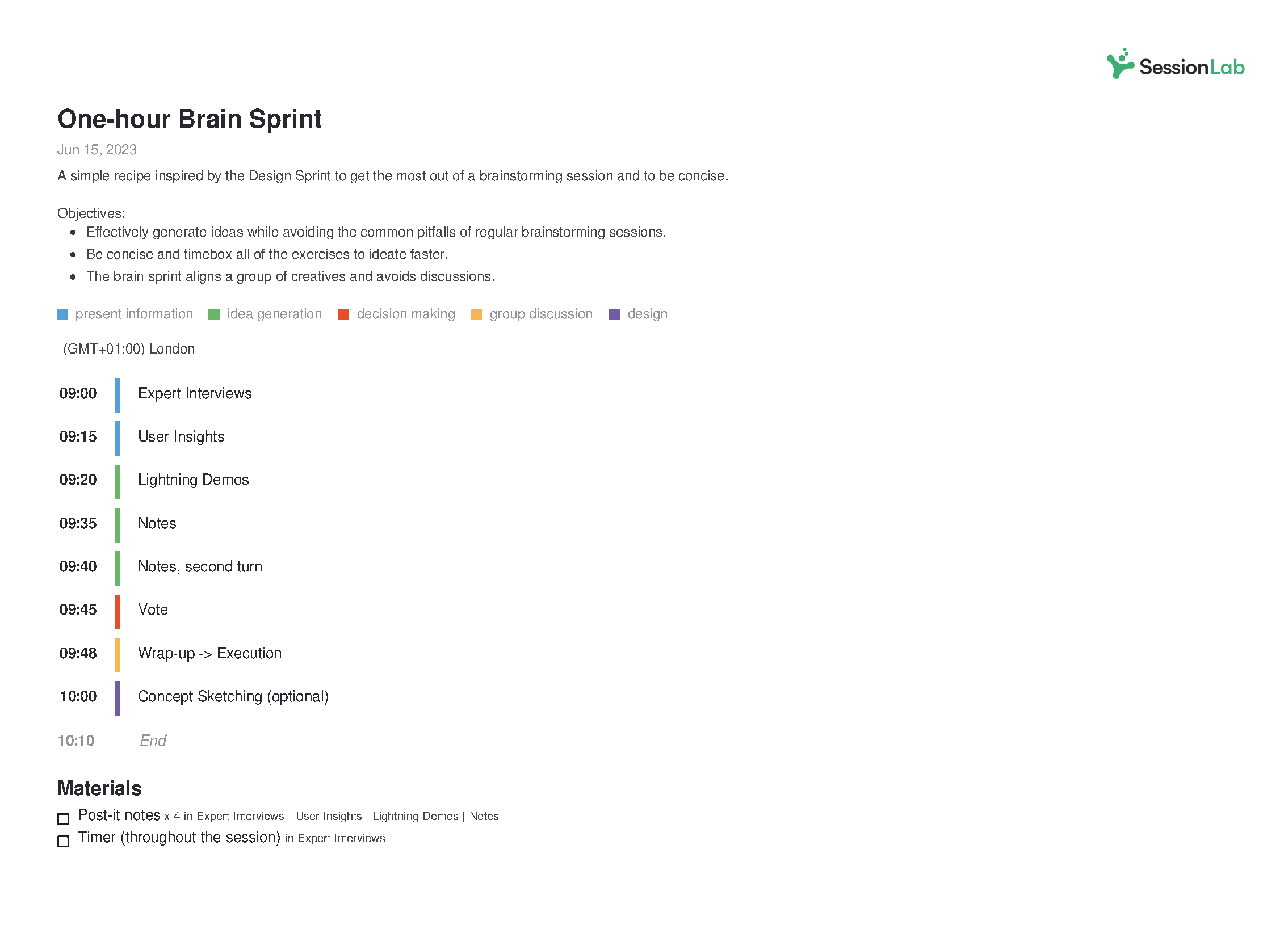
Over to you
The problem-solving process can often be as complicated and multifaceted as the problems they are set-up to solve. With the right problem-solving techniques and a mix of exercises designed to guide discussion and generate purposeful ideas, we hope we’ve given you the tools to find the best solutions as simply and easily as possible.
Is there a problem-solving technique that you are missing here? Do you have a favorite activity or method you use when facilitating? Let us know in the comments below, we’d love to hear from you!
thank you very much for these excellent techniques
Certainly wonderful article, very detailed. Shared!
Your list of techniques for problem solving can be helpfully extended by adding TRIZ to the list of techniques. TRIZ has 40 problem solving techniques derived from methods inventros and patent holders used to get new patents. About 10-12 are general approaches. many organization sponsor classes in TRIZ that are used to solve business problems or general organiztational problems. You can take a look at TRIZ and dwonload a free internet booklet to see if you feel it shound be included per your selection process.
Leave a Comment Cancel reply
Your email address will not be published. Required fields are marked *
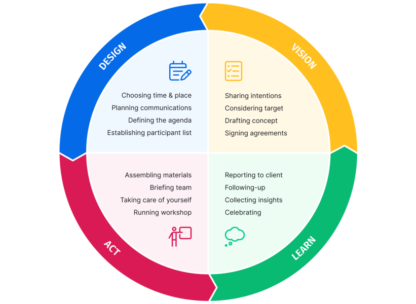
Going from a mere idea to a workshop that delivers results for your clients can feel like a daunting task. In this piece, we will shine a light on all the work behind the scenes and help you learn how to plan a workshop from start to finish. On a good day, facilitation can feel like effortless magic, but that is mostly the result of backstage work, foresight, and a lot of careful planning. Read on to learn a step-by-step approach to breaking the process of planning a workshop into small, manageable chunks. The flow starts with the first meeting with a client to define the purposes of a workshop.…

Effective online tools are a necessity for smooth and engaging virtual workshops and meetings. But how do you choose the right ones? Do you sometimes feel that the good old pen and paper or MS Office toolkit and email leaves you struggling to stay on top of managing and delivering your workshop? Fortunately, there are plenty of great workshop tools to make your life easier when you need to facilitate a meeting and lead workshops. In this post, we’ll share our favorite online tools you can use to make your life easier and run better workshops and meetings. In fact, there are plenty of free online workshop tools and meeting…
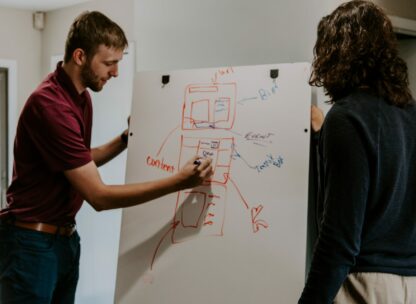
How does learning work? A clever 9-year-old once told me: “I know I am learning something new when I am surprised.” The science of adult learning tells us that, in order to learn new skills (which, unsurprisingly, is harder for adults to do than kids) grown-ups need to first get into a specific headspace. In a business, this approach is often employed in a training session where employees learn new skills or work on professional development. But how do you ensure your training is effective? In this guide, we'll explore how to create an effective training session plan and run engaging training sessions. As team leader, project manager, or consultant,…
Design your next workshop with SessionLab
Join the 150,000 facilitators using SessionLab
Sign up for free
- Book a Demo
Struggling to overcome challenges in your life? We all face problems, big and small, on a regular basis.
So how do you tackle them effectively? What are some key problem-solving strategies and skills that can guide you?
Effective problem-solving requires breaking issues down logically, generating solutions creatively, weighing choices critically, and adapting plans flexibly based on outcomes. Useful strategies range from leveraging past solutions that have worked to visualizing problems through diagrams. Core skills include analytical abilities, innovative thinking, and collaboration.
Want to improve your problem-solving skills? Keep reading to find out 17 effective problem-solving strategies, key skills, common obstacles to watch for, and tips on improving your overall problem-solving skills.
Key Takeaways:
- Effective problem-solving requires breaking down issues logically, generating multiple solutions creatively, weighing choices critically, and adapting plans based on outcomes.
- Useful problem-solving strategies range from leveraging past solutions to brainstorming with groups to visualizing problems through diagrams and models.
- Core skills include analytical abilities, innovative thinking, decision-making, and team collaboration to solve problems.
- Common obstacles include fear of failure, information gaps, fixed mindsets, confirmation bias, and groupthink.
- Boosting problem-solving skills involves learning from experts, actively practicing, soliciting feedback, and analyzing others’ success.
- Onethread’s project management capabilities align with effective problem-solving tenets – facilitating structured solutions, tracking progress, and capturing lessons learned.
What Is Problem-Solving?
Problem-solving is the process of understanding an issue, situation, or challenge that needs to be addressed and then systematically working through possible solutions to arrive at the best outcome.
It involves critical thinking, analysis, logic, creativity, research, planning, reflection, and patience in order to overcome obstacles and find effective answers to complex questions or problems.
The ultimate goal is to implement the chosen solution successfully.
What Are Problem-Solving Strategies?
Problem-solving strategies are like frameworks or methodologies that help us solve tricky puzzles or problems we face in the workplace, at home, or with friends.
Imagine you have a big jigsaw puzzle. One strategy might be to start with the corner pieces. Another could be looking for pieces with the same colors.
Just like in puzzles, in real life, we use different plans or steps to find solutions to problems. These strategies help us think clearly, make good choices, and find the best answers without getting too stressed or giving up.
Why Is It Important To Know Different Problem-Solving Strategies?
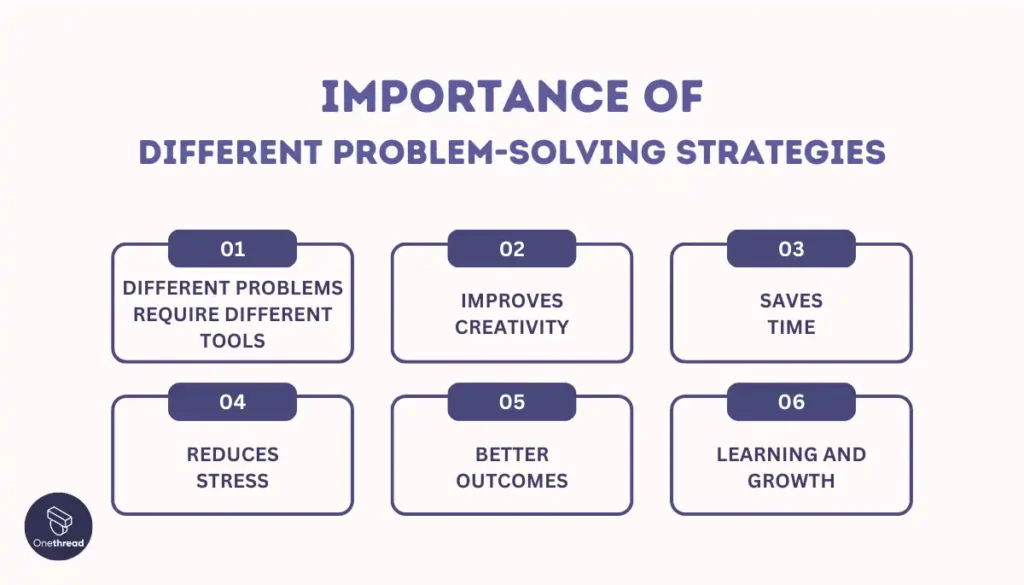
Knowing different problem-solving strategies is important because different types of problems often require different approaches to solve them effectively. Having a variety of strategies to choose from allows you to select the best method for the specific problem you are trying to solve.
This improves your ability to analyze issues thoroughly, develop solutions creatively, and tackle problems from multiple angles. Knowing multiple strategies also aids in overcoming roadblocks if your initial approach is not working.
Here are some reasons why you need to know different problem-solving strategies:
- Different Problems Require Different Tools: Just like you can’t use a hammer to fix everything, some problems need specific strategies to solve them.
- Improves Creativity: Knowing various strategies helps you think outside the box and come up with creative solutions.
- Saves Time: With the right strategy, you can solve problems faster instead of trying things that don’t work.
- Reduces Stress: When you know how to tackle a problem, it feels less scary and you feel more confident.
- Better Outcomes: Using the right strategy can lead to better solutions, making things work out better in the end.
- Learning and Growth: Each time you solve a problem, you learn something new, which makes you smarter and better at solving future problems.
Knowing different ways to solve problems helps you tackle anything that comes your way, making life a bit easier and more fun!
17 Effective Problem-Solving Strategies
Effective problem-solving strategies include breaking the problem into smaller parts, brainstorming multiple solutions, evaluating the pros and cons of each, and choosing the most viable option.
Critical thinking and creativity are essential in developing innovative solutions. Collaboration with others can also provide diverse perspectives and ideas.
By applying these strategies, you can tackle complex issues more effectively.
Now, consider a challenge you’re dealing with. Which strategy could help you find a solution? Here we will discuss key problem strategies in detail.
1. Use a Past Solution That Worked
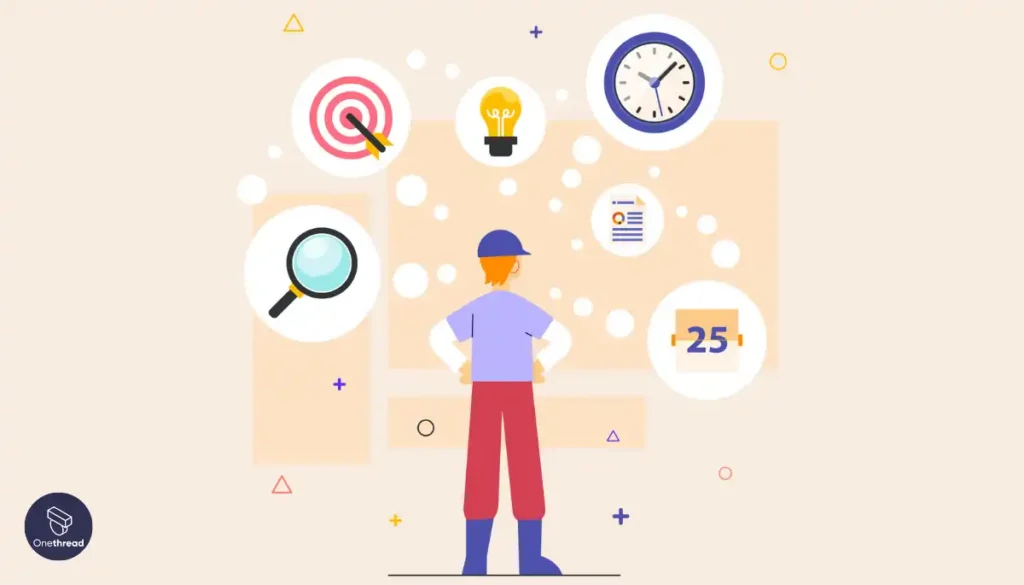
This strategy involves looking back at previous similar problems you have faced and the solutions that were effective in solving them.
It is useful when you are facing a problem that is very similar to something you have already solved. The main benefit is that you don’t have to come up with a brand new solution – you already know the method that worked before will likely work again.
However, the limitation is that the current problem may have some unique aspects or differences that mean your old solution is not fully applicable.
The ideal process is to thoroughly analyze the new challenge, identify the key similarities and differences versus the past case, adapt the old solution as needed to align with the current context, and then pilot it carefully before full implementation.
An example is using the same negotiation tactics from purchasing your previous home when putting in an offer on a new house. Key terms would be adjusted but overall it can save significant time versus developing a brand new strategy.
2. Brainstorm Solutions
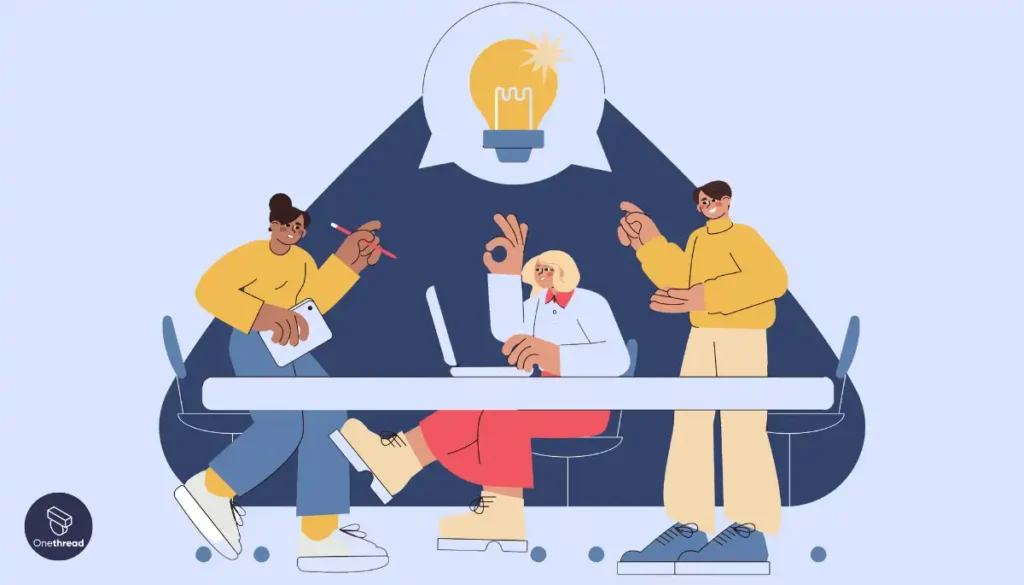
This involves gathering a group of people together to generate as many potential solutions to a problem as possible.
It is effective when you need creative ideas to solve a complex or challenging issue. By getting input from multiple people with diverse perspectives, you increase the likelihood of finding an innovative solution.
The main limitation is that brainstorming sessions can sometimes turn into unproductive gripe sessions or discussions rather than focusing on productive ideation —so they need to be properly facilitated.
The key to an effective brainstorming session is setting some basic ground rules upfront and having an experienced facilitator guide the discussion. Rules often include encouraging wild ideas, avoiding criticism of ideas during the ideation phase, and building on others’ ideas.
For instance, a struggling startup might hold a session where ideas for turnaround plans are generated and then formalized with financials and metrics.
3. Work Backward from the Solution
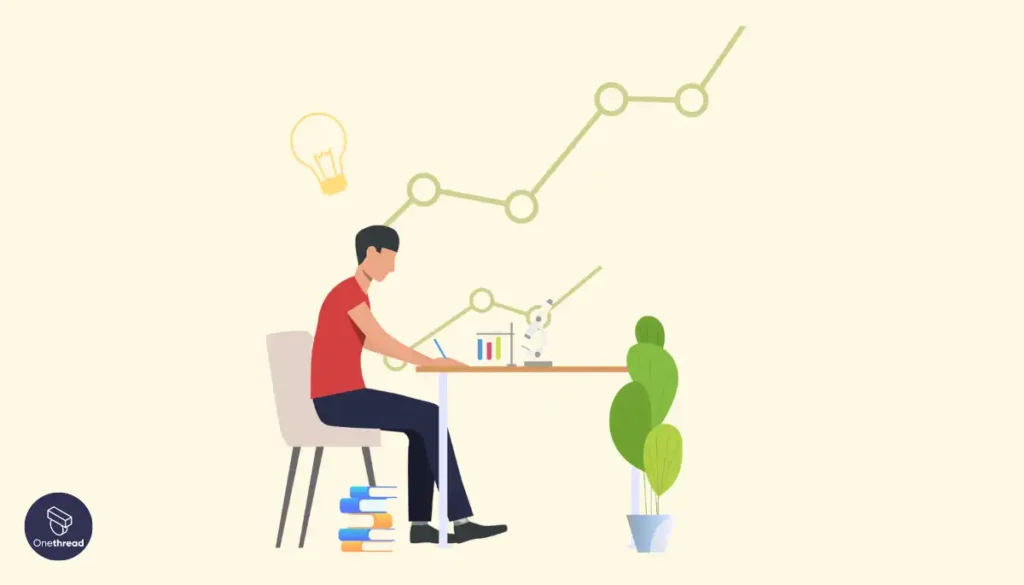
This technique involves envisioning that the problem has already been solved and then working step-by-step backward toward the current state.
This strategy is particularly helpful for long-term, multi-step problems. By starting from the imagined solution and identifying all the steps required to reach it, you can systematically determine the actions needed. It lets you tackle a big hairy problem through smaller, reversible steps.
A limitation is that this approach may not be possible if you cannot accurately envision the solution state to start with.
The approach helps drive logical systematic thinking for complex problem-solving, but should still be combined with creative brainstorming of alternative scenarios and solutions.
An example is planning for an event – you would imagine the successful event occurring, then determine the tasks needed the week before, two weeks before, etc. all the way back to the present.
4. Use the Kipling Method
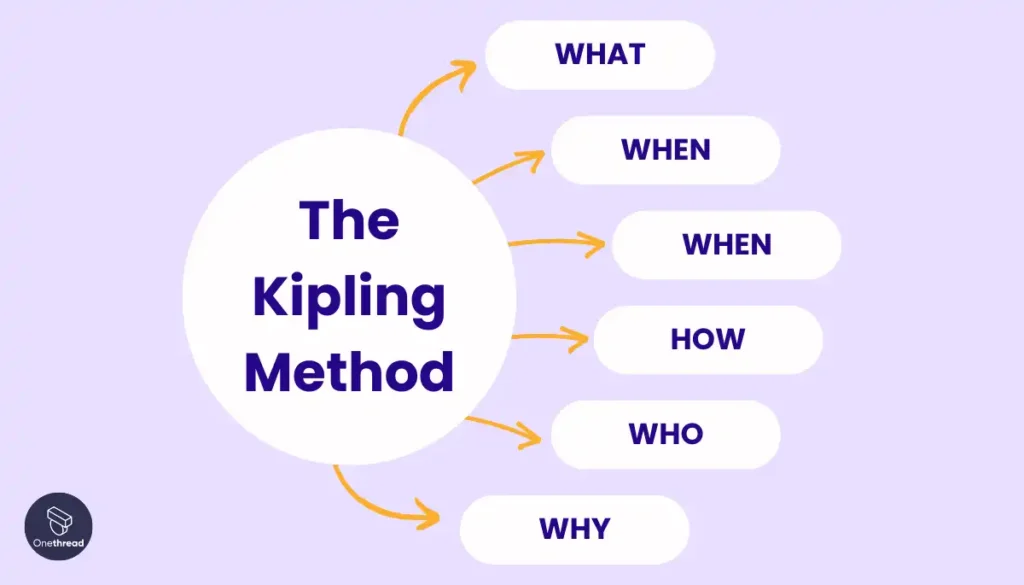
This method, named after author Rudyard Kipling, provides a framework for thoroughly analyzing a problem before jumping into solutions.
It consists of answering six fundamental questions: What, Where, When, How, Who, and Why about the challenge. Clearly defining these core elements of the problem sets the stage for generating targeted solutions.
The Kipling method enables a deep understanding of problem parameters and root causes before solution identification. By jumping to brainstorm solutions too early, critical information can be missed or the problem is loosely defined, reducing solution quality.
Answering the six fundamental questions illuminates all angles of the issue. This takes time but pays dividends in generating optimal solutions later tuned precisely to the true underlying problem.
The limitation is that meticulously working through numerous questions before addressing solutions can slow progress.
The best approach blends structured problem decomposition techniques like the Kipling method with spurring innovative solution ideation from a diverse team.
An example is using this technique after a technical process failure – the team would systematically detail What failed, Where/When did it fail, How it failed (sequence of events), Who was involved, and Why it likely failed before exploring preventative solutions.
5. Try Different Solutions Until One Works (Trial and Error)
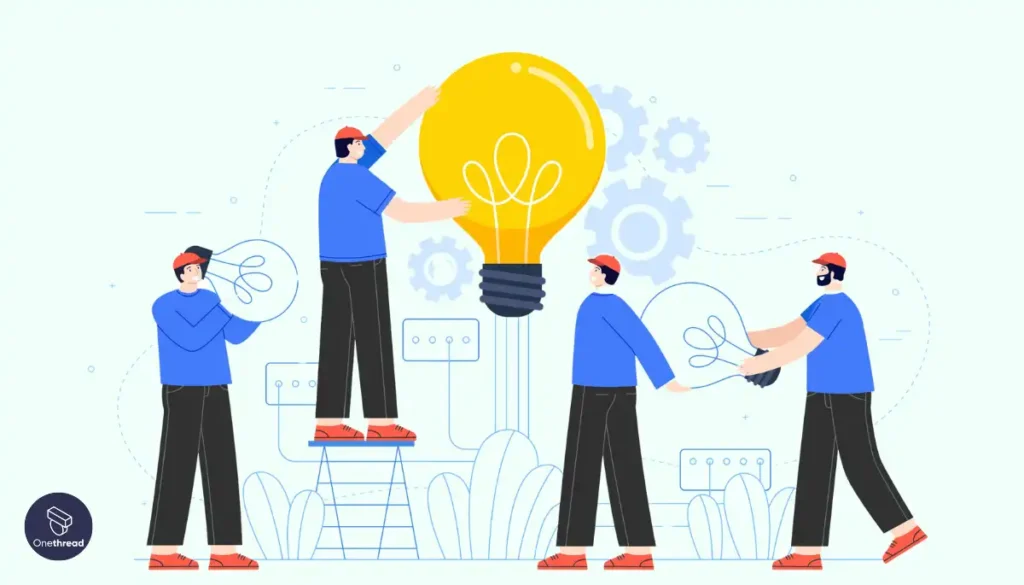
This technique involves attempting various potential solutions sequentially until finding one that successfully solves the problem.
Trial and error works best when facing a concrete, bounded challenge with clear solution criteria and a small number of discrete options to try. By methodically testing solutions, you can determine the faulty component.
A limitation is that it can be time-intensive if the working solution set is large.
The key is limiting the variable set first. For technical problems, this boundary is inherent and each element can be iteratively tested. But for business issues, artificial constraints may be required – setting decision rules upfront to reduce options before testing.
Furthermore, hypothesis-driven experimentation is far superior to blind trial and error – have logic for why Option A may outperform Option B.
Examples include fixing printer jams by testing different paper tray and cable configurations or resolving website errors by tweaking CSS/HTML line-by-line until the code functions properly.
6. Use Proven Formulas or Frameworks (Heuristics)
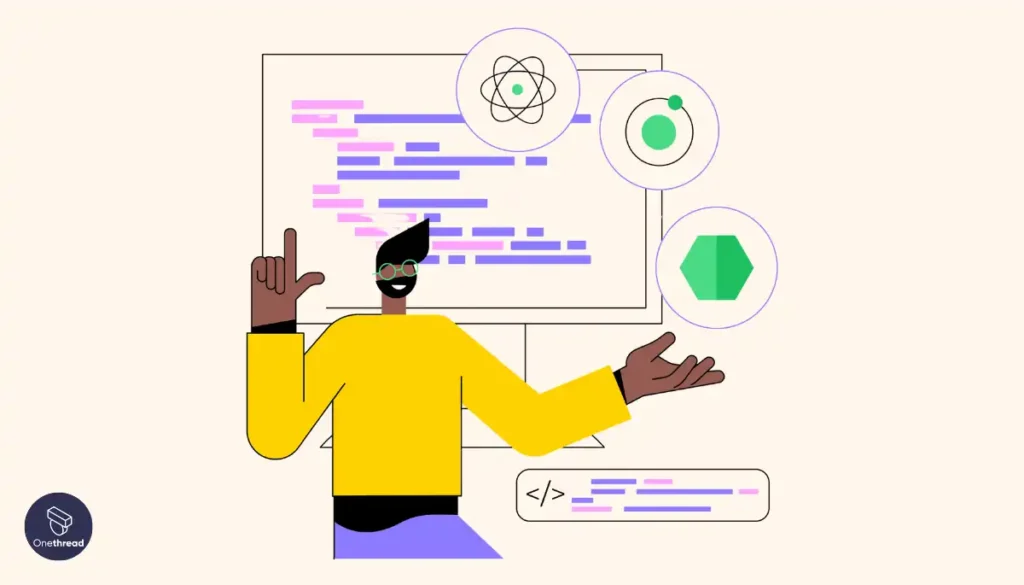
Heuristics refers to applying existing problem-solving formulas or frameworks rather than addressing issues completely from scratch.
This allows leveraging established best practices rather than reinventing the wheel each time.
It is effective when facing recurrent, common challenges where proven structured approaches exist.
However, heuristics may force-fit solutions to non-standard problems.
For example, a cost-benefit analysis can be used instead of custom weighting schemes to analyze potential process improvements.
Onethread allows teams to define, save, and replicate configurable project templates so proven workflows can be reliably applied across problems with some consistency rather than fully custom one-off approaches each time.
Try One thread
Experience One thread full potential, with all its features unlocked. Sign up now to start your 14-day free trial!
7. Trust Your Instincts (Insight Problem-Solving)
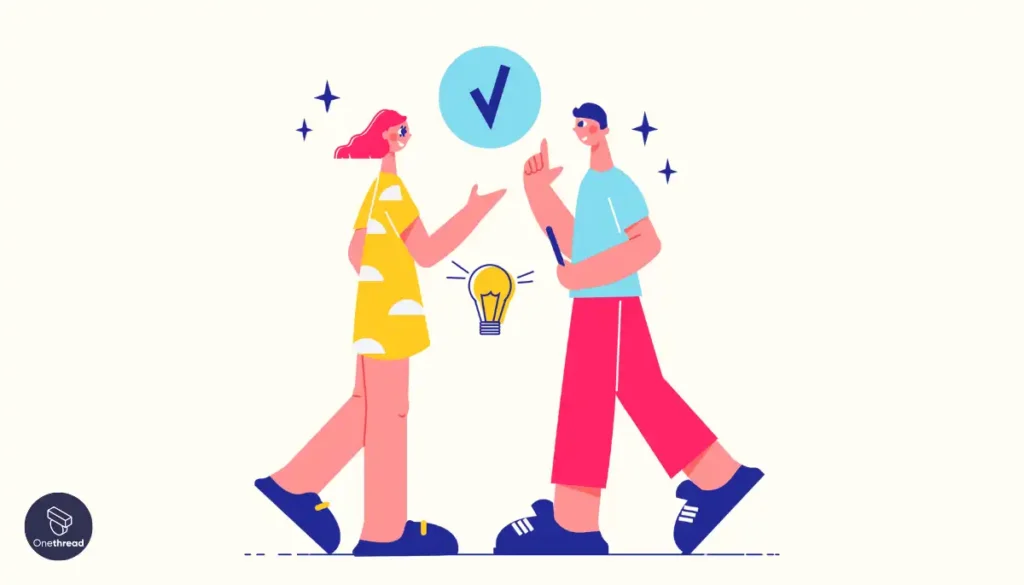
Insight is a problem-solving technique that involves waiting patiently for an unexpected “aha moment” when the solution pops into your mind.
It works well for personal challenges that require intuitive realizations over calculated logic. The unconscious mind makes connections leading to flashes of insight when relaxing or doing mundane tasks unrelated to the actual problem.
Benefits include out-of-the-box creative solutions. However, the limitations are that insights can’t be forced and may never come at all if too complex. Critical analysis is still required after initial insights.
A real-life example would be a writer struggling with how to end a novel. Despite extensive brainstorming, they feel stuck. Eventually while gardening one day, a perfect unexpected plot twist sparks an ideal conclusion. However, once written they still carefully review if the ending flows logically from the rest of the story.
8. Reverse Engineer the Problem
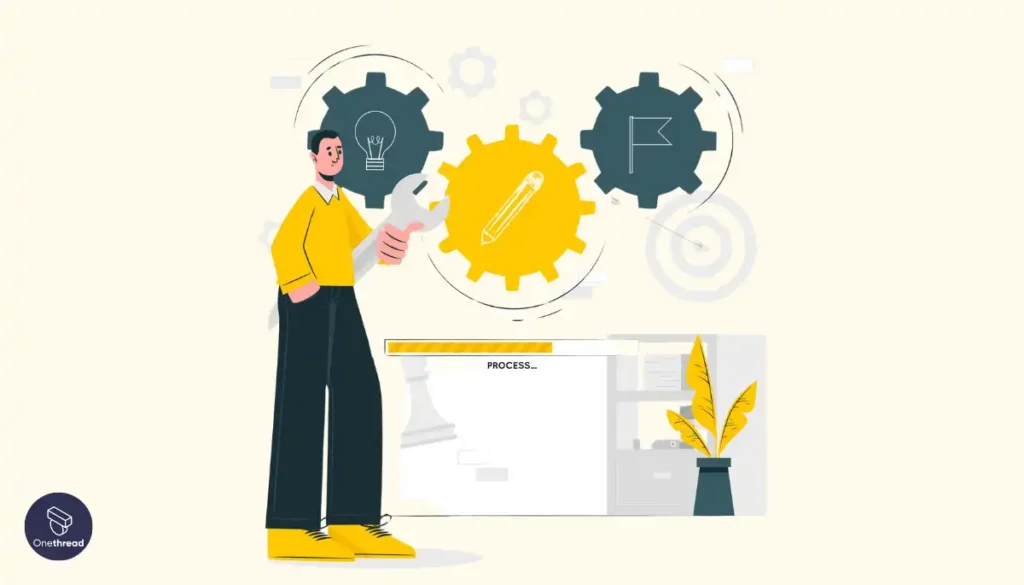
This approach involves deconstructing a problem in reverse sequential order from the current undesirable outcome back to the initial root causes.
By mapping the chain of events backward, you can identify the origin of where things went wrong and establish the critical junctures for solving it moving ahead. Reverse engineering provides diagnostic clarity on multi-step problems.
However, the limitation is that it focuses heavily on autopsying the past versus innovating improved future solutions.
An example is tracing back from a server outage, through the cascade of infrastructure failures that led to it finally terminating at the initial script error that triggered the crisis. This root cause would then inform the preventative measure.
9. Break Down Obstacles Between Current and Goal State (Means-End Analysis)
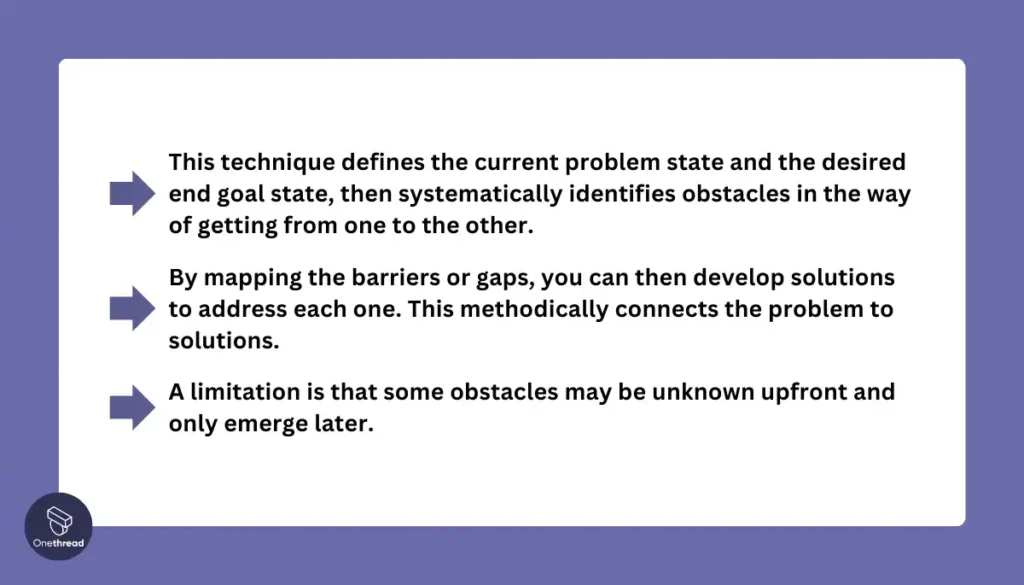
This technique defines the current problem state and the desired end goal state, then systematically identifies obstacles in the way of getting from one to the other.
By mapping the barriers or gaps, you can then develop solutions to address each one. This methodically connects the problem to solutions.
A limitation is that some obstacles may be unknown upfront and only emerge later.
For example, you can list down all the steps required for a new product launch – current state through production, marketing, sales, distribution, etc. to full launch (goal state) – to highlight where resource constraints or other blocks exist so they can be addressed.
Onethread allows dividing big-picture projects into discrete, manageable phases, milestones, and tasks to simplify execution just as problems can be decomposed into more achievable components. Features like dependency mapping further reinforce interconnections.
Using Onethread’s issues and subtasks feature, messy problems can be decomposed into manageable chunks.
10. Ask “Why” Five Times to Identify the Root Cause (The 5 Whys)
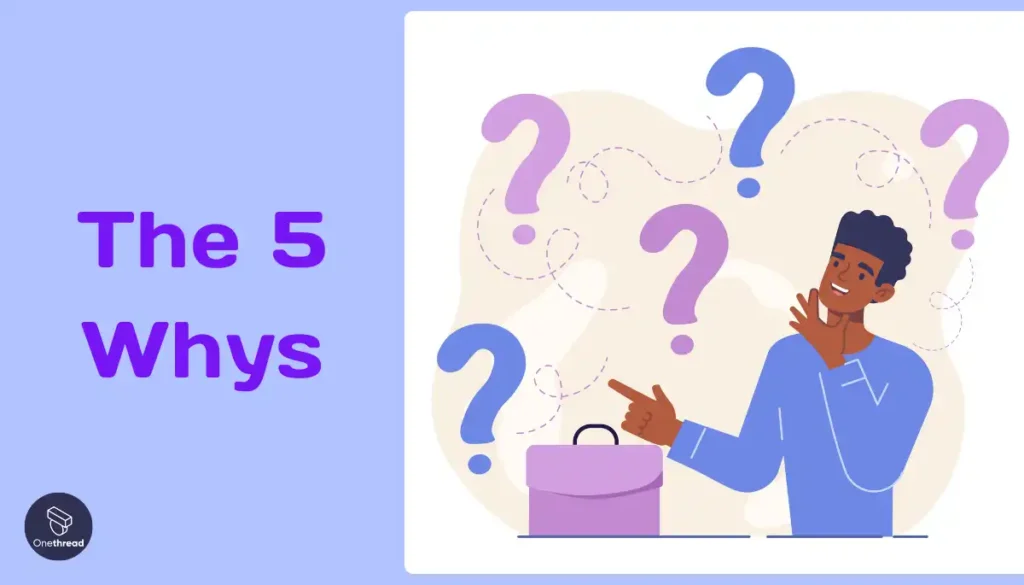
This technique involves asking “Why did this problem occur?” and then responding with an answer that is again met with asking “Why?” This process repeats five times until the root cause is revealed.
Continually asking why digs deeper from surface symptoms to underlying systemic issues.
It is effective for getting to the source of problems originating from human error or process breakdowns.
However, some complex issues may have multiple tangled root causes not solvable through this approach alone.
An example is a retail store experiencing a sudden decline in customers. Successively asking why five times may trace an initial drop to parking challenges, stemming from a city construction project – the true starting point to address.
11. Evaluate Strengths, Weaknesses, Opportunities, and Threats (SWOT Analysis)
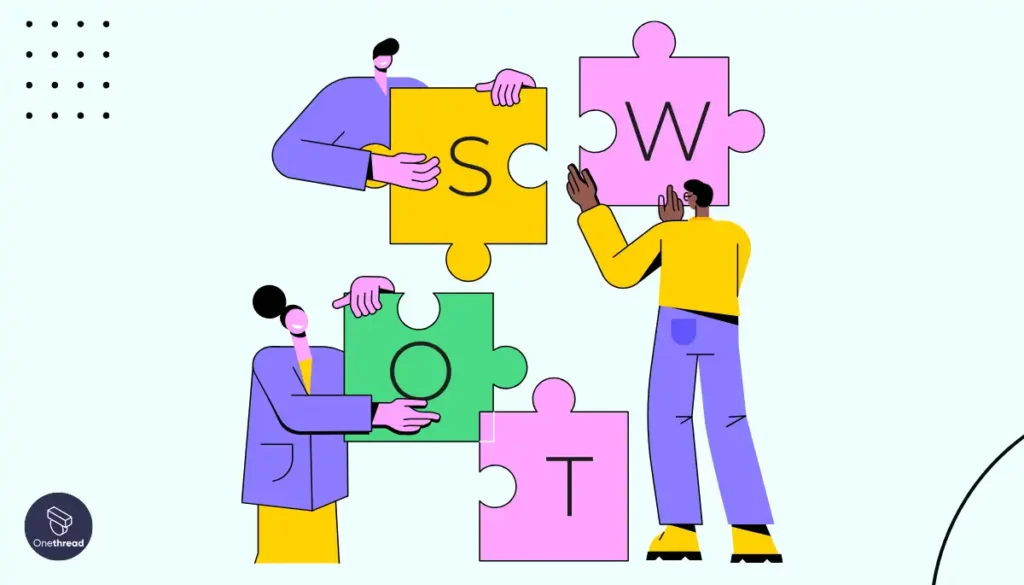
This involves analyzing a problem or proposed solution by categorizing internal and external factors into a 2×2 matrix: Strengths, Weaknesses as the internal rows; Opportunities and Threats as the external columns.
Systematically identifying these elements provides balanced insight to evaluate options and risks. It is impactful when evaluating alternative solutions or developing strategy amid complexity or uncertainty.
The key benefit of SWOT analysis is enabling multi-dimensional thinking when rationally evaluating options. Rather than getting anchored on just the upsides or the existing way of operating, it urges a systematic assessment through four different lenses:
- Internal Strengths: Our core competencies/advantages able to deliver success
- Internal Weaknesses: Gaps/vulnerabilities we need to manage
- External Opportunities: Ways we can differentiate/drive additional value
- External Threats: Risks we must navigate or mitigate
Multiperspective analysis provides the needed holistic view of the balanced risk vs. reward equation for strategic decision making amid uncertainty.
However, SWOT can feel restrictive if not tailored and evolved for different issue types.
Teams should view SWOT analysis as a starting point, augmenting it further for distinct scenarios.
An example is performing a SWOT analysis on whether a small business should expand into a new market – evaluating internal capabilities to execute vs. risks in the external competitive and demand environment to inform the growth decision with eyes wide open.
12. Compare Current vs Expected Performance (Gap Analysis)
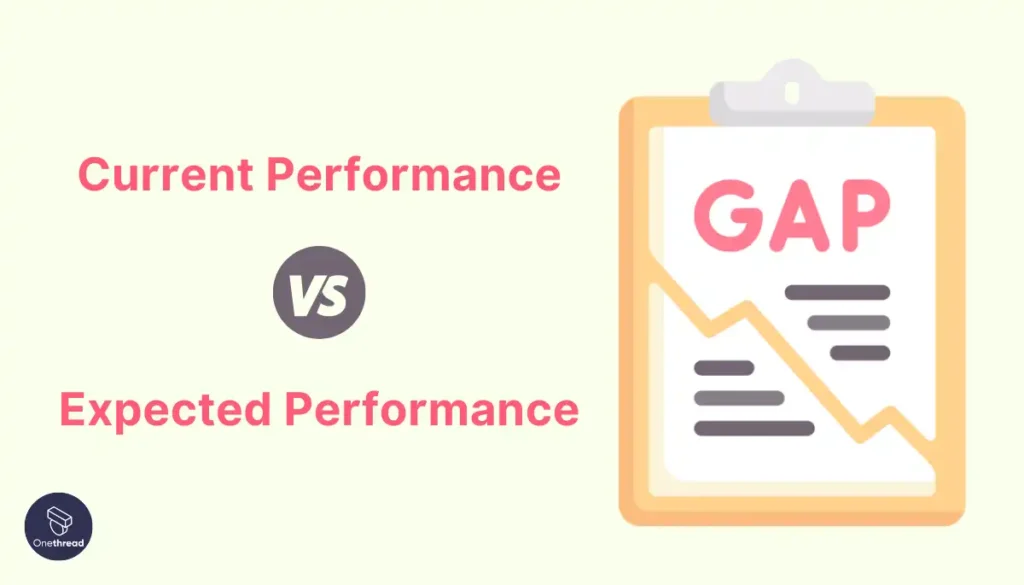
This technique involves comparing the current state of performance, output, or results to the desired or expected levels to highlight shortfalls.
By quantifying the gaps, you can identify problem areas and prioritize address solutions.
Gap analysis is based on the simple principle – “you can’t improve what you don’t measure.” It enables facts-driven problem diagnosis by highlighting delta to goals, not just vague dissatisfaction that something seems wrong. And measurement immediately suggests improvement opportunities – address the biggest gaps first.
This data orientation also supports ROI analysis on fixing issues – the return from closing larger gaps outweighs narrowly targeting smaller performance deficiencies.
However, the approach is only effective if robust standards and metrics exist as the benchmark to evaluate against. Organizations should invest upfront in establishing performance frameworks.
Furthermore, while numbers are invaluable, the human context behind problems should not be ignored – quantitative versus qualitative gap assessment is optimally blended.
For example, if usage declines are noted during software gap analysis, this could be used as a signal to improve user experience through design.
13. Observe Processes from the Frontline (Gemba Walk)
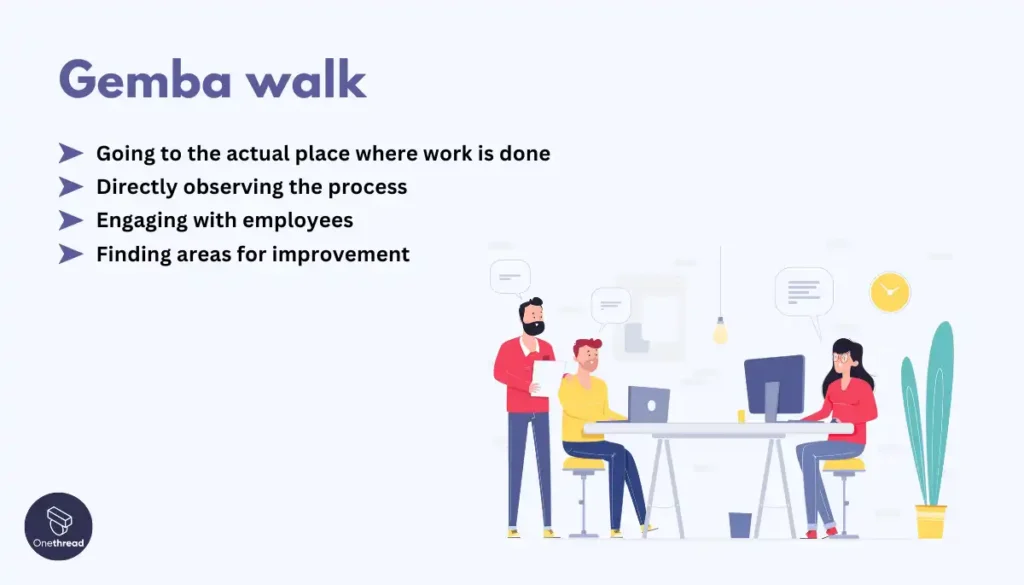
A Gemba walk involves going to the actual place where work is done, directly observing the process, engaging with employees, and finding areas for improvement.
By experiencing firsthand rather than solely reviewing abstract reports, practical problems and ideas emerge.
The limitation is Gemba walks provide anecdotes not statistically significant data. It complements but does not replace comprehensive performance measurement.
An example is a factory manager inspecting the production line to spot jam areas based on direct reality rather than relying on throughput dashboards alone back in her office. Frontline insights prove invaluable.
14. Analyze Competitive Forces (Porter’s Five Forces)
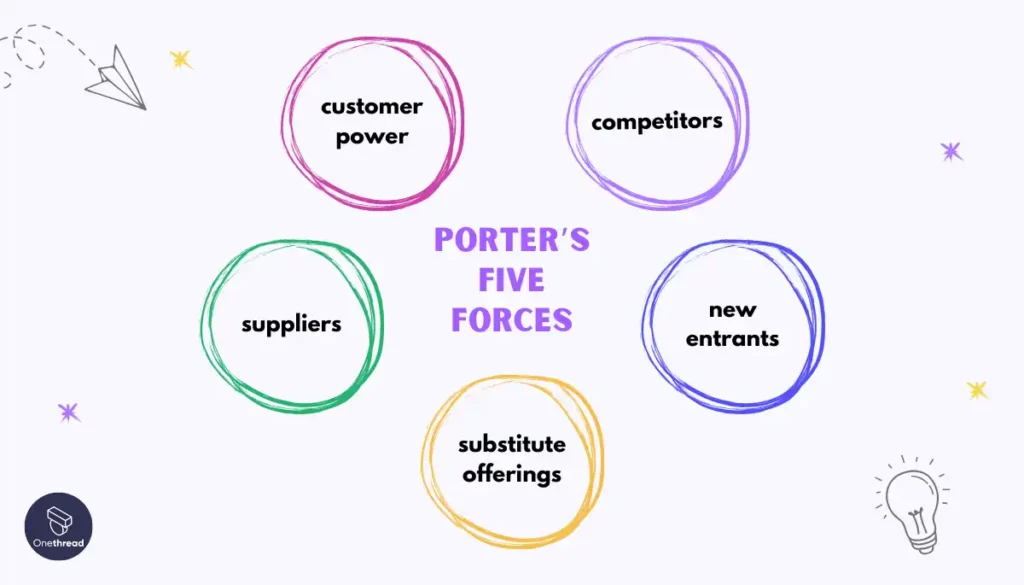
This involves assessing the marketplace around a problem or business situation via five key factors: competitors, new entrants, substitute offerings, suppliers, and customer power.
Evaluating these forces illuminates risks and opportunities for strategy development and issue resolution. It is effective for understanding dynamic external threats and opportunities when operating in a contested space.
However, over-indexing on only external factors can overlook the internal capabilities needed to execute solutions.
A startup CEO, for example, may analyze market entry barriers, whitespace opportunities, and disruption risks across these five forces to shape new product rollout strategies and marketing approaches.
15. Think from Different Perspectives (Six Thinking Hats)
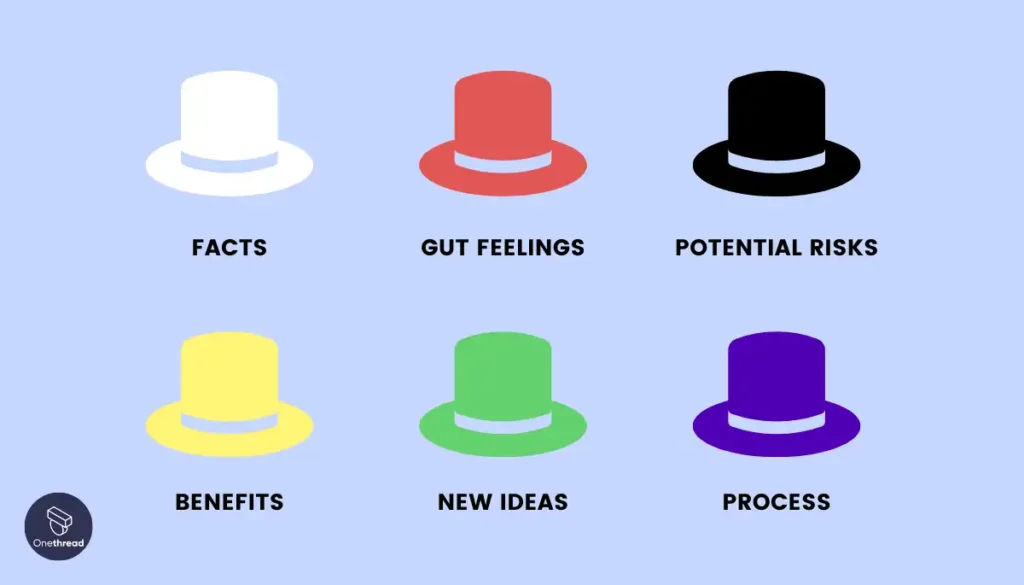
The Six Thinking Hats is a technique developed by Edward de Bono that encourages people to think about a problem from six different perspectives, each represented by a colored “thinking hat.”
The key benefit of this strategy is that it pushes team members to move outside their usual thinking style and consider new angles. This brings more diverse ideas and solutions to the table.
It works best for complex problems that require innovative solutions and when a team is stuck in an unproductive debate. The structured framework keeps the conversation flowing in a positive direction.
Limitations are that it requires training on the method itself and may feel unnatural at first. Team dynamics can also influence success – some members may dominate certain “hats” while others remain quiet.
A real-life example is a software company debating whether to build a new feature. The white hat focuses on facts, red on gut feelings, black on potential risks, yellow on benefits, green on new ideas, and blue on process. This exposes more balanced perspectives before deciding.
Onethread centralizes diverse stakeholder communication onto one platform, ensuring all voices are incorporated when evaluating project tradeoffs, just as problem-solving should consider multifaceted solutions.
16. Visualize the Problem (Draw it Out)
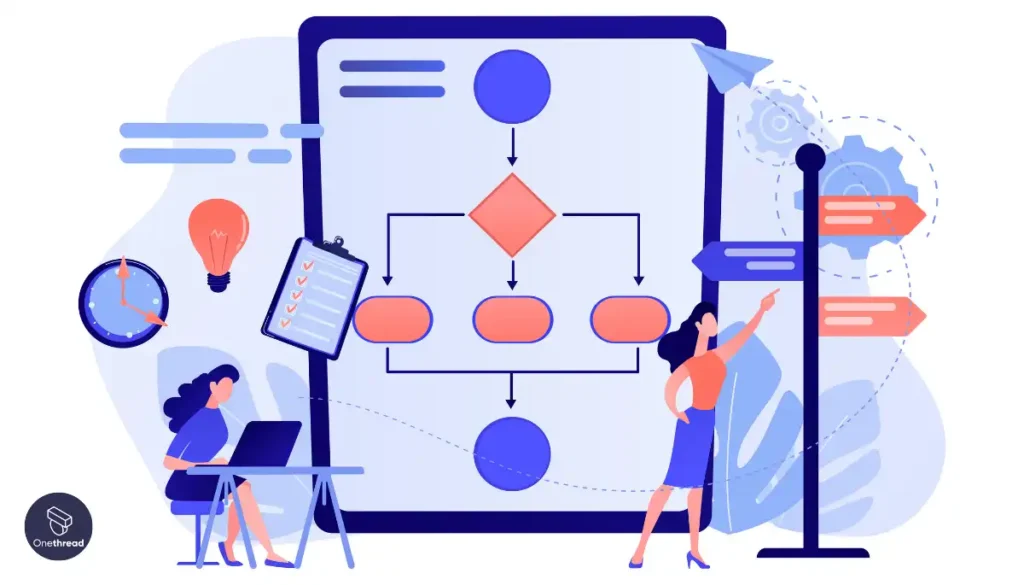
Drawing out a problem involves creating visual representations like diagrams, flowcharts, and maps to work through challenging issues.
This strategy is helpful when dealing with complex situations with lots of interconnected components. The visuals simplify the complexity so you can thoroughly understand the problem and all its nuances.
Key benefits are that it allows more stakeholders to get on the same page regarding root causes and it sparks new creative solutions as connections are made visually.
However, simple problems with few variables don’t require extensive diagrams. Additionally, some challenges are so multidimensional that fully capturing every aspect is difficult.
A real-life example would be mapping out all the possible causes leading to decreased client satisfaction at a law firm. An intricate fishbone diagram with branches for issues like service delivery, technology, facilities, culture, and vendor partnerships allows the team to trace problems back to their origins and brainstorm targeted fixes.
17. Follow a Step-by-Step Procedure (Algorithms)
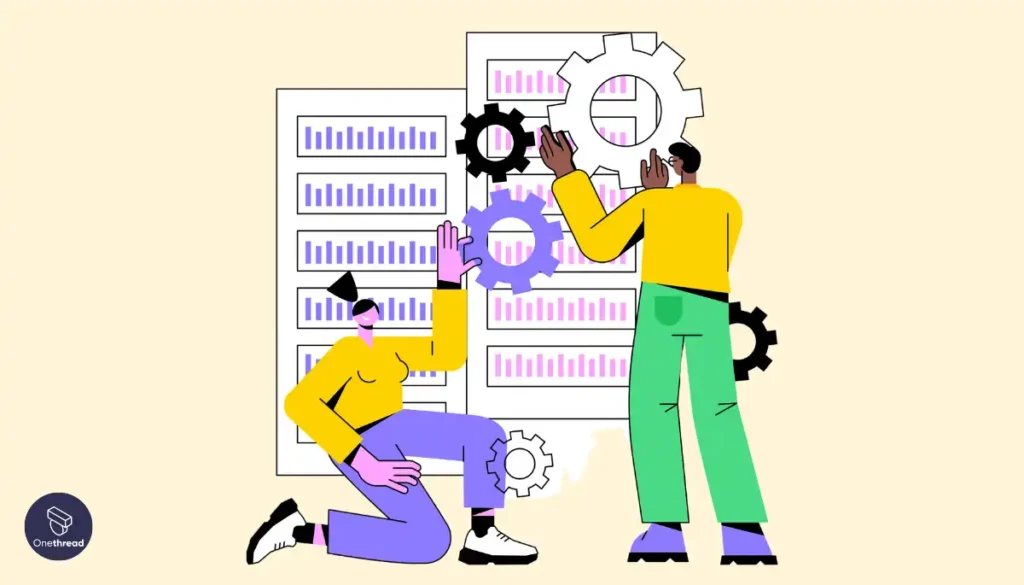
An algorithm is a predefined step-by-step process that is guaranteed to produce the correct solution if implemented properly.
Using algorithms is effective when facing problems that have clear, binary right and wrong answers. Algorithms work for mathematical calculations, computer code, manufacturing assembly lines, and scientific experiments.
Key benefits are consistency, accuracy, and efficiency. However, they require extensive upfront development and only apply to scenarios with strict parameters. Additionally, human error can lead to mistakes.
For example, crew members of fast food chains like McDonald’s follow specific algorithms for food prep – from grill times to ingredient amounts in sandwiches, to order fulfillment procedures. This ensures uniform quality and service across all locations. However, if a step is missed, errors occur.
The Problem-Solving Process
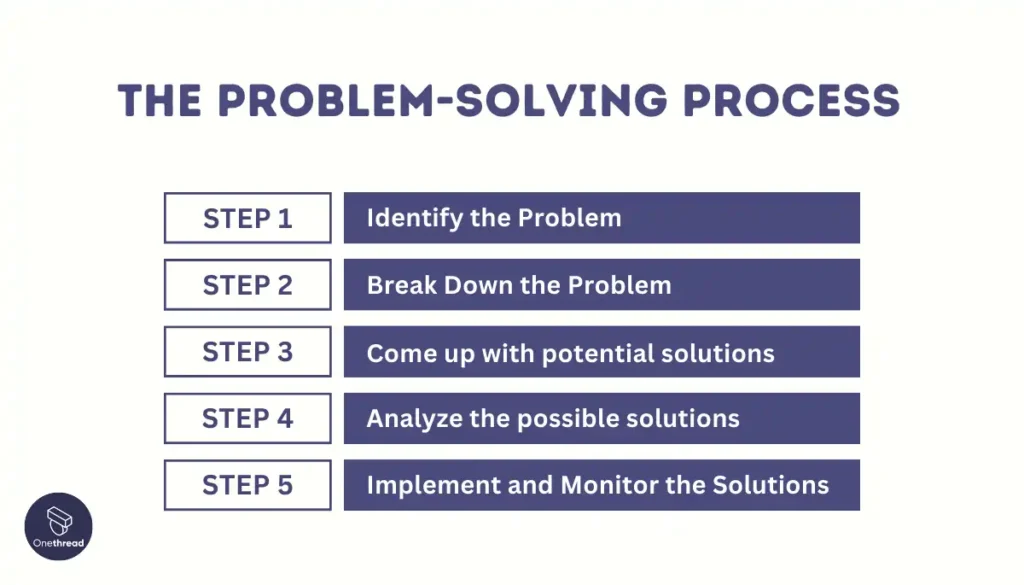
The problem-solving process typically includes defining the issue, analyzing details, creating solutions, weighing choices, acting, and reviewing results.
In the above, we have discussed several problem-solving strategies. For every problem-solving strategy, you have to follow these processes. Here’s a detailed step-by-step process of effective problem-solving:
Step 1: Identify the Problem
The problem-solving process starts with identifying the problem. This step involves understanding the issue’s nature, its scope, and its impact. Once the problem is clearly defined, it sets the foundation for finding effective solutions.
Identifying the problem is crucial. It means figuring out exactly what needs fixing. This involves looking at the situation closely, understanding what’s wrong, and knowing how it affects things. It’s about asking the right questions to get a clear picture of the issue.
This step is important because it guides the rest of the problem-solving process. Without a clear understanding of the problem, finding a solution is much harder. It’s like diagnosing an illness before treating it. Once the problem is identified accurately, you can move on to exploring possible solutions and deciding on the best course of action.

Step 2: Break Down the Problem
Breaking down the problem is a key step in the problem-solving process. It involves dividing the main issue into smaller, more manageable parts. This makes it easier to understand and tackle each component one by one.
After identifying the problem, the next step is to break it down. This means splitting the big issue into smaller pieces. It’s like solving a puzzle by handling one piece at a time.
By doing this, you can focus on each part without feeling overwhelmed. It also helps in identifying the root causes of the problem. Breaking down the problem allows for a clearer analysis and makes finding solutions more straightforward.
Each smaller problem can be addressed individually, leading to an effective resolution of the overall issue. This approach not only simplifies complex problems but also aids in developing a systematic plan to solve them.
Step 3: Come up with potential solutions
Coming up with potential solutions is the third step in the problem-solving process. It involves brainstorming various options to address the problem, considering creativity and feasibility to find the best approach.
After breaking down the problem, it’s time to think of ways to solve it. This stage is about brainstorming different solutions. You look at the smaller issues you’ve identified and start thinking of ways to fix them. This is where creativity comes in.
You want to come up with as many ideas as possible, no matter how out-of-the-box they seem. It’s important to consider all options and evaluate their pros and cons. This process allows you to gather a range of possible solutions.
Later, you can narrow these down to the most practical and effective ones. This step is crucial because it sets the stage for deciding on the best solution to implement. It’s about being open-minded and innovative to tackle the problem effectively.
Step 4: Analyze the possible solutions
Analyzing the possible solutions is the fourth step in the problem-solving process. It involves evaluating each proposed solution’s advantages and disadvantages to determine the most effective and feasible option.
After coming up with potential solutions, the next step is to analyze them. This means looking closely at each idea to see how well it solves the problem. You weigh the pros and cons of every solution.
Consider factors like cost, time, resources, and potential outcomes. This analysis helps in understanding the implications of each option. It’s about being critical and objective, ensuring that the chosen solution is not only effective but also practical.
This step is vital because it guides you towards making an informed decision. It involves comparing the solutions against each other and selecting the one that best addresses the problem.
By thoroughly analyzing the options, you can move forward with confidence, knowing you’ve chosen the best path to solve the issue.
Step 5: Implement and Monitor the Solutions
Implementing and monitoring the solutions is the final step in the problem-solving process. It involves putting the chosen solution into action and observing its effectiveness, making adjustments as necessary.
Once you’ve selected the best solution, it’s time to put it into practice. This step is about action. You implement the chosen solution and then keep an eye on how it works. Monitoring is crucial because it tells you if the solution is solving the problem as expected.
If things don’t go as planned, you may need to make some changes. This could mean tweaking the current solution or trying a different one. The goal is to ensure the problem is fully resolved.
This step is critical because it involves real-world application. It’s not just about planning; it’s about doing and adjusting based on results. By effectively implementing and monitoring the solutions, you can achieve the desired outcome and solve the problem successfully.
Why This Process is Important
Following a defined process to solve problems is important because it provides a systematic, structured approach instead of a haphazard one. Having clear steps guides logical thinking, analysis, and decision-making to increase effectiveness. Key reasons it helps are:
- Clear Direction: This process gives you a clear path to follow, which can make solving problems less overwhelming.
- Better Solutions: Thoughtful analysis of root causes, iterative testing of solutions, and learning orientation lead to addressing the heart of issues rather than just symptoms.
- Saves Time and Energy: Instead of guessing or trying random things, this process helps you find a solution more efficiently.
- Improves Skills: The more you use this process, the better you get at solving problems. It’s like practicing a sport. The more you practice, the better you play.
- Maximizes collaboration: Involving various stakeholders in the process enables broader inputs. Their communication and coordination are streamlined through organized brainstorming and evaluation.
- Provides consistency: Standard methodology across problems enables building institutional problem-solving capabilities over time. Patterns emerge on effective techniques to apply to different situations.
The problem-solving process is a powerful tool that can help us tackle any challenge we face. By following these steps, we can find solutions that work and learn important skills along the way.
Key Skills for Efficient Problem Solving
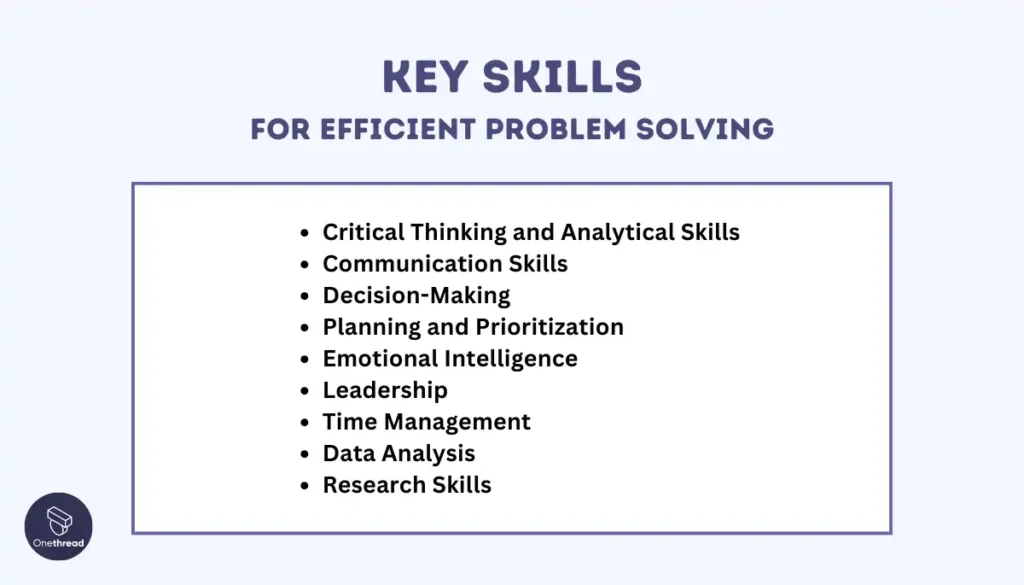
Efficient problem-solving requires breaking down issues logically, evaluating options, and implementing practical solutions.
Key skills include critical thinking to understand root causes, creativity to brainstorm innovative ideas, communication abilities to collaborate with others, and decision-making to select the best way forward. Staying adaptable, reflecting on outcomes, and applying lessons learned are also essential.
With practice, these capacities will lead to increased personal and team effectiveness in systematically addressing any problem.
Let’s explore the powers you need to become a problem-solving hero!
Critical Thinking and Analytical Skills
Critical thinking and analytical skills are vital for efficient problem-solving as they enable individuals to objectively evaluate information, identify key issues, and generate effective solutions.
These skills facilitate a deeper understanding of problems, leading to logical, well-reasoned decisions. By systematically breaking down complex issues and considering various perspectives, individuals can develop more innovative and practical solutions, enhancing their problem-solving effectiveness.
Communication Skills
Effective communication skills are essential for efficient problem-solving as they facilitate clear sharing of information, ensuring all team members understand the problem and proposed solutions.
These skills enable individuals to articulate issues, listen actively, and collaborate effectively, fostering a productive environment where diverse ideas can be exchanged and refined. By enhancing mutual understanding, communication skills contribute significantly to identifying and implementing the most viable solutions.
Decision-Making
Strong decision-making skills are crucial for efficient problem-solving, as they enable individuals to choose the best course of action from multiple alternatives.
These skills involve evaluating the potential outcomes of different solutions, considering the risks and benefits, and making informed choices. Effective decision-making leads to the implementation of solutions that are likely to resolve problems effectively, ensuring resources are used efficiently and goals are achieved.
Planning and Prioritization
Planning and prioritization are key for efficient problem-solving, ensuring resources are allocated effectively to address the most critical issues first. This approach helps in organizing tasks according to their urgency and impact, streamlining efforts towards achieving the desired outcome efficiently.
Emotional Intelligence
Emotional intelligence enhances problem-solving by allowing individuals to manage emotions, understand others, and navigate social complexities. It fosters a positive, collaborative environment, essential for generating creative solutions and making informed, empathetic decisions.
Leadership skills drive efficient problem-solving by inspiring and guiding teams toward common goals. Effective leaders motivate their teams, foster innovation, and navigate challenges, ensuring collective efforts are focused and productive in addressing problems.
Time Management
Time management is crucial in problem-solving, enabling individuals to allocate appropriate time to each task. By efficiently managing time, one can ensure that critical problems are addressed promptly without neglecting other responsibilities.
Data Analysis
Data analysis skills are essential for problem-solving, as they enable individuals to sift through data, identify trends, and extract actionable insights. This analytical approach supports evidence-based decision-making, leading to more accurate and effective solutions.
Research Skills
Research skills are vital for efficient problem-solving, allowing individuals to gather relevant information, explore various solutions, and understand the problem’s context. This thorough exploration aids in developing well-informed, innovative solutions.
Becoming a great problem solver takes practice, but with these skills, you’re on your way to becoming a problem-solving hero.
How to Improve Your Problem-Solving Skills?
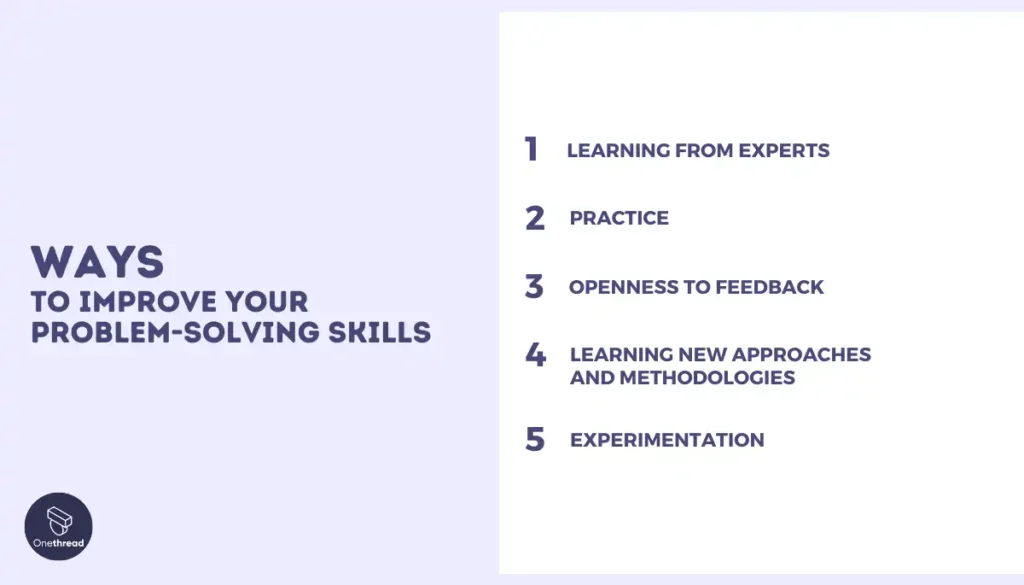
Improving your problem-solving skills can make you a master at overcoming challenges. Learn from experts, practice regularly, welcome feedback, try new methods, experiment, and study others’ success to become better.
Learning from Experts
Improving problem-solving skills by learning from experts involves seeking mentorship, attending workshops, and studying case studies. Experts provide insights and techniques that refine your approach, enhancing your ability to tackle complex problems effectively.
To enhance your problem-solving skills, learning from experts can be incredibly beneficial. Engaging with mentors, participating in specialized workshops, and analyzing case studies from seasoned professionals can offer valuable perspectives and strategies.
Experts share their experiences, mistakes, and successes, providing practical knowledge that can be applied to your own problem-solving process. This exposure not only broadens your understanding but also introduces you to diverse methods and approaches, enabling you to tackle challenges more efficiently and creatively.
Improving problem-solving skills through practice involves tackling a variety of challenges regularly. This hands-on approach helps in refining techniques and strategies, making you more adept at identifying and solving problems efficiently.
One of the most effective ways to enhance your problem-solving skills is through consistent practice. By engaging with different types of problems on a regular basis, you develop a deeper understanding of various strategies and how they can be applied.
This hands-on experience allows you to experiment with different approaches, learn from mistakes, and build confidence in your ability to tackle challenges.
Regular practice not only sharpens your analytical and critical thinking skills but also encourages adaptability and innovation, key components of effective problem-solving.
Openness to Feedback
Being open to feedback is like unlocking a secret level in a game. It helps you boost your problem-solving skills. Improving problem-solving skills through openness to feedback involves actively seeking and constructively responding to critiques.
This receptivity enables you to refine your strategies and approaches based on insights from others, leading to more effective solutions.
Learning New Approaches and Methodologies
Learning new approaches and methodologies is like adding new tools to your toolbox. It makes you a smarter problem-solver. Enhancing problem-solving skills by learning new approaches and methodologies involves staying updated with the latest trends and techniques in your field.
This continuous learning expands your toolkit, enabling innovative solutions and a fresh perspective on challenges.
Experimentation
Experimentation is like being a scientist of your own problems. It’s a powerful way to improve your problem-solving skills. Boosting problem-solving skills through experimentation means trying out different solutions to see what works best. This trial-and-error approach fosters creativity and can lead to unique solutions that wouldn’t have been considered otherwise.
Analyzing Competitors’ Success
Analyzing competitors’ success is like being a detective. It’s a smart way to boost your problem-solving skills. Improving problem-solving skills by analyzing competitors’ success involves studying their strategies and outcomes. Understanding what worked for them can provide valuable insights and inspire effective solutions for your own challenges.
Challenges in Problem-Solving
Facing obstacles when solving problems is common. Recognizing these barriers, like fear of failure or lack of information, helps us find ways around them for better solutions.
Fear of Failure
Fear of failure is like a big, scary monster that stops us from solving problems. It’s a challenge many face. Because being afraid of making mistakes can make us too scared to try new solutions.
How can we overcome this? First, understand that it’s okay to fail. Failure is not the opposite of success; it’s part of learning. Every time we fail, we discover one more way not to solve a problem, getting us closer to the right solution. Treat each attempt like an experiment. It’s not about failing; it’s about testing and learning.
Lack of Information
Lack of information is like trying to solve a puzzle with missing pieces. It’s a big challenge in problem-solving. Because without all the necessary details, finding a solution is much harder.
How can we fix this? Start by gathering as much information as you can. Ask questions, do research, or talk to experts. Think of yourself as a detective looking for clues. The more information you collect, the clearer the picture becomes. Then, use what you’ve learned to think of solutions.
Fixed Mindset
A fixed mindset is like being stuck in quicksand; it makes solving problems harder. It means thinking you can’t improve or learn new ways to solve issues.
How can we change this? First, believe that you can grow and learn from challenges. Think of your brain as a muscle that gets stronger every time you use it. When you face a problem, instead of saying “I can’t do this,” try thinking, “I can’t do this yet.” Look for lessons in every challenge and celebrate small wins.
Everyone starts somewhere, and mistakes are just steps on the path to getting better. By shifting to a growth mindset, you’ll see problems as opportunities to grow. Keep trying, keep learning, and your problem-solving skills will soar!
Jumping to Conclusions
Jumping to conclusions is like trying to finish a race before it starts. It’s a challenge in problem-solving. That means making a decision too quickly without looking at all the facts.
How can we avoid this? First, take a deep breath and slow down. Think about the problem like a puzzle. You need to see all the pieces before you know where they go. Ask questions, gather information, and consider different possibilities. Don’t choose the first solution that comes to mind. Instead, compare a few options.
Feeling Overwhelmed
Feeling overwhelmed is like being buried under a mountain of puzzles. It’s a big challenge in problem-solving. When we’re overwhelmed, everything seems too hard to handle.
How can we deal with this? Start by taking a step back. Breathe deeply and focus on one thing at a time. Break the big problem into smaller pieces, like sorting puzzle pieces by color. Tackle each small piece one by one. It’s also okay to ask for help. Sometimes, talking to someone else can give you a new perspective.
Confirmation Bias
Confirmation bias is like wearing glasses that only let you see what you want to see. It’s a challenge in problem-solving. Because it makes us focus only on information that agrees with what we already believe, ignoring anything that doesn’t.
How can we overcome this? First, be aware that you might be doing it. It’s like checking if your glasses are on right. Then, purposely look for information that challenges your views. It’s like trying on a different pair of glasses to see a new perspective. Ask questions and listen to answers, even if they don’t fit what you thought before.
Groupthink is like everyone in a group deciding to wear the same outfit without asking why. It’s a challenge in problem-solving. It means making decisions just because everyone else agrees, without really thinking it through.
How can we avoid this? First, encourage everyone in the group to share their ideas, even if they’re different. It’s like inviting everyone to show their unique style of clothes.
Listen to all opinions and discuss them. It’s okay to disagree; it helps us think of better solutions. Also, sometimes, ask someone outside the group for their thoughts. They might see something everyone in the group missed.
Overcoming obstacles in problem-solving requires patience, openness, and a willingness to learn from mistakes. By recognizing these barriers, we can develop strategies to navigate around them, leading to more effective and creative solutions.
What are the most common problem-solving techniques?
The most common techniques include brainstorming, the 5 Whys, mind mapping, SWOT analysis, and using algorithms or heuristics. Each approach has its strengths, suitable for different types of problems.
What’s the best problem-solving strategy for every situation?
There’s no one-size-fits-all strategy. The best approach depends on the problem’s complexity, available resources, and time constraints. Combining multiple techniques often yields the best results.
How can I improve my problem-solving skills?
Improve your problem-solving skills by practicing regularly, learning from experts, staying open to feedback, and continuously updating your knowledge on new approaches and methodologies.
Are there any tools or resources to help with problem-solving?
Yes, tools like mind mapping software, online courses on critical thinking, and books on problem-solving techniques can be very helpful. Joining forums or groups focused on problem-solving can also provide support and insights.
What are some common mistakes people make when solving problems?
Common mistakes include jumping to conclusions without fully understanding the problem, ignoring valuable feedback, sticking to familiar solutions without considering alternatives, and not breaking down complex problems into manageable parts.
Final Words
Mastering problem-solving strategies equips us with the tools to tackle challenges across all areas of life. By understanding and applying these techniques, embracing a growth mindset, and learning from both successes and obstacles, we can transform problems into opportunities for growth. Continuously improving these skills ensures we’re prepared to face and solve future challenges more effectively.

Let's Get Started with Onethread
Onethread empowers you to plan, organise, and track projects with ease, ensuring you meet deadlines, allocate resources efficiently, and keep progress transparent.
By subscribing you agree to our Privacy Policy .
Giving modern marketing teams superpowers with short links that stand out.
- Live Product Demo
© Copyright 2023 Onethread, Inc
- Bipolar Disorder
- Therapy Center
- When To See a Therapist
- Types of Therapy
- Best Online Therapy
- Best Couples Therapy
- Best Family Therapy
- Managing Stress
- Sleep and Dreaming
- Understanding Emotions
- Self-Improvement
- Healthy Relationships
- Student Resources
- Personality Types
- Guided Meditations
- Verywell Mind Insights
- 2024 Verywell Mind 25
- Mental Health in the Classroom
- Editorial Process
- Meet Our Review Board
- Crisis Support
Overview of the Problem-Solving Mental Process
Kendra Cherry, MS, is a psychosocial rehabilitation specialist, psychology educator, and author of the "Everything Psychology Book."
:max_bytes(150000):strip_icc():format(webp)/IMG_9791-89504ab694d54b66bbd72cb84ffb860e.jpg)
Rachel Goldman, PhD FTOS, is a licensed psychologist, clinical assistant professor, speaker, wellness expert specializing in eating behaviors, stress management, and health behavior change.
:max_bytes(150000):strip_icc():format(webp)/Rachel-Goldman-1000-a42451caacb6423abecbe6b74e628042.jpg)
- Identify the Problem
- Define the Problem
- Form a Strategy
- Organize Information
- Allocate Resources
- Monitor Progress
- Evaluate the Results
Frequently Asked Questions
Problem-solving is a mental process that involves discovering, analyzing, and solving problems. The ultimate goal of problem-solving is to overcome obstacles and find a solution that best resolves the issue.
The best strategy for solving a problem depends largely on the unique situation. In some cases, people are better off learning everything they can about the issue and then using factual knowledge to come up with a solution. In other instances, creativity and insight are the best options.
It is not necessary to follow problem-solving steps sequentially, It is common to skip steps or even go back through steps multiple times until the desired solution is reached.
In order to correctly solve a problem, it is often important to follow a series of steps. Researchers sometimes refer to this as the problem-solving cycle. While this cycle is portrayed sequentially, people rarely follow a rigid series of steps to find a solution.
The following steps include developing strategies and organizing knowledge.
1. Identifying the Problem
While it may seem like an obvious step, identifying the problem is not always as simple as it sounds. In some cases, people might mistakenly identify the wrong source of a problem, which will make attempts to solve it inefficient or even useless.
Some strategies that you might use to figure out the source of a problem include :
- Asking questions about the problem
- Breaking the problem down into smaller pieces
- Looking at the problem from different perspectives
- Conducting research to figure out what relationships exist between different variables
2. Defining the Problem
After the problem has been identified, it is important to fully define the problem so that it can be solved. You can define a problem by operationally defining each aspect of the problem and setting goals for what aspects of the problem you will address
At this point, you should focus on figuring out which aspects of the problems are facts and which are opinions. State the problem clearly and identify the scope of the solution.
3. Forming a Strategy
After the problem has been identified, it is time to start brainstorming potential solutions. This step usually involves generating as many ideas as possible without judging their quality. Once several possibilities have been generated, they can be evaluated and narrowed down.
The next step is to develop a strategy to solve the problem. The approach used will vary depending upon the situation and the individual's unique preferences. Common problem-solving strategies include heuristics and algorithms.
- Heuristics are mental shortcuts that are often based on solutions that have worked in the past. They can work well if the problem is similar to something you have encountered before and are often the best choice if you need a fast solution.
- Algorithms are step-by-step strategies that are guaranteed to produce a correct result. While this approach is great for accuracy, it can also consume time and resources.
Heuristics are often best used when time is of the essence, while algorithms are a better choice when a decision needs to be as accurate as possible.
4. Organizing Information
Before coming up with a solution, you need to first organize the available information. What do you know about the problem? What do you not know? The more information that is available the better prepared you will be to come up with an accurate solution.
When approaching a problem, it is important to make sure that you have all the data you need. Making a decision without adequate information can lead to biased or inaccurate results.
5. Allocating Resources
Of course, we don't always have unlimited money, time, and other resources to solve a problem. Before you begin to solve a problem, you need to determine how high priority it is.
If it is an important problem, it is probably worth allocating more resources to solving it. If, however, it is a fairly unimportant problem, then you do not want to spend too much of your available resources on coming up with a solution.
At this stage, it is important to consider all of the factors that might affect the problem at hand. This includes looking at the available resources, deadlines that need to be met, and any possible risks involved in each solution. After careful evaluation, a decision can be made about which solution to pursue.
6. Monitoring Progress
After selecting a problem-solving strategy, it is time to put the plan into action and see if it works. This step might involve trying out different solutions to see which one is the most effective.
It is also important to monitor the situation after implementing a solution to ensure that the problem has been solved and that no new problems have arisen as a result of the proposed solution.
Effective problem-solvers tend to monitor their progress as they work towards a solution. If they are not making good progress toward reaching their goal, they will reevaluate their approach or look for new strategies .
7. Evaluating the Results
After a solution has been reached, it is important to evaluate the results to determine if it is the best possible solution to the problem. This evaluation might be immediate, such as checking the results of a math problem to ensure the answer is correct, or it can be delayed, such as evaluating the success of a therapy program after several months of treatment.
Once a problem has been solved, it is important to take some time to reflect on the process that was used and evaluate the results. This will help you to improve your problem-solving skills and become more efficient at solving future problems.
A Word From Verywell
It is important to remember that there are many different problem-solving processes with different steps, and this is just one example. Problem-solving in real-world situations requires a great deal of resourcefulness, flexibility, resilience, and continuous interaction with the environment.
Get Advice From The Verywell Mind Podcast
Hosted by therapist Amy Morin, LCSW, this episode of The Verywell Mind Podcast shares how you can stop dwelling in a negative mindset.
Follow Now : Apple Podcasts / Spotify / Google Podcasts
You can become a better problem solving by:
- Practicing brainstorming and coming up with multiple potential solutions to problems
- Being open-minded and considering all possible options before making a decision
- Breaking down problems into smaller, more manageable pieces
- Asking for help when needed
- Researching different problem-solving techniques and trying out new ones
- Learning from mistakes and using them as opportunities to grow
It's important to communicate openly and honestly with your partner about what's going on. Try to see things from their perspective as well as your own. Work together to find a resolution that works for both of you. Be willing to compromise and accept that there may not be a perfect solution.
Take breaks if things are getting too heated, and come back to the problem when you feel calm and collected. Don't try to fix every problem on your own—consider asking a therapist or counselor for help and insight.
If you've tried everything and there doesn't seem to be a way to fix the problem, you may have to learn to accept it. This can be difficult, but try to focus on the positive aspects of your life and remember that every situation is temporary. Don't dwell on what's going wrong—instead, think about what's going right. Find support by talking to friends or family. Seek professional help if you're having trouble coping.
Davidson JE, Sternberg RJ, editors. The Psychology of Problem Solving . Cambridge University Press; 2003. doi:10.1017/CBO9780511615771
Sarathy V. Real world problem-solving . Front Hum Neurosci . 2018;12:261. Published 2018 Jun 26. doi:10.3389/fnhum.2018.00261
By Kendra Cherry, MSEd Kendra Cherry, MS, is a psychosocial rehabilitation specialist, psychology educator, and author of the "Everything Psychology Book."

What is Problem Solving? (Steps, Techniques, Examples)
By Status.net Editorial Team on May 7, 2023 — 5 minutes to read
What Is Problem Solving?
Definition and importance.
Problem solving is the process of finding solutions to obstacles or challenges you encounter in your life or work. It is a crucial skill that allows you to tackle complex situations, adapt to changes, and overcome difficulties with ease. Mastering this ability will contribute to both your personal and professional growth, leading to more successful outcomes and better decision-making.
Problem-Solving Steps
The problem-solving process typically includes the following steps:
- Identify the issue : Recognize the problem that needs to be solved.
- Analyze the situation : Examine the issue in depth, gather all relevant information, and consider any limitations or constraints that may be present.
- Generate potential solutions : Brainstorm a list of possible solutions to the issue, without immediately judging or evaluating them.
- Evaluate options : Weigh the pros and cons of each potential solution, considering factors such as feasibility, effectiveness, and potential risks.
- Select the best solution : Choose the option that best addresses the problem and aligns with your objectives.
- Implement the solution : Put the selected solution into action and monitor the results to ensure it resolves the issue.
- Review and learn : Reflect on the problem-solving process, identify any improvements or adjustments that can be made, and apply these learnings to future situations.
Defining the Problem
To start tackling a problem, first, identify and understand it. Analyzing the issue thoroughly helps to clarify its scope and nature. Ask questions to gather information and consider the problem from various angles. Some strategies to define the problem include:
- Brainstorming with others
- Asking the 5 Ws and 1 H (Who, What, When, Where, Why, and How)
- Analyzing cause and effect
- Creating a problem statement
Generating Solutions
Once the problem is clearly understood, brainstorm possible solutions. Think creatively and keep an open mind, as well as considering lessons from past experiences. Consider:
- Creating a list of potential ideas to solve the problem
- Grouping and categorizing similar solutions
- Prioritizing potential solutions based on feasibility, cost, and resources required
- Involving others to share diverse opinions and inputs
Evaluating and Selecting Solutions
Evaluate each potential solution, weighing its pros and cons. To facilitate decision-making, use techniques such as:
- SWOT analysis (Strengths, Weaknesses, Opportunities, Threats)
- Decision-making matrices
- Pros and cons lists
- Risk assessments
After evaluating, choose the most suitable solution based on effectiveness, cost, and time constraints.
Implementing and Monitoring the Solution
Implement the chosen solution and monitor its progress. Key actions include:
- Communicating the solution to relevant parties
- Setting timelines and milestones
- Assigning tasks and responsibilities
- Monitoring the solution and making adjustments as necessary
- Evaluating the effectiveness of the solution after implementation
Utilize feedback from stakeholders and consider potential improvements. Remember that problem-solving is an ongoing process that can always be refined and enhanced.
Problem-Solving Techniques
During each step, you may find it helpful to utilize various problem-solving techniques, such as:
- Brainstorming : A free-flowing, open-minded session where ideas are generated and listed without judgment, to encourage creativity and innovative thinking.
- Root cause analysis : A method that explores the underlying causes of a problem to find the most effective solution rather than addressing superficial symptoms.
- SWOT analysis : A tool used to evaluate the strengths, weaknesses, opportunities, and threats related to a problem or decision, providing a comprehensive view of the situation.
- Mind mapping : A visual technique that uses diagrams to organize and connect ideas, helping to identify patterns, relationships, and possible solutions.
Brainstorming
When facing a problem, start by conducting a brainstorming session. Gather your team and encourage an open discussion where everyone contributes ideas, no matter how outlandish they may seem. This helps you:
- Generate a diverse range of solutions
- Encourage all team members to participate
- Foster creative thinking
When brainstorming, remember to:
- Reserve judgment until the session is over
- Encourage wild ideas
- Combine and improve upon ideas
Root Cause Analysis
For effective problem-solving, identifying the root cause of the issue at hand is crucial. Try these methods:
- 5 Whys : Ask “why” five times to get to the underlying cause.
- Fishbone Diagram : Create a diagram representing the problem and break it down into categories of potential causes.
- Pareto Analysis : Determine the few most significant causes underlying the majority of problems.
SWOT Analysis
SWOT analysis helps you examine the Strengths, Weaknesses, Opportunities, and Threats related to your problem. To perform a SWOT analysis:
- List your problem’s strengths, such as relevant resources or strong partnerships.
- Identify its weaknesses, such as knowledge gaps or limited resources.
- Explore opportunities, like trends or new technologies, that could help solve the problem.
- Recognize potential threats, like competition or regulatory barriers.
SWOT analysis aids in understanding the internal and external factors affecting the problem, which can help guide your solution.
Mind Mapping
A mind map is a visual representation of your problem and potential solutions. It enables you to organize information in a structured and intuitive manner. To create a mind map:
- Write the problem in the center of a blank page.
- Draw branches from the central problem to related sub-problems or contributing factors.
- Add more branches to represent potential solutions or further ideas.
Mind mapping allows you to visually see connections between ideas and promotes creativity in problem-solving.
Examples of Problem Solving in Various Contexts
In the business world, you might encounter problems related to finances, operations, or communication. Applying problem-solving skills in these situations could look like:
- Identifying areas of improvement in your company’s financial performance and implementing cost-saving measures
- Resolving internal conflicts among team members by listening and understanding different perspectives, then proposing and negotiating solutions
- Streamlining a process for better productivity by removing redundancies, automating tasks, or re-allocating resources
In educational contexts, problem-solving can be seen in various aspects, such as:
- Addressing a gap in students’ understanding by employing diverse teaching methods to cater to different learning styles
- Developing a strategy for successful time management to balance academic responsibilities and extracurricular activities
- Seeking resources and support to provide equal opportunities for learners with special needs or disabilities
Everyday life is full of challenges that require problem-solving skills. Some examples include:
- Overcoming a personal obstacle, such as improving your fitness level, by establishing achievable goals, measuring progress, and adjusting your approach accordingly
- Navigating a new environment or city by researching your surroundings, asking for directions, or using technology like GPS to guide you
- Dealing with a sudden change, like a change in your work schedule, by assessing the situation, identifying potential impacts, and adapting your plans to accommodate the change.
- How to Resolve Employee Conflict at Work [Steps, Tips, Examples]
- How to Write Inspiring Core Values? 5 Steps with Examples
- 30 Employee Feedback Examples (Positive & Negative)
- Creative & Design
- See all teams
For industries
- Manufacturing
- Professional Services
- Consumer Goods
- Financial Services
- See all industries
- Resource Management
- Project Management
- Workflow Management
- Task Management
- See all use cases
Explore Wrike
- Book a Demo
- Take a Product Tour
- ROI Calculator
- Customer Stories
- Start with Templates
- Gantt Charts
- Custom Item Types
- Project Resource Planning
- Project Views
- Kanban Boards
- Dynamic Request Forms
- Cross-Tagging
- See all features
- Integrations
- Mobile & Desktop Apps
- Resource Hub
- Educational Guides
Upskill and Connect
- Training & Certifications
- Help Center
- Wrike's Community
- Premium Support Packages
- Wrike Professional Services
- Productivity
Problem-Solving Techniques and Tips (That Actually Work)
June 14, 2022 - 10 min read
Solving complex problems may be difficult but it doesn't have to be excruciating. You just need the right frame of mind and a process for untangling the problem at hand.
Luckily for you, there are plenty of techniques available to solve whatever problems come at you in the workplace.
When faced with a doozy of a problem, where do you start? And what problem-solving techniques can you use right now that can help you make good decisions?
Today's post will give you tips and techniques for solving complex problems so you can untangle any complication like an expert.
How many steps are there in problem-solving?
At its core, problem-solving is a methodical four-step process. You may even recall these steps from when you were first introduced to the Scientific Method.
- First, you must define the problem . What is its cause? What are the signs there's a problem at all?
- Next, you identify various options for solutions. What are some good ideas to solve this?
- Then, evaluate your options and choose from among them. What is the best option to solve the problem? What's the easiest option? How should you prioritize?
- Finally, implement the chosen solution . Does it solve the problem? Is there another option you need to try?
When applying problem-solving techniques, you will be using a variation of these steps as your foundation.
Takeaway: Before you can solve a problem, seek to understand it fully.
Creative problem-solving techniques
Time to get creative! You might think this will just be a list of out-of-the-box ways to brainstorm ideas. Not exactly.
Creative problem solving (CPS) is actually a formal process formulated by Sidney Parnes and Alex Faickney Osborn , who is thought of as the father of traditional brainstorming (and the "O" in famous advertising agency BBDO).
Their creative problem solving process emphasizes several things, namely:
- Separate ideation from evaluation . When you brainstorm creative ideas, have a separate time for writing it all down. Focus on generating lots of ideas. Don't prioritize or evaluate them until everything is captured.
- Judging will shut it down . Nothing stops the flow of creative ideas faster than judging them on the spot. Wait until the brainstorming is over before you evaluate.
- Restate problems as questions . It's easier to entice a group into thinking of creative ideas when challenges are stated as open-ended questions.
- Use "Yes and" to expand ideas . Here's one of the basic tenets of improv comedy. It's way too easy to shut down and negate ideas by using the word "but" (i.e. "But I think this is better..."). Avoid this at all costs. Instead, expand on what was previously introduced by saying "Yes, and..." to keep ideas flowing and evolving.
Takeaway: When brainstorming solutions, generate ideas first by using questions and building off of existing ideas. Do all evaluating and judging later.
Problem-solving tips from psychology
If you take a look at the history of problem-solving techniques in psychology, you'll come across a wide spectrum of interesting ideas that could be helpful.
Take it from experience
In 1911, the American psychologist Edward Thorndike observed cats figuring out how to escape from the cage he placed them in. From this, Thorndike developed his law of effect , which states: If you succeed via trial-and-error, you're more likely to use those same actions and ideas that led to your previous success when you face the problem again.
Takeaway: Your past experience can inform and shed light on the problem you face now. Recall. Explore.
Barriers to reproductive thinking
The Gestalt psychologists built on Thorndike's ideas when they proposed that problem-solving can happen via reproductive thinking — which is not about sex, but rather solving a problem by using past experience and reproducing that experience to solve the current problem.
What's interesting about Gestalt psychology is how they view barriers to problem-solving. Here are two such barriers:
- Are you entrenched? Look up mental set or entrenchment . This is when you're fixated on a solution that used to work well in the past but has no bearing to your current problem. Are you so entrenched with a method or idea that you use it even when it doesn't work? As Queen Elsa sang, "Let it go!"
- Are you thinking of alternative uses? There is a cognitive bias called functional fixedness which could thwart any of your critical thinking techniques by having you only see an object's conventional function. For example, say you need to cut a piece of paper in half but only have a ruler. Functional fixedness would lead you to think the ruler is only good for measuring things. (You could also use the ruler to crease the paper, making it easier to tear it in half.)
Takeaway: Think outside of the box! And by box, we mean outside of the past experience you're holding on to, or outside any preconceived ideas on how a tool is conventionally used.
More problem-solving tools
Hurson's productive thinking model.
In his book "Think Better," author and creativity guru Tim Hurson proposed a six-step model for solving problems creatively. The steps in his Productive Thinking Model are:
- Ask, "What is going on?" Define the problem and its impact on your company, then clarify your vision for the future.
- Ask, "What is success?" Define what the solution must do, what resources it needs, its scope, and the values it must uphold.
- Ask, "What is the question?" Generate a long list of questions that, when answered, will solve the problem.
- Generate answers . Answer the questions from step three.
- Forge the solution . Evaluate the ideas with potential based on the criteria from step two. Pick a solution.
- Align resources . Identify people and resources to execute the solution.
Use a fishbone diagram to see cause and effect
The most important part of defining the problem is looking at the possible root cause. You'll need to ask yourself questions like: Where and when is it happening? How is it occurring? With whom is it happening? Why is it happening?
You can get to the root cause with a fishbone diagram (also known as an Ishikawa diagram or a cause and effect diagram).
Basically, you put the effect on the right side as the problem statement. Then you list all possible causes on the left, grouped into larger cause categories. The resulting shape resembles a fish skeleton. Which is a perfect way to say, "This problem smells fishy."
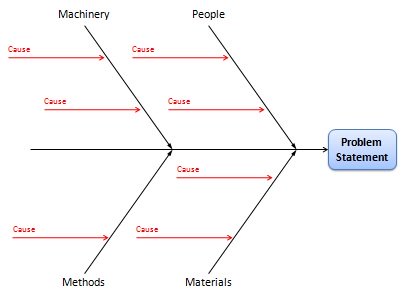
Use analogies to get to a solution
Analogical thinking uses information from one area to help with a problem in a different area. In short, solving a different problem can lead you to find a solution to the actual problem. Watch out though! Analogies are difficult for beginners and take some getting used to.
An example: In the "radiation problem," a doctor has a patient with a tumor that cannot be operated on. The doctor can use rays to destroy the tumor but it also destroys healthy tissue.
Two researchers, Gick and Holyoak , noted that people solved the radiation problem much more easily after being asked to read a story about an invading general who must capture the fortress of a king but be careful to avoid landmines that will detonate if large forces traverse the streets. The general then sends small forces of men down different streets so the army can converge at the fortress at the same time and can capture it at full force.
Ask "12 what elses"
In her book " The Architecture of All Abundance ," author Lenedra J. Carroll (aka the mother of pop star Jewel) talks about a question-and-answer technique for getting out of a problem.
When faced with a problem, ask yourself a question about it and brainstorm 12 answers ("12 what elses") to that problem. Then you can go further by taking one answer, turning it into a question and generating 12 more "what elses." Repeat until the solution is golden brown, fully baked, and ready to take out of the oven.

Start using these techniques today
Hopefully you find these different techniques useful and they get your imagination rolling with ideas on how to solve different problems.
And if that's the case, then you have four different takeaways to use the next time a problem gets you tangled up:
- Don't start by trying to solve the problem. First, aim to understand the root of the problem.
- Use questions to generate ideas for solving the problem.
- Look to previous problems to find the answers to new ones.
- Clear your preconceived ideas and past experiences before attempting to tackle the problem.
How to solve problems with Wrike
Empower your team to be even more productive with Wrike's project management and collaboration tools. With documents, revisions, and project -related communication all in one place, employees can use Wrike as a single source of truth for all project information.
Get 360-degree visibility of all your work and identify problems before they occur — see schedule or resource conflicts on Gantt charts, easily view progress with custom statuses, and move work along with automated approvals.
Want to streamline your processes and ease future problem-solving? Get started with a free two-week trial of Wrike today.
What are your favorite problem-solving techniques?
Do you have a problem-solving technique that has worked wonders for your organization? Hit the comments below and share your wisdom!

Lionel Valdellon
Lionel is a former Content Marketing Manager of Wrike. He is also a blogger since 1997, a productivity enthusiast, a project management newbie, a musician and producer of electronic downtempo music, a father of three, and a husband of one.
Sorry, this content is unavailable due to your privacy settings. To view this content, click the “Cookie Preferences” button and accept Advertising Cookies there.
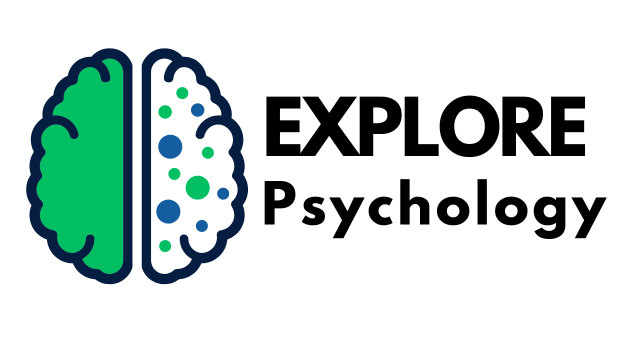
8 Effective Problem-Solving Strategies
Categories Cognition
If you need to solve a problem, there are a number of different problem-solving strategies that can help you come up with an accurate decision. Sometimes the best choice is to use a step-by-step approach that leads to the right solution, but other problems may require a trial-and-error approach.
Some helpful problem-solving strategies include: Brainstorming Step-by-step algorithms Trial-and-error Working backward Heuristics Insight Writing it down Getting some sleep
Table of Contents
Why Use Problem-Solving Strategies
While you can always make a wild guess or pick at random, that certainly isn’t the most accurate way to come up with a solution. Using a more structured approach allows you to:
- Understand the nature of the problem
- Determine how you will solve it
- Research different options
- Take steps to solve the problem and resolve the issue
There are many tools and strategies that can be used to solve problems, and some problems may require more than one of these methods in order to come up with a solution.
Problem-Solving Strategies
The problem-solving strategy that works best depends on the nature of the problem and how much time you have available to make a choice. Here are eight different techniques that can help you solve whatever type of problem you might face.
Brainstorming
Coming up with a lot of potential solutions can be beneficial, particularly early on in the process. You might brainstorm on your own, or enlist the help of others to get input that you might not have otherwise considered.
Step-by-Step
Also known as an algorithm, this approach involves following a predetermined formula that is guaranteed to produce the correct result. While this can be useful in some situations—such as solving a math problem—it is not always practical in every situation.
On the plus side, algorithms can be very accurate and reliable. Unfortunately, they can also be time-consuming.
And in some situations, you cannot follow this approach because you simply don’t have access to all of the information you would need to do so.
Trial-and-Error
This problem-solving strategy involves trying a number of different solutions in order to figure out which one works best. This requires testing steps or more options to solve the problem or pick the right solution.
For example, if you are trying to perfect a recipe, you might have to experiment with varying amounts of a certain ingredient before you figure out which one you prefer.
On the plus side, trial-and-error can be a great problem-solving strategy in situations that require an individualized solution. However, this approach can be very time-consuming and costly.
Working Backward
This problem-solving strategy involves looking at the end result and working your way back through the chain of events. It can be a useful tool when you are trying to figure out what might have led to a particular outcome.
It can also be a beneficial way to play out how you will complete a task. For example, if you know you need to have a project done by a certain date, working backward can help you figure out the steps you’ll need to complete in order to successfully finish the project.
Heuristics are mental shortcuts that allow you to come up with solutions quite quickly. They are often based on past experiences that are then applied to other situations. They are, essentially, a handy rule of thumb.
For example, imagine a student is trying to pick classes for the next term. While they aren’t sure which classes they’ll enjoy the most, they know that they tend to prefer subjects that involve a lot of creativity. They utilize this heuristic to pick classes that involve art and creative writing.
The benefit of a heuristic is that it is a fast way to make fairly accurate decisions. The trade-off is that you give up some accuracy in order to gain speed and efficiency.
Sometimes, the solution to a problem seems to come out of nowhere. You might suddenly envision a solution after struggling with the problem for a while. Or you might abruptly recognize the correct solution that you hadn’t seen before.
No matter the source, insight-based problem-solving relies on following your gut instincts. While this may not be as objective or accurate as some other problem-solving strategies, it can be a great way to come up with creative, novel solutions.
Write It Down
Sometimes putting the problem and possible solutions down in paper can be a useful way to visualize solutions. Jot down whatever might help you envision your options. Draw a picture, create a mind map, or just write some notes to clarify your thoughts.
Get Some Sleep
If you’re facing a big problem or trying to make an important decision, try getting a good night’s sleep before making a choice. Sleep plays an essential role in memory consolidation, so getting some rest may help you access the information or insight you need to make the best choice.
Other Considerations
Even with an arsenal of problem-solving strategies at your disposal, coming up with solutions isn’t always easy. Certain challenges can make the process more difficult. A few issues that might emerge include:
- Mental set : When people form a mental set, they only rely on things that have worked in the last. Sometimes this can be useful, but in other cases, it can severely hinder the problem-solving process.
- Cognitive biases : Unconscious cognitive biases can make it difficult to see situations clearly and objectively. As a result, you may not consider all of your options or ignore relevant information.
- Misinformation : Poorly sourced clues and irrelevant details can add more complications. Being able to sort out what’s relevant and what’s not is essential for solving problems accurately.
- Functional fixedness : Functional fixedness happens when people only think of customary solutions to problems. It can hinder out-of-the-box thinking and prevents insightful, creative solutions.
Important Problem-Solving Skills
Becoming a good problem solver can be useful in a variety of domains, from school to work to interpersonal relationships. Important problem-solving skills encompass being able to identify problems, coming up with effective solutions, and then implementing these solutions.
According to a 2023 survey by the National Association of Colleges and Employers, 61.4% of employers look for problem-solving skills on applicant resumes.
Some essential problem-solving skills include:
- Research skills
- Analytical abilities
- Decision-making skills
- Critical thinking
- Communication
- Time management
- Emotional intelligence
Solving a problem is complex and requires the ability to recognize the issue, collect and analyze relevant data, and make decisions about the best course of action. It can also involve asking others for input, communicating goals, and providing direction to others.
How to Become a Better Problem-Solver
If you’re ready to strengthen your problem-solving abilities, here are some steps you can take:
Identify the Problem
Before you can practice your problem-solving skills, you need to be able to recognize that there is a problem. When you spot a potential issue, ask questions about when it started and what caused it.
Do Your Research
Instead of jumping right in to finding solutions, do research to make sure you fully understand the problem and have all the background information you need. This helps ensure you don’t miss important details.
Hone Your Skills
Consider signing up for a class or workshop focused on problem-solving skill development. There are also books that focus on different methods and approaches.
The best way to strengthen problem-solving strategies is to give yourself plenty of opportunities to practice. Look for new challenges that allow you to think critically, analytically, and creatively.
Final Thoughts
If you have a problem to solve, there are plenty of strategies that can help you make the right choice. The key is to pick the right one, but also stay flexible and willing to shift gears.
In many cases, you might find that you need more than one strategy to make the choices that are right for your life.
Brunet, J. F., McNeil, J., Doucet, É., & Forest, G. (2020). The association between REM sleep and decision-making: Supporting evidences. Physiology & Behavior , 225, 113109. https://doi.org/10.1016/j.physbeh.2020.113109
Chrysikou, E. G, Motyka, K., Nigro, C., Yang, S. I. , & Thompson-Schill, S. L. (2016). Functional fixedness in creative thinking tasks depends on stimulus modality. Psychol Aesthet Creat Arts , 10(4):425‐435. https://doi.org/10.1037/aca0000050
Sarathy, V. (2018). Real world problem-solving. Front Hum Neurosci , 12:261. https://doi.org/10.3389/fnhum.2018.00261

Got a Problem? The Good News Is You Only Have Four Options
Limited choices make difficult situations a little less overwhelming..
Posted February 7, 2012 | Reviewed by Davia Sills
Life is full of wonderful moments. It's also full of painful ones. There's no choice about many of those painful moments, but how you handle the pain can add to or decrease the emotional suffering in your life. That's pretty important.
When you are overwhelmed by life situations, one way you might naturally respond is by defending yourself. You attempt to cope in ways that lessen the stress . But sometimes people have coping strategies that offer temporary relief, but make the situation worse in the long run. For example, crawling back into bed when you need to work or have commitments with friends. Maybe you overeat or hide from the world, then feel guilty and ashamed afterward.
Sometimes, in an effort to take action, people attempt to solve problems that cannot be solved, becoming more and more frustrated when their efforts don't work. Others become paralyzed, unable to decide what to do. Intense emotions can be overwhelming, fatiguing, and cloud your ability to think clearly. Searching and searching for the right solution adds to anxiety and upset.
What if you knew that no matter what the situation, you really had only four choices about what to do? Using a system for addressing difficult situations may help you be more effective in choosing your coping strategies. Marsha Linehan, the creator of Dialectical Behavior Therapy , gives four options for any problem that you face: Solve the problem, change your perception of the problem, radically accept the situation, or stay miserable.
Choice 1: Solve the Problem.
There are many problem-solving strategies, but most use the same steps. First, define the problem. Be as specific as possible. Use numbers whenever possible. For example, "I've been late for work four days this week."
Next, analyze the problem. Is it in your power to solve the problem? If not, then consider one of the other three options. If yes, then continue to analyze the problem.
What are the reasons you've been late? Is the reason always the same? Does it depend on your mood or what time you went to bed? Does it depend on what tasks you have to do at work? Who you work with? Where you went the night before? Consider the who, what, when, and where of the behavior you want to change.
The third step is to consider possible solutions. Think of various solutions that could solve the problem. Evaluate the solutions carefully to determine which might work best for you. What are the pros and cons of different actions? What could go wrong? What can you do to make the solution more likely to work?
For example, if you decide to give yourself a weekly budget and to freeze your credit cards in a block of ice, what would you do in case of an emergency? Would giving yourself a certain amount of spending money for the day work better than an amount for the week?
A key variable to remember is how difficult it is to make changes in behavior. A strong commitment to change is important. Be specific in stating the change you want to make. Be willing to make small changes at first.
Implement the solution: Take action. Trouble-shoot as you go along, tweaking it to resolve any issues you didn't anticipate.
Choice 2: Change Your Perception.
Changing your perception of the problem can be a challenge. An example of changing your perception of a problem might be to see a difficult boss as an opportunity to work on coping with someone who is disorganized and demanding. If you feel irritated because your house is cluttered with toys, maybe change your perception to one that the clutter is a signal to be grateful for young children in the home.
Changing your perception could also mean changing your view of emotion . Instead of trying never to feel anger , look at your frustration as a source of information, perhaps a signal that you need to speak up for yourself.
Choice 3: Radically Accept the Situation.
Radical Acceptance means wholeheartedly accepting what is real. Radical acceptance is like saying, "It is what it is," and giving up your resistance to the situation. Radical acceptance could be about issues we can't control or concerns that we decide not to change, at least for the time being. It doesn't mean you agree with what has happened or that you think it is reasonable.

Choice 4: Stay Miserable.
Of course, staying miserable is not a choice anyone wants to make, and no one would want to consider it as an option. But if you can't solve the problem, can't change your perception, and you aren't ready to radically accept the situation, then staying miserable is the only option left.
Staying miserable may be all you can do in certain situations. Sometimes staying miserable may be what you have to do until you are ready to do something else. There are ways to cope that can help until another option can be used.
In future posts, we'll look at specific skills that enhance your ability to problem-solve, change your perception, or radically accept situations. We'll also consider ways to get through the times when you can't make any of those choices.

Karyn Hall, Ph.D. , is the author of The Emotionally Sensitive Person, Mindfulness Exercises, and co-author of The Power of Validation.
- Find a Therapist
- Find a Treatment Center
- Find a Psychiatrist
- Find a Support Group
- Find Online Therapy
- United States
- Brooklyn, NY
- Chicago, IL
- Houston, TX
- Los Angeles, CA
- New York, NY
- Portland, OR
- San Diego, CA
- San Francisco, CA
- Seattle, WA
- Washington, DC
- Asperger's
- Bipolar Disorder
- Chronic Pain
- Eating Disorders
- Passive Aggression
- Personality
- Goal Setting
- Positive Psychology
- Stopping Smoking
- Low Sexual Desire
- Relationships
- Child Development
- Self Tests NEW
- Therapy Center
- Diagnosis Dictionary
- Types of Therapy

Sticking up for yourself is no easy task. But there are concrete skills you can use to hone your assertiveness and advocate for yourself.
- Emotional Intelligence
- Gaslighting
- Affective Forecasting
- Neuroscience
- Product overview
- All features
- App integrations
CAPABILITIES
- project icon Project management
- Project views
- Custom fields
- Status updates
- goal icon Goals and reporting
- Reporting dashboards
- workflow icon Workflows and automation
- portfolio icon Resource management
- Time tracking
- my-task icon Admin and security
- Admin console
- asana-intelligence icon Asana AI
- list icon Personal
- premium icon Starter
- briefcase icon Advanced
- Goal management
- Organizational planning
- Campaign management
- Creative production
- Content calendars
- Marketing strategic planning
- Resource planning
- Project intake
- Product launches
- Employee onboarding
- View all uses arrow-right icon
- Project plans
- Team goals & objectives
- Team continuity
- Meeting agenda
- View all templates arrow-right icon
- Work management resources Discover best practices, watch webinars, get insights
- What's new Learn about the latest and greatest from Asana
- Customer stories See how the world's best organizations drive work innovation with Asana
- Help Center Get lots of tips, tricks, and advice to get the most from Asana
- Asana Academy Sign up for interactive courses and webinars to learn Asana
- Developers Learn more about building apps on the Asana platform
- Community programs Connect with and learn from Asana customers around the world
- Events Find out about upcoming events near you
- Partners Learn more about our partner programs
- Support Need help? Contact the Asana support team
- Asana for nonprofits Get more information on our nonprofit discount program, and apply.
Featured Reads
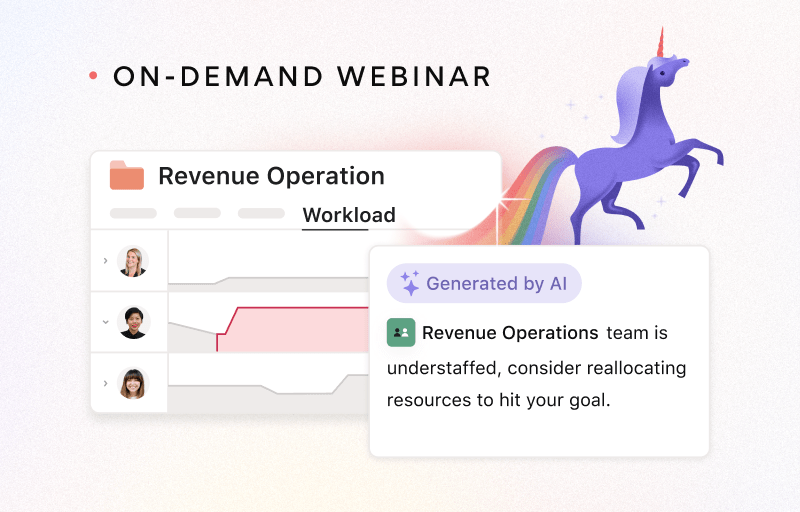
- Collaboration |
- Turn your team into skilled problem sol ...
Turn your team into skilled problem solvers with these problem-solving strategies

Picture this, you're handling your daily tasks at work and your boss calls you in and says, "We have a problem."
Unfortunately, we don't live in a world in which problems are instantly resolved with the snap of our fingers. Knowing how to effectively solve problems is an important professional skill to hone. If you have a problem that needs to be solved, what is the right process to use to ensure you get the most effective solution?
In this article we'll break down the problem-solving process and how you can find the most effective solutions for complex problems.
What is problem solving?
Problem solving is the process of finding a resolution for a specific issue or conflict. There are many possible solutions for solving a problem, which is why it's important to go through a problem-solving process to find the best solution. You could use a flathead screwdriver to unscrew a Phillips head screw, but there is a better tool for the situation. Utilizing common problem-solving techniques helps you find the best solution to fit the needs of the specific situation, much like using the right tools.
Decision-making tools for agile businesses
In this ebook, learn how to equip employees to make better decisions—so your business can pivot, adapt, and tackle challenges more effectively than your competition.
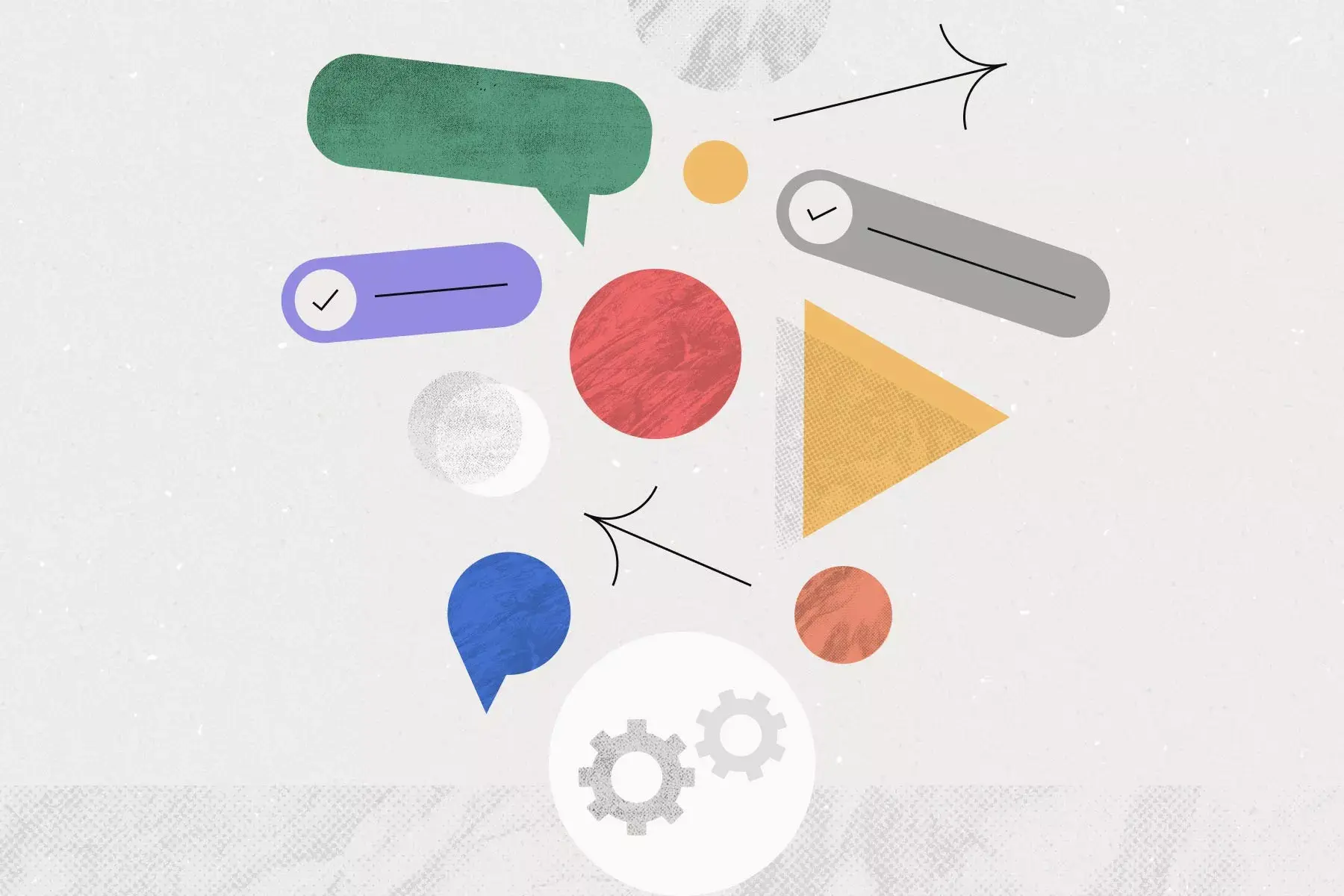
4 steps to better problem solving
While it might be tempting to dive into a problem head first, take the time to move step by step. Here’s how you can effectively break down the problem-solving process with your team:
1. Identify the problem that needs to be solved
One of the easiest ways to identify a problem is to ask questions. A good place to start is to ask journalistic questions, like:
Who : Who is involved with this problem? Who caused the problem? Who is most affected by this issue?
What: What is happening? What is the extent of the issue? What does this problem prevent from moving forward?
Where: Where did this problem take place? Does this problem affect anything else in the immediate area?
When: When did this problem happen? When does this problem take effect? Is this an urgent issue that needs to be solved within a certain timeframe?
Why: Why is it happening? Why does it impact workflows?
How: How did this problem occur? How is it affecting workflows and team members from being productive?
Asking journalistic questions can help you define a strong problem statement so you can highlight the current situation objectively, and create a plan around that situation.
Here’s an example of how a design team uses journalistic questions to identify their problem:
Overarching problem: Design requests are being missed
Who: Design team, digital marketing team, web development team
What: Design requests are forgotten, lost, or being created ad hoc.
Where: Email requests, design request spreadsheet
When: Missed requests on January 20th, January 31st, February 4th, February 6th
How : Email request was lost in inbox and the intake spreadsheet was not updated correctly. The digital marketing team had to delay launching ads for a few days while design requests were bottlenecked. Designers had to work extra hours to ensure all requests were completed.
In this example, there are many different aspects of this problem that can be solved. Using journalistic questions can help you identify different issues and who you should involve in the process.
2. Brainstorm multiple solutions
If at all possible, bring in a facilitator who doesn't have a major stake in the solution. Bringing an individual who has little-to-no stake in the matter can help keep your team on track and encourage good problem-solving skills.
Here are a few brainstorming techniques to encourage creative thinking:
Brainstorm alone before hand: Before you come together as a group, provide some context to your team on what exactly the issue is that you're brainstorming. This will give time for you and your teammates to have some ideas ready by the time you meet.
Say yes to everything (at first): When you first start brainstorming, don't say no to any ideas just yet—try to get as many ideas down as possible. Having as many ideas as possible ensures that you’ll get a variety of solutions. Save the trimming for the next step of the strategy.
Talk to team members one-on-one: Some people may be less comfortable sharing their ideas in a group setting. Discuss the issue with team members individually and encourage them to share their opinions without restrictions—you might find some more detailed insights than originally anticipated.
Break out of your routine: If you're used to brainstorming in a conference room or over Zoom calls, do something a little different! Take your brainstorming meeting to a coffee shop or have your Zoom call while you're taking a walk. Getting out of your routine can force your brain out of its usual rut and increase critical thinking.
3. Define the solution
After you brainstorm with team members to get their unique perspectives on a scenario, it's time to look at the different strategies and decide which option is the best solution for the problem at hand. When defining the solution, consider these main two questions: What is the desired outcome of this solution and who stands to benefit from this solution?
Set a deadline for when this decision needs to be made and update stakeholders accordingly. Sometimes there's too many people who need to make a decision. Use your best judgement based on the limitations provided to do great things fast.
4. Implement the solution
To implement your solution, start by working with the individuals who are as closest to the problem. This can help those most affected by the problem get unblocked. Then move farther out to those who are less affected, and so on and so forth. Some solutions are simple enough that you don’t need to work through multiple teams.
After you prioritize implementation with the right teams, assign out the ongoing work that needs to be completed by the rest of the team. This can prevent people from becoming overburdened during the implementation plan . Once your solution is in place, schedule check-ins to see how the solution is working and course-correct if necessary.
Implement common problem-solving strategies
There are a few ways to go about identifying problems (and solutions). Here are some strategies you can try, as well as common ways to apply them:
Trial and error
Trial and error problem solving doesn't usually require a whole team of people to solve. To use trial and error problem solving, identify the cause of the problem, and then rapidly test possible solutions to see if anything changes.
This problem-solving method is often used in tech support teams through troubleshooting.
The 5 whys problem-solving method helps get to the root cause of an issue. You start by asking once, “Why did this issue happen?” After answering the first why, ask again, “Why did that happen?” You'll do this five times until you can attribute the problem to a root cause.
This technique can help you dig in and find the human error that caused something to go wrong. More importantly, it also helps you and your team develop an actionable plan so that you can prevent the issue from happening again.
Here’s an example:
Problem: The email marketing campaign was accidentally sent to the wrong audience.
“Why did this happen?” Because the audience name was not updated in our email platform.
“Why were the audience names not changed?” Because the audience segment was not renamed after editing.
“Why was the audience segment not renamed?” Because everybody has an individual way of creating an audience segment.
“Why does everybody have an individual way of creating an audience segment?” Because there is no standardized process for creating audience segments.
“Why is there no standardized process for creating audience segments?” Because the team hasn't decided on a way to standardize the process as the team introduced new members.
In this example, we can see a few areas that could be optimized to prevent this mistake from happening again. When working through these questions, make sure that everyone who was involved in the situation is present so that you can co-create next steps to avoid the same problem.
A SWOT analysis
A SWOT analysis can help you highlight the strengths and weaknesses of a specific solution. SWOT stands for:
Strength: Why is this specific solution a good fit for this problem?
Weaknesses: What are the weak points of this solution? Is there anything that you can do to strengthen those weaknesses?
Opportunities: What other benefits could arise from implementing this solution?
Threats: Is there anything about this decision that can detrimentally impact your team?
As you identify specific solutions, you can highlight the different strengths, weaknesses, opportunities, and threats of each solution.
This particular problem-solving strategy is good to use when you're narrowing down the answers and need to compare and contrast the differences between different solutions.
Even more successful problem solving
After you’ve worked through a tough problem, don't forget to celebrate how far you've come. Not only is this important for your team of problem solvers to see their work in action, but this can also help you become a more efficient, effective , and flexible team. The more problems you tackle together, the more you’ll achieve.
Looking for a tool to help solve problems on your team? Track project implementation with a work management tool like Asana .
Related resources
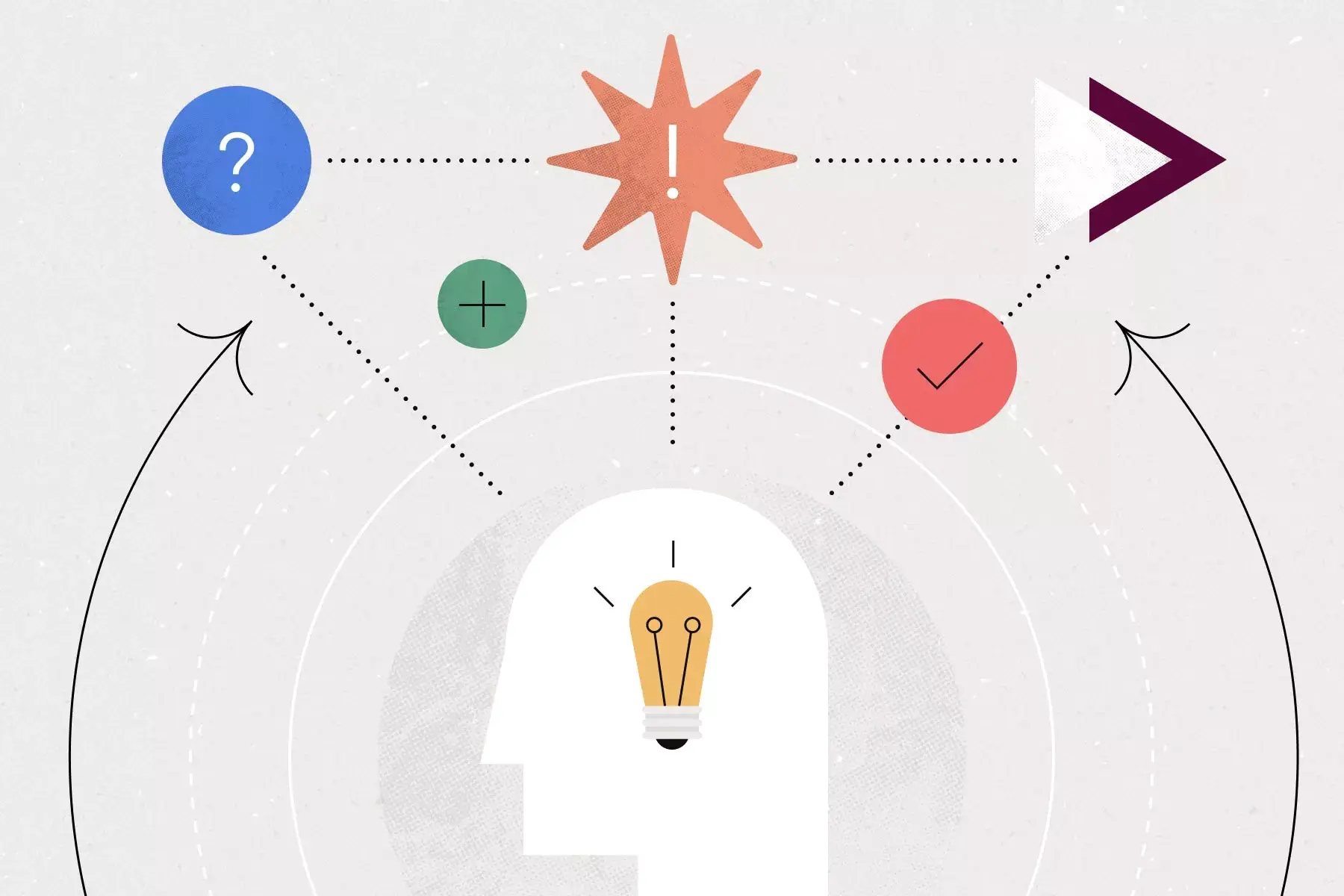
How to build your critical thinking skills in 7 steps (with examples)
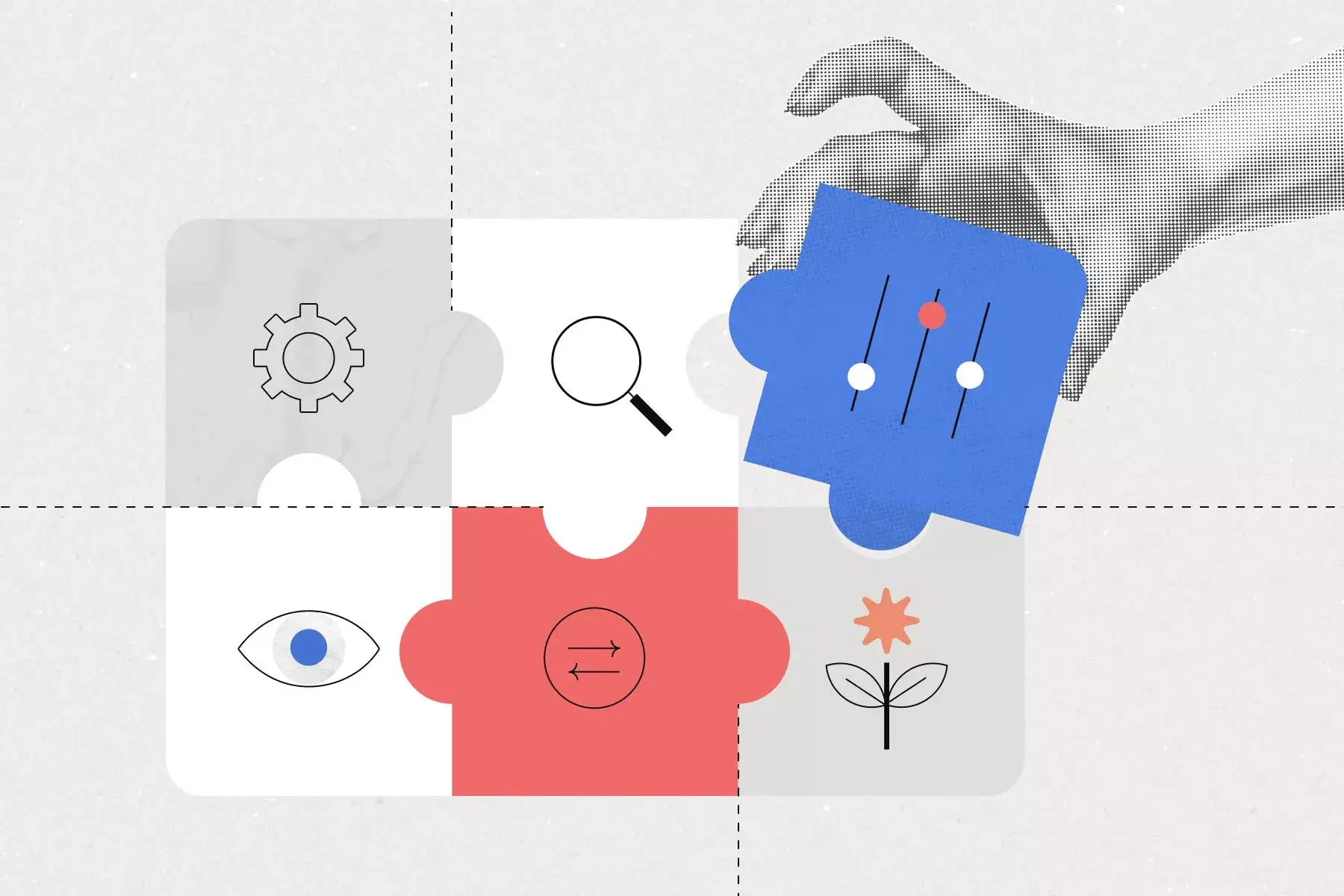
6 ways to develop adaptability in the workplace and embrace change
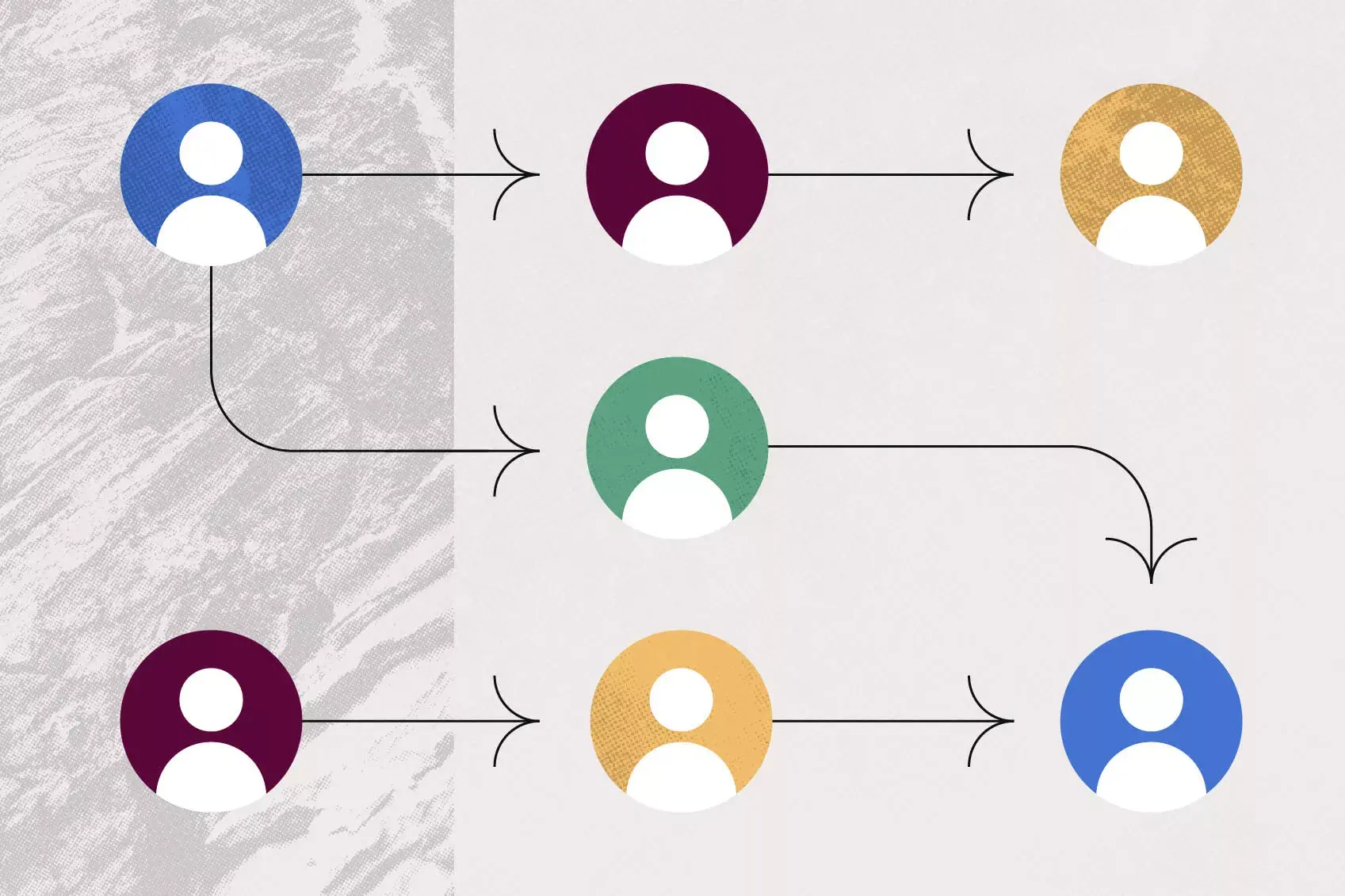
4 ways to establish roles and responsibilities for team success
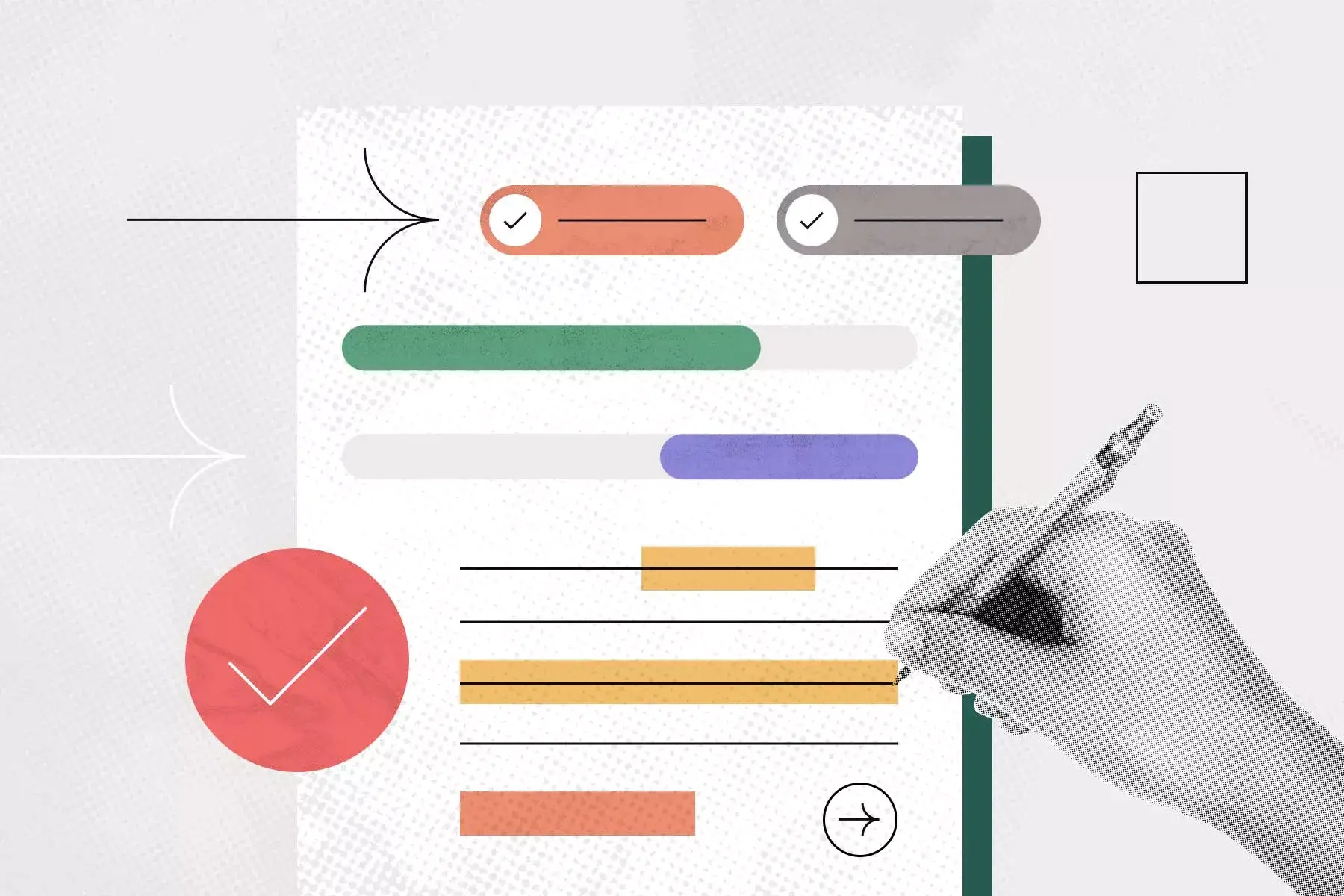
9 tips for taking better meeting notes
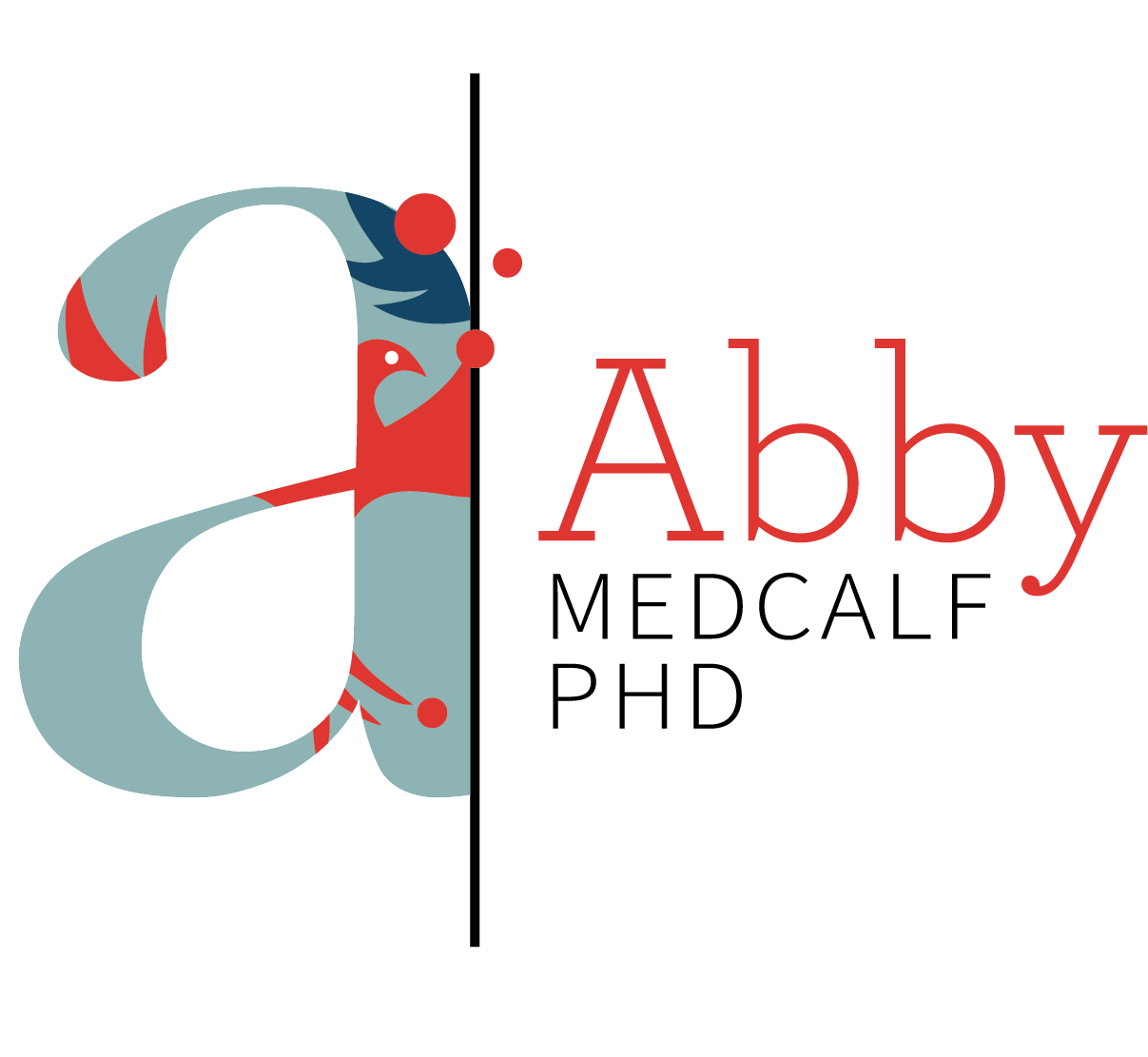
New? Start Here
The Four Ways to Solve Any Problem

Dialectical Behavior Therapy, or DBT, is a type of cognitive-behavioral therapy created by psychologist Marsha Linehan in the early 1980s. It’s an evidence-based, highly successful type of therapy used to help people regulate intense emotions and improve their relationships. What does this have to do with problem-solving? Well, in all its brilliance, DBT outlines four ways to solve any problem and I’ve been using this strategy with great success with all my clients. These four ways to solve any problem are easy to learn and integrate so you can start meeting challenges with clarity and calm.
11-minute read
A true hero in the field of psychology is Marsha Linehan, the creator of Dialectical Behavioral Therapy or DBT . Linehan was diagnosed with schizophrenia in her teen years and was sent to inpatient treatment, where she had electroshock therapy, so she’s someone who brought a special understanding and empathy to her later work. She graduated from Loyola University in Chicago and was working initially with highly suicidal women. To make a long story short, many of these people who were highly suicidal also had borderline personality disorder, so her work emerged, with a lot of trial and error, to have core components of being solution-based while also focusing on strong validation.
Ultimately, she created DBT, which is comprised of four different modules of skills training. These include mindfulness, distress tolerance, emotion regulation, and interpersonal effectiveness. Again, the whole idea is that people who work on these skills will be able to better manage their thoughts, emotions, and actions.
Within these DBT skills modules is a four-option system for handling any challenge that might come your way, which are:
- Solving the problem.
- Finding ways to feel better about the problem.
- Learning to accept the problem, or
- Staying miserable.
Over the many years of my practice, I’ve been employing these four options with clients, and I will tell you, they always work. So, let’s get to it.
Choice #1: Solve the Problem
I know this seems obvious but, for many people, they’ll spin their wheels and feel overwhelmed with something, so they really can’t figure out how to solve it (hence the reason I have a waiting list of people to see me). While there are many ways to solve problems and dilemmas, most involve specific steps. And the first step is generally to define or identify the actual problem. I can’t tell you how many people are often able to quickly jump to a clear solution just by being clear on what the actual problem was!
Learn how your lizard brain is keeping you stuck and specific tools to break free and start living a connected, happy life.
When you’re defining the problem, you get clear on the facts without all your opinions, worries, judgments, and anxiety getting in the way. This makes the path forward more clear. Do your best to be as specific as possible. “I’m too fat” is “I’m currently 12 pounds over my goal weight.” I’m always late for work is, “I was late three days this week.” My partner is an asshole turns into, “Yesterday, my partner said x, which hurt my feelings.”
The next step of problem-solving is to honestly evaluate the problem. The big question to ask yourself here is: “Am I in a position to influence or change this particular situation?” If the answer here is “No, I’m not in a position to change or influence this,” then it might be a good idea to move on to one of the other choices for solving a problem.
But let’s say you answered, “Yes, I do have some ability to influence or change this situation,” then you’d move on to step three, where you’d brainstorm all the possible next steps you could take and then decide on one or maybe two. When you’re brainstorming, try to objectively identify any reasons behind the problem you’re having. For example, maybe you and your partner are fighting a lot right now, but you just had a baby, or they just changed jobs, or maybe a parent died. Consider the who, what, when, and where of the behavior you want to change.
Finally, in step four, you’d give those ideas a try and then continuously evaluate your results. If it’s not working, can you try one of the other solutions you brainstormed, or does this solution you attempted simply need some tweaking to make it more effective? What troubleshooting could you do to create a lasting solution?
Learn my five step process for making decisions and getting out of analysis paralysis.
Choice 2: feel better by changing your perception.
Sometimes you can’t solve the problem. Sometimes you can’t make the changes you want or need. Maybe you’re just not willing to make certain changes right now, or maybe you can’t see a path where you have the power to make the changes you desire.
In these situations, another choice is to change your perception or the way you think about the obstacle you’re facing. Over 2000 years ago, Roman Emperor Marcus Aurelius said, “If you are distressed by anything external, the pain is not due to the thing itself, but to your estimate of it; and this you have the power to revoke at any moment.” I’ve done quite a few episodes on this particular choice , so I’m not going to go deep on this one now, but let me say a few words.
One of the best ways to change your perception in a given situation is a technique called cognitive reframing, which is the fundamental underpinning of cognitive behavioral therapy (CBT), which is basically what all therapists use to help you feel better.
If you like cognitive reframing, you’ll love the ABC technique!
At its most basic level, cognitive reframing helps you look at a situation, person, thought, or feeling from a different perspective. It’s a strategy that helps you open your mindset to a new point of view – a new angle on what’s happening so you can think differently about it and learn how to let things go.
This is crucial because you feel the way you think . So, changing your thinking about something will change your feeling about it. The thoughts you think and the subsequent emotions that you feel are almost always rooted in old, negative patterns that you’ve had since childhood. These ways of thinking and coping likely served you in some way then, but they definitely don’t serve you now.
You’ve heard me say before that life is happening for you, not to you. That’s a quick example of a cognitive reframe. Thinking of problems as challenges is another cognitive reframe. Some reframes are easy, and some are a bit harder. I outline my five-step process for cognitive reframing in that episode I just mentioned, so go back and listen to that if this is something you want to get great at.
Choice 3: Practice Radical Acceptance
Your next choice is to radically accept the situation. I haven’t talked about radical acceptance before, so I’m going to spend a little more time on this one.
So much of our unhappiness comes from not accepting what is. Yup, you didn’t go to college. Yup, you said something to your dad that upset him. Yup, you never found peace in the relationship with your mom and now she’s dead. Yup, yup, and yup. When we regret and push back against things that absolutely cannot be changed, we put ourselves in a state of hopeless and helpless misery. It’s railing against the machine in its penultimate form. And it’s exhausting because fighting reality is draining work! When you refuse to accept that you were unfairly passed over for that promotion, or that your partner cheated on you, or that your parents always take your brother’s side, you’re the one who suffers the most. You’re the one enhancing and extending your pain!
Radical acceptance has been around for a long time. At its core, it’s based on the idea that suffering doesn’t come from the pain in a situation; it comes from your attachment (in one form or another) to that pain. The Stoics of ancient Greece built their philosophy on it. Practicing non-attachment is a major tenet of Buddhism, and Carl Rogers, one of the forefathers of modern psychology, believed that acceptance is the first step towards change. He said, “The curious paradox is that when I accept myself just as I am, then I can change.” And, of course, Carl Jung famously said, “What you resist not only persists, but will grow in size.” Yes, what you resist persists, and that’s where radical acceptance comes in.
With radical acceptance, you’re not attached to painful events from your past. You stop judging what’s happened so you can accept reality for what it is instead of being caught up in an emotional reaction to it. Radical acceptance means you accept the situations and people that are outside of your control, without judgment, which will help ease the suffering you believe is caused by them.
Radical acceptance means you completely, wholeheartedly, and with every fiber of your being, accept what is real and finally surrender (in a good way). Radical acceptance doesn’t mean you agree with what’s happened or think it’s OK. It doesn’t mean you condone someone’s unhealthy behavior or that you should put up with abuse. It means you stop resisting what is. It means you’re now looking at your situation without judging yourself or the other person. You’re clearly seeing what’s going on with no denial and no self-hate. It’s from this clearer perspective that you can take action or find peace.
No more self-pitying, “Why me?” thinking. No more, “This is so unfair” or “poor me” attitude. Radical acceptance means you see what is, at least for now.
The founder of DBT, Marsha Linehan herself, said that radical acceptance is letting go of what isn’t possible . She says, “Radical acceptance rests on letting go of the illusion of control and a willingness to notice and accept things as they are right now, without judging.” She breaks down radical acceptance into three parts:
- Accepting reality; it is what it is.
- Accepting that the event or situation causing pain has a cause.
- Accepting life can be worth living, even with painful events.
If you’re looking to practice radical acceptance, you can pay attention to a few things:
- Noticing how much you judge yourself or others. Basically, any time you think something is right or wrong or have an opinion, it’s a judgment, so stop and have a look.
- Getting rid of “should” and “must,” it’s not fair, why me, and wishing something was different.
- Being present in your moments and practicing true mindfulness.

And you can also use coping statements as an effective tool. Coping statements are all about reminding you that there are things you just can’t change. In this way, you accept the reality of what is and let go of judging, regretful, anxious, or negative thoughts about a person or situation.
- In the 12-steps of Alcoholics and Narcotics Anonymous, we say a shortened version of the Serenity Prayer a lot : God grant me the serenity to accept the things I cannot change, courage to change the things I can, and the wisdom to know the difference.
- I’m OK here in the present moment.
- The only thing I can control is this moment.
- Everything is as it should be, right now.
- I can’t change the past. I can only live in the now.
- Regret isn’t helpful.
- The thought I’m having might be true, but is it helpful/kind?
- Life is happening for me, not to me.
Have a coping statement that works for you, at the ready, on repeat.
Choice 4: Stay Miserable
No one likes hearing this but, if you don’t choose one of the other choices, then you are, by default, choosing option four: staying miserable. There are no other options when it comes to solving a problem!
I know you don’t want to make this choice, but it’s important to see that you are responsible (I say with love) for all your choices, and staying miserable is one of them. I’m not saying you’re to blame for your choices, but you absolutely need to take responsibility if you’re continuing to be miserable because you’re not employing one of the other three options.
If you can’t solve the problem, can’t change your perception, and don’t want to radically accept the situation, then staying miserable is what’s left. Now, this can be OK too. Maybe you’re just not ready to make the changes needed with the other three options. Maybe being miserable, but knowing you’re making a choice, will help you feel more empowered. You don’t need to beat yourself up about it. You don’t need to judge yourself. In fact, you could even employ a little self-compassion right here and note that this is where you are right now.
If you do choose this option, I want you to make it useful and helpful. Do your best to continue practicing your self-awareness and mindfulness. Make an honest evaluation of how you’re really feeling day-to-day. Are you making things worse with this choice? What are your thoughts about the situation? How are you acting from those thoughts and emotions?
Resources for Four Ways to Solve Any Problem
How Your Lizard Brain Is Keeping You Stuck
The 5-Step Process to Making Decisions and Getting Out of Analysis Paralysis
How to Stop Overthinking and Let Things Go That Bother You
Change How You Feel with This Easy Tool
Mindfulness Starter Kit
Is Self-Compassion the Secret to a Happy Relationship?
Four Ways to Be More Self-Aware
DBT Skills Training Manual
Radical Acceptance by Tara Brach
Linehan, Marsha M., Wilks, Chelsey R. (2018) The Course and Evolution of Dialectical Behavior Therapy, The American Journal of Psychotherapy, https://doi.org/10.1176/appi.psychotherapy.2015.69.2.97

GRAB MY BOOK!
Create a happy, connected relationship, even if your partner won’t do a thing! Get my Amazon #1 best-selling book: Be Happily Married Even if Your Partner Won’t Do a Thing.

CHECK OUT MY PODCAST!
I’ll teach you simple, actionable tools and strategies that you can use today to make your relationship the best it’s ever been.

SIGN UP FOR MY NEWSLETTER
Get your weekly dose of inspiration to keep you on track!

GET MY FREE COMMUNICATION TOOL KIT!
Build a connected, loving relationship with the FREE Communication Tool Kit for Couples.
Most Popular Posts

SIGNS THAT SOMEONE IS GASLIGHTING YOU AND WHAT TO DO ABOUT IT
Has someone been gaslighting you? Gaslighting is a dangerous form of manipulation where someone acts in such a way that you start doubting your perceptions, your memory or your own judgment. You often walk away from the conversation feeling like the crazy one. Today,...

HOW TO STOP OVERTHINKING AND LET THINGS GO THAT BOTHER YOU
Wondering how to let things go that bother you? How do you stop going round and round in your head and stop overthinking? Maybe your partner hurt you or you’re worried about paying your bills or maybe you’re freaking out about COVID and the Delta variant and you...
Subscribe today to get my weekly thoughts, best practices and funny stories (you won’t believe my life!). This weekly reminder will keep you motivated to stay on the path to creating connected, happy relationships (especially the one with yourself)!
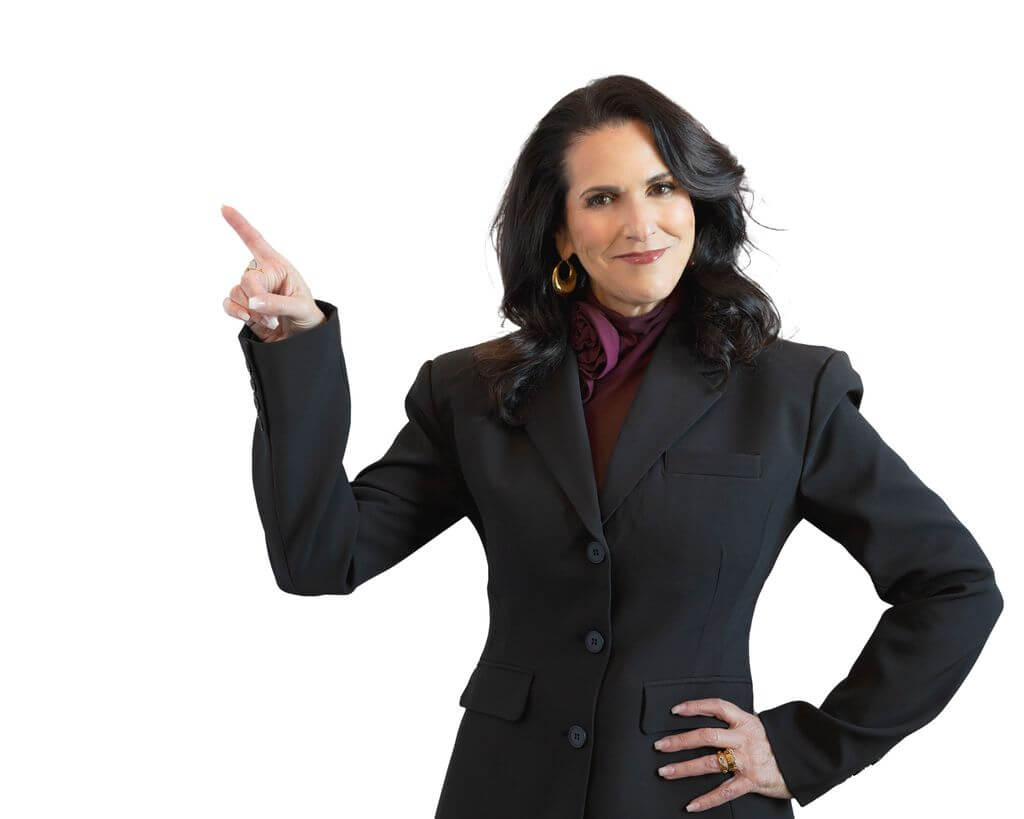
Get your weekly love letter with all things Abby and life
Subscribe today to get my weekly thoughts, best practices and funny stories (you won’t believe my life!). This weekly reminder will keep you on the path to creating connected, happy relationships (especially the one with yourself)!
You have Successfully Subscribed!
Get your weekly newsletter with all things abby and life.
People with a 'growth mindset' are better problem-solving — here are 4 ways to develop one, according to experts
- People with healthy growth mindsets are often more curious and motivated to learn new things.
- Researchers from Yale-NUS College say this mindset can be developed with practice.
- Instead of expecting to simply "find" your passions, make an effort to nurture and develop them.

Problem-solving may be among the more underrated skills. Research from Yale-NUS College suggests we can improve our problem-solving skills with something called a "growth mindset."
What are growth mindsets?
People with growth mindsets see interest or a spark of curiosity as something that can be developed, explains Paul O'Keefe, an assistant professor of psychology at Yale-NUS College.
"By understanding interest is [a] thing that develops over time, maybe with interaction with getting involved with commitment, [growth mindsets] build over time and grow and become interests," O'Keefe said.
O'Keefe's team's 2021 study builds on earlier work. Its research thus far suggests that the benefits of cultivating growth mindsets are plentiful, including adaptability, innovative thinking, and problem-solving.
How to develop a growth mindset
If you went to a liberal-arts school, you may already be further along than you think, since liberal-arts education focuses on broadening students' knowledge with a foundation in a variety of disciplines. This supports the growth theory of interest from an educational standpoint.
In contrast, O'Keefe's research indicates students who believe their interests lie in limited areas are "not as inclined to see how outside areas of knowledge can be connected and integrated with their existing interests."
1. Feed your curiosity
People with growth mindsets are often more curious and motivated to learn. When you don't know something and absolutely have to know it, chances are you consult Google. In " The Science of Interest ," O'Keefe and Judith Harackiewicz say "interest" can be sparked by a desire to fill gaps in our knowledge.
Related stories
Whether you're looking up why clouds are shaped a certain way or watching YouTube tutorials on how to play the harmonica, you're doing it because you don't know and you want to know.
2. Rethink 'finding your passion'
Have you ever noticed how influential figures talk about "finding your calling"? Well, it turns out the idea that your passion is just there, waiting for you to find it if you look hard enough, may just not be true.
O'Keefe's research calls this idea (of a passion waiting to be found) a "fixed mindset of interests." People with fixed mindsets of interest believe their interests are already there, inherent within them, and just need to be revealed.
Erik Weisz didn't wake up and realize he was a magician overnight; he spent years practicing and developing tricks before he became Harry Houdini. In reality, instead of finding our passions, we need to take the time and effort to nurture them.
3. Become a 't-shaped' person
Though great things can come from developing one expertise, O'Keefe stresses that the potential for innovation when you color outside the lines is tremendous.
"Once we start to expand our focus outside of our silo of say, interests, we start to understand the value of other information," O'Keefe said. "And we begin to see connections between what we know already from our own interests, and connecting it to new interests."
"One of the things they do at their organization is that they hire people who they call 'T-shaped' people." T-shaped people have a singular pillar of expertise or interest with broader interests. "They might not be experts in another area, but they certainly have some basic knowledge, some interests that are far-reaching."
4. Look at your work environment
At an organizational level, growth mindsets can be underestimated. Think of the old-school finance giant that hired the best of the best in marketing, sales, finance, etc. Those hires went on to compose tighter groups of highly specialized professionals.
But when you hire diverse teams, "you don't get people who are all just thinking from one discipline," O'Keefe explained. "You're getting people who have been exposed to different ideas."
What's more, you can't be the "logical" person of the team who looks down on the "artsy" person in the group. People with growth mindsets value being around people they can learn from. So, the next time you're at a conference or networking event, rather than seek out the people you'd have the most in common with, branch out and talk to the person you'd never ordinarily cross paths with. Maybe you'll learn a thing or two.
Correction: September 8, 2023 — An earlier version of this story misstated the name of the college where Paul O'Keefe works. It's Yale-NUS College, not Yale-National University of Singapore.
- Main content
More From Forbes
Stumped five ways to hone your problem-solving skills.
- Share to Facebook
- Share to Twitter
- Share to Linkedin
Respect the worth of other people's insights
Problems continuously arise in organizational life, making problem-solving an essential skill for leaders. Leaders who are good at tackling conundrums are likely to be more effective at overcoming obstacles and guiding their teams to achieve their goals. So, what’s the secret to better problem-solving skills?
1. Understand the root cause of the problem
“Too often, people fail because they haven’t correctly defined what the problem is,” says David Ross, an international strategist, founder of consultancy Phoenix Strategic Management and author of Confronting the Storm: Regenerating Leadership and Hope in the Age of Uncertainty .
Ross explains that as teams grapple with “wicked” problems – those where there can be several root causes for why a problem exists – there can often be disagreement on the initial assumptions made. As a result, their chances of successfully solving the problem are low.
“Before commencing the process of solving the problem, it is worthwhile identifying who your key stakeholders are and talking to them about the issue,” Ross recommends. “Who could be affected by the issue? What is the problem – and why? How are people affected?”
He argues that if leaders treat people with dignity, respecting the worth of their insights, they are more likely to successfully solve problems.
Best High-Yield Savings Accounts Of 2024
Best 5% interest savings accounts of 2024, 2. unfocus the mind.
“To solve problems, we need to commit to making time to face a problem in its full complexity, which also requires that we take back control of our thinking,” says Chris Griffiths, an expert on creativity and innovative thinking skills, founder and CEO of software provider OpenGenius, and co-author of The Focus Fix: Finding Clarity, Creativity and Resilience in an Overwhelming World .
To do this, it’s necessary to harness the power of the unfocused mind, according to Griffiths. “It might sound oxymoronic, but just like our devices, our brain needs time to recharge,” he says. “ A plethora of research has shown that daydreaming allows us to make creative connections and see abstract solutions that are not obvious when we’re engaged in direct work.”
To make use of the unfocused mind in problem solving, you must begin by getting to know the problem from all angles. “At this stage, don’t worry about actually solving the problem,” says Griffiths. “You’re simply giving your subconscious mind the information it needs to get creative with when you zone out. From here, pick a monotonous or rhythmic activity that will help you to activate the daydreaming state – that might be a walk, some doodling, or even some chores.”
Do this regularly, argues Griffiths, and you’ll soon find that flashes of inspiration and novel solutions naturally present themselves while you’re ostensibly thinking of other things. He says: “By allowing you to access the fullest creative potential of your own brain, daydreaming acts as a skeleton key for a wide range of problems.”
3. Be comfortable making judgment calls
“Admitting to not knowing the future takes courage,” says Professor Stephen Wyatt, founder and lead consultant at consultancy Corporate Rebirth and author of Antidote to the Crisis of Leadership: Opportunity in Complexity . “Leaders are worried our teams won’t respect us and our boards will lose faith in us, but what doesn’t work is drawing up plans and forecasts and holding yourself or others rigidly to them.”
Wyatt advises leaders to heighten their situational awareness – to look broadly, integrate more perspectives and be able to connect the dots. “We need to be comfortable in making judgment calls as the future is unknown,” he says. “There is no data on it. But equally, very few initiatives cannot be adjusted, refined or reviewed while in motion.”
Leaders need to stay vigilant, according to Wyatt, create the capacity of the enterprise to adapt and maintain the support of stakeholders. “The concept of the infallible leader needs to be updated,” he concludes.
4. Be prepared to fail and learn
“Organisations, and arguably society more widely, are obsessed with problems and the notion of problems,” says Steve Hearsum, founder of organizational change consultancy Edge + Stretch and author of No Silver Bullet: Bursting the Bubble of the Organisational Quick Fix .
Hearsum argues that this tendency is complicated by the myth of fixability, namely the idea that all problems, however complex, have a solution. “Our need for certainty, to minimize and dampen the anxiety of ‘not knowing,’ leads us to oversimplify and ignore or filter out anything that challenges the idea that there is a solution,” he says.
Leaders need to shift their mindset to cultivate their comfort with not knowing and couple that with being OK with being wrong, sometimes, notes Hearsum. He adds: “That means developing reflexivity to understand your own beliefs and judgments, and what influences these, asking questions and experimenting.”
5. Unleash the power of empathy
Leaders must be able to communicate problems in order to find solutions to them. But they should avoid bombarding their teams with complex, technical details since these can overwhelm their people’s cognitive load, says Dr Jessica Barker MBE , author of Hacked: The Secrets Behind Cyber Attacks .
Instead, she recommends that leaders frame their messages in ways that cut through jargon and ensure that their advice is relevant, accessible and actionable. “An essential leadership skill for this is empathy,” Barker explains. “When you’re trying to build a positive culture, it is crucial to understand why people are not practicing the behaviors you want rather than trying to force that behavioral change with fear, uncertainty and doubt.”

- Editorial Standards
- Reprints & Permissions
Join The Conversation
One Community. Many Voices. Create a free account to share your thoughts.
Forbes Community Guidelines
Our community is about connecting people through open and thoughtful conversations. We want our readers to share their views and exchange ideas and facts in a safe space.
In order to do so, please follow the posting rules in our site's Terms of Service. We've summarized some of those key rules below. Simply put, keep it civil.
Your post will be rejected if we notice that it seems to contain:
- False or intentionally out-of-context or misleading information
- Insults, profanity, incoherent, obscene or inflammatory language or threats of any kind
- Attacks on the identity of other commenters or the article's author
- Content that otherwise violates our site's terms.
User accounts will be blocked if we notice or believe that users are engaged in:
- Continuous attempts to re-post comments that have been previously moderated/rejected
- Racist, sexist, homophobic or other discriminatory comments
- Attempts or tactics that put the site security at risk
- Actions that otherwise violate our site's terms.
So, how can you be a power user?
- Stay on topic and share your insights
- Feel free to be clear and thoughtful to get your point across
- ‘Like’ or ‘Dislike’ to show your point of view.
- Protect your community.
- Use the report tool to alert us when someone breaks the rules.
Thanks for reading our community guidelines. Please read the full list of posting rules found in our site's Terms of Service.


How to Use the Four Options of DBT to Solve a Problem

Read full bio
Have you ever come up against a situation in your life that seemed impossible? One that overwhelmed you, no matter how many ways you tried to solve it?
Life sometimes presents each of us with what seems to be an impossible situation. When we feel overwhelmed, many of us become paralyzed with indecision, our minds reeling as we consider and then reject one possible solution after another. What a conundrum! By taking a step back and utilizing a problem-solving method, we can uncover options in any situation.
DBT (Dialectical Behavior Therapy), a form of cognitive-behavioral therapy developed by Marsha Linehan in the late 1980s, aims to help individuals identify and regulate intense emotions, improve interpersonal relationships, and develop coping strategies to manage distressing situations. DBT offers four basic options for handling any challenge: solving the problem, finding ways to feel better about the problem, learning to accept the problem or situation, or staying miserable. When a situation seems overwhelming, this basic framework can help us explore our challenges with curiosity, compassion, and wisdom, increasing our chances of a successful outcome.
Define the Problem
The first step is to define the problem. We start by stating the problem to ourselves the way we might as a reporter or a detective: Just the facts, ma’am! Who, what, where, when, and why. For instance, “I’m tired of living with my partner’s personality and habits, and I can’t decide if I should stay or move out.”
Use the Four Options of DBT to Solve the Problem
Option 1: solve the problem/make a change..
Once we have defined the problem, we evaluate the problem honestly: Is this a situation that is in my power to change or influence? If so, it is certainly worthwhile to try to make changes. We may not be able to change our partner, for instance, but we can change the way we communicate with our partner, and we may be able to negotiate a solution together.
Having defined the problem, we then need to consider possibilities for changing our situation. Brainstorming is one tried-and-true way to generate possible solutions to any given problem. We might start by taking a sheet of paper and writing down ideas, from the most practical to the seemingly ridiculous. When we review the list, we will probably find a few “gems”!
Once we have chosen a possible solution, the next step is to try it out. For instance, perhaps we have decided to talk to our partner about an annoying habit using an assertive communication technique. Having clarified our goal (what we would like to see change), we approach our partner to discuss our concerns. We may be able to work together to create this change, or at least achieve a compromise that is acceptable to both of us.
An important part of implementing a solution for change is to constantly evaluate the outcome. Is it working? If not, is there something we can tweak that would make a difference?
Option 2: Find ways to feel better about the situation by changing our perception of the situation.
Sometimes we are not able to change a situation to our liking, or we may not currently be willing to take the steps we need to make a change. Assuming we are not in an unsafe situation, the next possible option is to change our point of view. Here we are trying to get through a challenging situation, at the very least without making it worse, and possibly using it to grow inner strengths. For instance, we can use a difficult situation to develop a specific quality, such as understanding, wisdom, or compassion. In some traditions, this is expressed as using challenges as “fertilizer” for personal or spiritual growth. Or we might consciously and deliberately use the challenge to develop skills, such as interpersonal skills, emotion regulation skills, etc. (for example, seeing a challenging interpersonal situation as an opportunity to practice assertiveness skills). In the case of an uncooperative partner, we may choose to use our interactions to learn something about ourselves, or to practice humility. Perhaps we don’t always have the right solution or perfect perspective!
Option 3: Learn to accept the problem by practicing Radical Acceptance.
If we have no practical way to solve a problem, or if we are not yet willing to make a change, another approach we can try is to practice radical acceptance. Radical acceptance is based on the idea that it is often our resistance to a painful situation that causes extra or unnecessary suffering. You can think of this as a formula:
Pain x Resistance = Suffering
Practicing nonresistance in this case can decrease suffering because we are not constantly in an emotional struggle with reality. For instance, if our partner has a personality trait we find frustrating, we accept that his personality is unlikely to change. We may say to ourselves, “It’s true that I deeply wish my partner would change, but he has not, and possibly never will change.” We are practicing radical acceptance at two levels here: We are deeply acknowledging our own heartfelt desires without judgment, and we are accepting the truth of the situation with our partner. We acknowledge completely and with great self-kindness that we do not like the situation, without pouring unnecessary self-blame ourselves.
It is natural to want to be happy! It is natural to want things that are not likely to occur, so radical acceptance can also help us to generate self-compassion.
Radical acceptance also helps to counteract self-compassion’s close cousin, self-pity. In the face of difficult challenges, it is easy to get caught up in a “woe is me” attitude. We may ask ourselves, “Why do these things always happen to me? This is so unfair!” Radical acceptance instead recognizes that life brings to each of us its share of both joys and sorrows. Practicing acceptance of this basic fact can bring a sense of equanimity and balance, freeing our energy to be applied wisely and creatively.
But by no means is radical acceptance an act of helplessness! Radical acceptance does not necessarily mean that we condone a situation. It does not mean tolerating abuse. With radical acceptance, we look at our situation with a clear-eyed, nonjudgmental attitude and simply acknowledge that it is our current reality. As psychologist and mindfulness instructor Tara Brach, PhD, author of the book Radical Acceptance, describes it, we can acknowledge the situation by saying to ourselves, “Yes, this, too.” This, too, is a part of our current reality. It is what it is, at least for now.
Option 4: Stay Miserable
If we cannot or are not yet ready to make a change, are not ready to consider changing our perception, and can’t quite yet accept a situation, we may be realistically left with just feeling miserable. And that’s okay…if we don’t use it as an excuse to beat ourselves up! There is nothing to keep us from exploring the first three options, but the crucial piece here is awareness.
As we stay miserable, we notice and honestly evaluate: How does it feel? Does our situation stay the same or possibly get worse? How does it impact our thinking? What does it mean for our actions? We simply stay aware and just keep noticing what it is like to stay miserable.
Putting the Four Options of DBT into practice.
Now that you have learned about the Four Options, you are ready to put this information into action! Choose a problem or challenging situation that is present in your life and run it through the above options. It might be helpful to start with a smaller, less emotionally charged challenge the first time you try out this approach. In a sense, this approach is a “no lose” approach. Every time you utilize this process, you will learn something new. Make it your own! Armed with the Four Options, you never need to feel completely lost. You will always have a “road map” to making sense of your life’s challenges.
Looking to start therapy? Book an appointment instantly at findmytherapist.com.
Anxiety & Stress

Overcoming Revenge Bedtime Procrastination for Better Mental Health

Techniques to Challenge and Replace Negative Thoughts

Cognitive Therapy for Anxiety

Effective Problem-Solving Techniques in Business
Problem solving is an increasingly important soft skill for those in business. The Future of Jobs Survey by the World Economic Forum drives this point home. According to this report, complex problem solving is identified as one of the top 15 skills that will be sought by employers in 2025, along with other soft skills such as analytical thinking, creativity and leadership.
Dr. Amy David , clinical associate professor of management for supply chain and operations management, spoke about business problem-solving methods and how the Purdue University Online MBA program prepares students to be business decision-makers.
Why Are Problem-Solving Skills Essential in Leadership Roles?
Every business will face challenges at some point. Those that are successful will have people in place who can identify and solve problems before the damage is done.
“The business world is constantly changing, and companies need to be able to adapt well in order to produce good results and meet the needs of their customers,” David says. “They also need to keep in mind the triple bottom line of ‘people, profit and planet.’ And these priorities are constantly evolving.”
To that end, David says people in management or leadership need to be able to handle new situations, something that may be outside the scope of their everyday work.
“The name of the game these days is change—and the speed of change—and that means solving new problems on a daily basis,” she says.
The pace of information and technology has also empowered the customer in a new way that provides challenges—or opportunities—for businesses to respond.
“Our customers have a lot more information and a lot more power,” she says. “If you think about somebody having an unhappy experience and tweeting about it, that’s very different from maybe 15 years ago. Back then, if you had a bad experience with a product, you might grumble about it to one or two people.”
David says that this reality changes how quickly organizations need to react and respond to their customers. And taking prompt and decisive action requires solid problem-solving skills.
What Are Some of the Most Effective Problem-Solving Methods?
David says there are a few things to consider when encountering a challenge in business.
“When faced with a problem, are we talking about something that is broad and affects a lot of people? Or is it something that affects a select few? Depending on the issue and situation, you’ll need to use different types of problem-solving strategies,” she says.
Using Techniques
There are a number of techniques that businesses use to problem solve. These can include:
- Five Whys : This approach is helpful when the problem at hand is clear but the underlying causes are less so. By asking “Why?” five times, the final answer should get at the potential root of the problem and perhaps yield a solution.
- Gap Analysis : Companies use gap analyses to compare current performance with expected or desired performance, which will help a company determine how to use its resources differently or adjust expectations.
- Gemba Walk : The name, which is derived from a Japanese word meaning “the real place,” refers to a commonly used technique that allows managers to see what works (and what doesn’t) from the ground up. This is an opportunity for managers to focus on the fundamental elements of the process, identify where the value stream is and determine areas that could use improvement.
- Porter’s Five Forces : Developed by Harvard Business School professor Michael E. Porter, applying the Five Forces is a way for companies to identify competitors for their business or services, and determine how the organization can adjust to stay ahead of the game.
- Six Thinking Hats : In his book of the same name, Dr. Edward de Bono details this method that encourages parallel thinking and attempting to solve a problem by trying on different “thinking hats.” Each color hat signifies a different approach that can be utilized in the problem-solving process, ranging from logic to feelings to creativity and beyond. This method allows organizations to view problems from different angles and perspectives.
- SWOT Analysis : This common strategic planning and management tool helps businesses identify strengths, weaknesses, opportunities and threats (SWOT).
“We have a lot of these different tools,” David says. “Which one to use when is going to be dependent on the problem itself, the level of the stakeholders, the number of different stakeholder groups and so on.”
Each of the techniques outlined above uses the same core steps of problem solving:
- Identify and define the problem
- Consider possible solutions
- Evaluate options
- Choose the best solution
- Implement the solution
- Evaluate the outcome
Data drives a lot of daily decisions in business and beyond. Analytics have also been deployed to problem solve.
“We have specific classes around storytelling with data and how you convince your audience to understand what the data is,” David says. “Your audience has to trust the data, and only then can you use it for real decision-making.”
Data can be a powerful tool for identifying larger trends and making informed decisions when it’s clearly understood and communicated. It’s also vital for performance monitoring and optimization.
How Is Problem Solving Prioritized in Purdue’s Online MBA?
The courses in the Purdue Online MBA program teach problem-solving methods to students, keeping them up to date with the latest techniques and allowing them to apply their knowledge to business-related scenarios.
“I can give you a model or a tool, but most of the time, a real-world situation is going to be a lot messier and more valuable than what we’ve seen in a textbook,” David says. “Asking students to take what they know and apply it to a case where there’s not one single correct answer is a big part of the learning experience.”
Make Your Own Decision to Further Your Career
An online MBA from Purdue University can help advance your career by teaching you problem-solving skills, decision-making strategies and more. Reach out today to learn more about earning an online MBA with Purdue University .
If you would like to receive more information about pursuing a business master’s at the Mitchell E. Daniels, Jr. School of Business, please fill out the form and a program specialist will be in touch!
Connect With Us
The 4 Pillars of Problem-Solving: 169 Techniques & Hacks to Solve Challenges With Strategic Thinking. Build Relationships and Collaborate With People by Fixing Tough Problems Using Creative Solutions
Publisher description.
Ready to Overcome Challenges, Unleash Your Strategic Thinking, and Build Strong Relationships? Master the Art of Problem-solving and Unlock Your True Potential With This Comprehensive Guide! Are you struggling to overcome challenges and find effective solutions? Do you want to enhance your strategic thinking and approach problems with confidence? Are you looking to build strong relationships and collaborate effectively to tackle tough problems? Imagine a life where challenges are no longer roadblocks but opportunities for growth and success. In "The 4 Pillars of Problem-Solving", author Patrik Ian Meyer presents a comprehensive guide to transforming your problem-solving abilities. Meyer shares 169 techniques and hacks that will empower you to solve any challenge with strategic thinking, creative solutions, and collaborative relationships. Whether you're facing personal or professional obstacles, this book equips you with the tools and strategies to overcome limitations and achieve extraordinary results. Learn practical advice that will revolutionize your problem-solving approach. Here's what's in store: • Gain Effective Problem-Solving Techniques: Discover 169 techniques, tips, and strategies that will equip you with a wide range of problem-solving tools. From defining and analyzing problems to strategizing and evaluating solutions, this book provides a comprehensive toolkit to approach any challenge with confidence. • Develop Strategic Thinking Skills: Learn how to think strategically and analyze problems from multiple angles. By honing your strategic thinking abilities, you'll be able to identify underlying causes, consider long-term implications, and make informed decisions that lead to optimal solutions. • Foster Creativity for Innovative Solutions: Unlock your creative potential and develop innovative solutions to complex problems. This book introduces techniques that stimulate creativity, break through mental barriers, and encourage outside-the-box thinking. Embrace your creative side and discover new perspectives that drive breakthrough solutions. • Build Strong Relationships and Collaboration: Understand the importance of building relationships and collaboration in problem-solving. Learn effective communication and interpersonal skills that foster productive relationships with others. • Tackle Tough Problems with Confidence: Develop the resilience and determination to tackle tough problems head-on. Overcome challenges such as lack of clarity, biases, assumptions, and limited resources by applying techniques and strategies provided in this book. • Achieve Results in Various Aspects of Life: Apply the problem-solving principles and techniques learned in this book to various aspects of your personal and professional life. Whether you're facing challenges in business, education, science, technology, medicine, or law, the principles and strategies in this book are applicable and adaptable to diverse fields. And so much more! With "The 4 Pillars of Problem-Solving", you can say goodbye to the frustrations of being stuck in a problem-solving rut. Let go of doubts and envision a future where you confidently navigate complex problems, build meaningful relationships, and achieve remarkable results! Are you ready to become a master problem solver? Get your copy today and embark on a transformative journey that will unlock your full problem-solving potential!
More Books by Patrik Ian Meyer
- Newsletters
- Best Industries
- Business Plans
- Home-Based Business
- The UPS Store
- Customer Service
- Black in Business
- Your Next Move
- Female Founders
- Best Workplaces
- Company Culture
- Public Speaking
- HR/Benefits
- Productivity
- All the Hats
- Digital Transformation
- Artificial Intelligence
- Bringing Innovation to Market
- Cloud Computing
- Social Media
- Data Detectives
- Exit Interview
- Bootstrapping
- Crowdfunding
- Venture Capital
- Business Models
- Personal Finance
- Founder-Friendly Investors
- Upcoming Events
- Inc. 5000 Vision Conference
- Become a Sponsor
- Cox Business
- Verizon Business
- Branded Content
- Apply Inc. 5000 US
Inc. Premium

The 4 Types of Problem-Solvers (and Why Knowing Which One You Are Will Make You More Successful)
There is more to motivation than ambition and work ethic. learn how to recognize and maximize key drivers for business success..

Entrepreneurs are typically highly motivated individuals . Driven and ambitious, they see the reward in taking less predictable approaches and embracing routines that stray from the standard 9 to 5 in pursuit of the big break.
When you are solely responsible for your own success, removed from the safety net of corporate infrastructure and hierarchical team structures, you have an immense need for self-motivation . The motivations of others also become more impactful. But motivation is far more complex than we often realize. Different minds are stimulated in different ways--it's this intricate blend of psyches that makes work culture so fascinating. Through diverse approaches, even those that conflict with one another, we land on solutions that are far more interesting than those we would if everyone were programed to think the same way.
However, these mindsets don't necessarily work in synergy, and so maximizing them--both our own and others'--is as much about acknowledging them as it is about displaying them in the first place. I've found that people operate on extreme motivations that fall into four distinct categories, and while this is not a judgmental spectrum it does offer some insight into how individuals operate and how to get the best out of them. It's about various ways we can think about who we are in the world of business and invention.
1. You're either problem-oriented, focused on a challenge, or solution-oriented, focused on resolution.
There are two ways to tackle a problem. First, you can zone in on the issue at hand and explore appropriate responses that will lead to an effective end result. There is an absence of reality here, and it can have the potential to be too narrowly focused as you become embroiled in the issue at hand. Alternatively, you can look beyond the problem itself and picture the positive outcome you want to work toward. By focusing on this, you allow for change and fluidity, adapting the individual solutions along the way.
Think about it in the context of setting up a new business. A leader who is problem-oriented will consider the steps needed to reach the short-term goal of making money--the number of clients required, the budgets required, and so on. A solution-oriented individual will consider the bigger picture--long-term business growth, acquisition, diversification--and create a route to resolution based on that. Through a more future-focused lens, incremental solutions can be found along the journey to this goal.
2. You're either task-oriented, focused on progress, or goal-oriented, focused on accomplishment.
Project management typically falls into two schools of thought. There are those who break the work down into tasks that are assigned to different groups, who then work step by step like a symphony as they pursue measured progress. Work becomes highly processed, with each achievement being accomplished in methodical and ordered ways. On the other hand, we see individuals who focus on the end goal and allow for change and adaptation along the way. By prioritizing the anticipated accomplishment, these people can be more fluid and flexible, allowing for unanticipated changes along the way.
3. You're either competitively oriented, focused on being the best, or collaboratively oriented, focused on working together.
In the U.S., in particular, we are constantly fed messages that pertain to achievement and winning. The American dream is built on prosperity and success, and from an early age we are encouraged to idealize being the best. Competitively oriented people are motivated to pursue individual excellence--they want to be number one. Yet there are others who are no less driven but instead seek satisfaction through collaboration and shared ambition: connecting with others, mining group intelligence, and maintaining unity among the group. When working with such individuals, it's critical to maintain contact and assign roles, in contrast to competitively oriented people who perform best when given a task and are met at the other end.
4. You're either self-identity oriented, focused on personal identity, or collective-identity oriented, focused on belonging or the sense of team.
The final categorization is perhaps the most intriguing and applies to a deeper personal impulse. While the other characteristics apply to an individual's approach to his or her work and professional attainment, motivations around identity are indicative of a more intrinsic desire. Those focused on self-identity are motivated by activities that will further their personal brand. Decisions are made on the basis of the value they offer to furthering oneself, with each achievement considered a steppingstone to self-promotion. Alternatively, a possibly more intuitive group favors collective identity, shared values, and ambitions combined for a more holistic definition of success.
So, what does this mean for your business?
No single approach is better than the other. Instead, recognizing and understanding these motivational drivers will yield the best results. As individuals, we benefit from self-awareness and exploration. Spend time considering your motivations, and you can build a working environment that will encourage a higher success rate. When considering clients and colleagues, use motivational drivers like a tool; celebrate the diversity and show empathy toward the ways in which you can work best with each approach. Flexibility is key to maximizing these innate characteristics--doing this can help you and your business thrive.
The Daily Digest for Entrepreneurs and Business Leaders
Privacy Policy
Pardon Our Interruption
As you were browsing something about your browser made us think you were a bot. There are a few reasons this might happen:
- You've disabled JavaScript in your web browser.
- You're a power user moving through this website with super-human speed.
- You've disabled cookies in your web browser.
- A third-party browser plugin, such as Ghostery or NoScript, is preventing JavaScript from running. Additional information is available in this support article .
To regain access, please make sure that cookies and JavaScript are enabled before reloading the page.
Plan ahead for the next school year. Schedule your class today !
Something appears to not have loaded correctly.
Click to refresh .
Powered by Outside
Tour de France
‘it’s a very long way to nice’: tadej pogačar still has a three week tour de france to solve, pogačar and uae emirates ruled the galibier, but third-week individual strength will determine the true king of le tour..
Don't miss a moment of the 2024 Tour de France! Get recaps, insights, and exclusive takes with Velo's daily newsletter. >","name":"in-content-cta","type":"link"}}'>Sign up today! .
Tadej Pogačar and UAE Emirates ruled the Galibier but they’re not the kings of the Tour de France just yet.
For yellow jersey Pogačar and his great nemesis Jonas Vingegaard , the three-week Tour de France has only just begun.
“Everyone did five-star work today and we can do that again,” UAE Emirates director Joxean Fernández Matxin told Wielerflits after he orchestrated the team’s Alpine assault Tuesday.
“Whether the Tour has already been decided? No, of course not. That’s only in Nice,” Matxin said. “And it will be a very long time before we get there.”
UAE Emirates obliterated everyone on the hulking Hors Categorie Galibier with a brutal assertion of strength on Tuesday’s fourth stage.
Visma-Lease a Bike melted away from Vingegaard, Primož Roglič was on the ropes, and even the most dogged version of Remco Evenepoel struggled to hold on.
Yet Pogačar’s 45- and 50- second classification advantage over Evenepoel and Vingegaard respectively means nothing in a race that will be decided in the Pyrénées and Alps of week three.
“We came here believing we’d lose time in three of the first four stages, so to lose time on just one is pretty good in my opinion,” Vingegaard said after he was distanced on the fast downhill to the line Tuesday.
“We thought we might lose two minutes or more, so only 50 seconds behind is quite good,” Vingegaard said.
“Our time will come.”
What trajectories will the ‘Big 4’ follow?

There’s no doubt “Slovenian Slayer” Pogačar looks well on track for his historic quest for the Giro d’Italia-Tour de France double.
Imperious Pogačar is the puppetmaster of an armada of elite climbers.
UAE Emirates is living up to its super-team status with three riders in the top-10 with Juan Ayuso and João Almeida behind Pogačar in third and eighth. 2023 TdF podium finisher Adam Yates isn’t much further behind.
By contrast, Visma-Lease a Bike is a shadow of Jumbo-Visma and is ruing the loss of Sepp Kuss , Dylan Van Baarle, and Steven Kruijswijk.
Yet a largely benign second week will afford Pogačar’s Basque-battered, training-lite rivals the breathing space to ride themselves into the race, right on time for when mano-a-mano mountain battles will be just as decisive as collective team muscle.
“I’m slowly getting better, I’m still here,” Roglič insisted Tuesday after he was pressured on the Galibier.
The stage 7 time trial on Friday is the only true GC appointment before the mountains arrive en masse with stage 14 next weekend.
For Vingegaard, Roglič and Evenepoel, any creases in condition could be ironed out in time for when the race returns to the high peaks – although of course, there’s always the risk things get worse.
“It’s always a good thing when you finish second behind the best rider in the world,” Evenepoel said Tuesday. “It was a very good day for us. There was nothing to criticize.
“I feel like I’m getting better,” Evenepoel said after he led the chase behind Pogačar. “Now I’m already focusing on Friday’s time trial.”
Meanwhile for Pogačar, the great unknown of post-Giro d’Italia fatigue shadows every passing stage.
Visma vows to keep swinging: ‘We believe in our plan’

In true Pogačar fashion, he started his grand tour in sixth gear and came away rewarded.
Yet he’s done similar at the Tour twice before, only to be blown away by one disaster day in the back-half of the race.
Sure, the Visma-Lease a Bike of 2024 is not the Jumbo-Visma that tore Pogačar apart in 2022 and 2023 with blitz offenses from Kuss, Roglič, and Wout van Aert.
But the “Killer Bees” are promising it still has sting.
“I was doubting myself going into this Tour but it’s not like he was a lot stronger uphill,” Vingegaard said after the stage Tuesday. “I would have liked to close the gap instead of it opening. I would have liked to stay with him but that’s life.
“The Tour is long and we’ll do our best,” said the defending champion. “We know what to do. We believe in our plan, like in the last two years and we’ll see at the end of the Tour.”
Vingegaard will need to brush away any descending demons left from his Basque crash to ensure “The Bees” have venom ahead of the mountain-packed crescendo of Le Tour .
Re-measuring after the ‘race of truth’

The stage 7 time trial Friday will be a crucial measuring stick for who wears the maillot jaune in Nice later this month.
It’s not called “the race of truth” for nothing. There’s no better marker of physiological prowess and the ability to suffer than a lonely 25km against the clock.
Vingegaard hasn’t been able to train on the TT bike during his long comeback from injury like he would have wanted, but his history against Pogačar in grand tour time trials is telling.
Time trial world champion Evenepoel, who’s raced beyond rookie status to be “best of the rest” after four days of racing, could slash his 45-second deficit to Pogačar in half on Friday’s ~30 minute individual test.
“I think it’s not really decided who is where [on GC],” Pogačar said Tuesday after he donned his second yellow jersey of the 2024 Tour.
“For sure, you see the level a little bit,” he said. “But in three weeks some days can be better for some riders, and other days can be better for others.”
How the GC looks Friday will be the best barometer of the favorites we’ll get until the race hits the Pyrénées more than a week from now.
“Maybe someone wasn’t feeling great or super good today,” Pogačar said. “In three weeks, things can change a lot.”
It might have looked like Pogačar buried the Tour de France on Tuesday. But in reality, the race is only just getting started.
Popular on Velo
What’s it like to be an American cyclist living in France? Watch to get professional road cyclist Joe Dombrowski’s view.
Related content from the Outside Network
One way south, mountain bikers react to their first taste of non-alcoholic craft beer, video review: bmc urs 01 two gravel bike, kiel reijnen vuelta video diary: the painful decision to abandon.

IMAGES
VIDEO
COMMENTS
In insight problem-solving, the cognitive processes that help you solve a problem happen outside your conscious awareness. 4. Working backward. Working backward is a problem-solving approach often ...
4. Implement the Solution. At this stage of problem solving, be prepared for feedback, and plan for this. When you roll out the solution, request feedback on the success of the change made. 5. Review, Iterate, and Improve. Making a change shouldn't be a one time action.
1. Build your problem-solving skills. One of the best ways to improve your problem-solving skills is to learn from experts. Consider enrolling in organizational training, shadowing a mentor, or working with a coach. 2. Practice. Practice using your new problem-solving skills by applying them to smaller problems you might encounter in your daily ...
7. Solution evaluation. 1. Problem identification. The first stage of any problem solving process is to identify the problem (s) you need to solve. This often looks like using group discussions and activities to help a group surface and effectively articulate the challenges they're facing and wish to resolve.
Problem-solving is a vital skill for coping with various challenges in life. This webpage explains the different strategies and obstacles that can affect how you solve problems, and offers tips on how to improve your problem-solving skills. Learn how to identify, analyze, and overcome problems with Verywell Mind.
Finding a suitable solution for issues can be accomplished by following the basic four-step problem-solving process and methodology outlined below. Step. Characteristics. 1. Define the problem. Differentiate fact from opinion. Specify underlying causes. Consult each faction involved for information.
Knowing different ways to solve problems helps you tackle anything that comes your way, making life a bit easier and more fun! 17 Effective Problem-Solving Strategies Effective problem-solving strategies include breaking the problem into smaller parts, brainstorming multiple solutions, evaluating the pros and cons of each, and choosing the most ...
1. Creativity: Effective problem solving requires the ability to brainstorm solutions and think outside the box to arrive at new approaches to longstanding problems. 2. Teamwork: Addressing a group problem or systemic social problem requires you to work collaboratively and supportively with other team members. 3.
Problem-solving is a mental process that involves discovering, analyzing, and solving problems. The ultimate goal of problem-solving is to overcome obstacles and find a solution that best resolves the issue. The best strategy for solving a problem depends largely on the unique situation. In some cases, people are better off learning everything ...
The first step in solving a problem is understanding what that problem actually is. You need to be sure that you're dealing with the real problem - not its symptoms. For example, if performance in your department is substandard, you might think that the problem lies with the individuals submitting work. However, if you look a bit deeper, the ...
The problem-solving process typically includes the following steps: Identify the issue: Recognize the problem that needs to be solved. Analyze the situation: Examine the issue in depth, gather all relevant information, and consider any limitations or constraints that may be present. Generate potential solutions: Brainstorm a list of possible ...
7. Work backward. Sometimes the best way to solve a problem is to work backward to solve it. This can be helpful if you need to recreate specific events to locate the root cause of a problem. For example, a car manufacturer may want to produce a vehicle that is better than their competitor's newest model.
Creative problem solving (CPS) is actually a formal process formulated by Sidney Parnes and Alex Faickney Osborn, who is thought of as the father of traditional brainstorming (and the "O" in famous advertising agency BBDO).. Their creative problem solving process emphasizes several things, namely:. Separate ideation from evaluation.When you brainstorm creative ideas, have a separate time for ...
Brainstorm options to solve the problem. Select an option. Create an implementation plan. Execute the plan and monitor the results. Evaluate the solution. Read more: Effective Problem Solving Steps in the Workplace. 2. Collaborative. This approach involves including multiple people in the problem-solving process.
Important problem-solving skills encompass being able to identify problems, coming up with effective solutions, and then implementing these solutions. According to a 2023 survey by the National Association of Colleges and Employers, 61.4% of employers look for problem-solving skills on applicant resumes. Some essential problem-solving skills ...
Choice 1: Solve the Problem. There are many problem-solving strategies, but most use the same steps. First, define the problem. Be as specific as possible.
4 steps to better problem solving. While it might be tempting to dive into a problem head first, take the time to move step by step. Here's how you can effectively break down the problem-solving process with your team: 1. Identify the problem that needs to be solved. One of the easiest ways to identify a problem is to ask questions.
Although problem-solving is a skill in its own right, a subset of seven skills can help make the process of problem-solving easier. These include analysis, communication, emotional intelligence, resilience, creativity, adaptability, and teamwork. 1. Analysis. As a manager, you'll solve each problem by assessing the situation first.
Choice 2: Feel Better by Changing Your Perception. Sometimes you can't solve the problem. Sometimes you can't make the changes you want or need. Maybe you're just not willing to make certain changes right now, or maybe you can't see a path where you have the power to make the changes you desire.
1. Feed your curiosity. People with growth mindsets are often more curious and motivated to learn. When you don't know something and absolutely have to know it, chances are you consult Google. In ...
"To solve problems, we need to commit to making time to face a problem in its full complexity, which also requires that we take back control of our thinking," says Chris Griffiths, an expert ...
The model follows a very simple seven-step process: [1] 1. Assemble a Team. Gather together people who are familiar with the specifics of the problem, and with the process that you're trying to fix. Include someone to act as a facilitator, who can keep the team focused on identifying effective counter-measures. 2.
DBT offers four basic options for handling any challenge: solving the problem, finding ways to feel better about the problem, learning to accept the problem or situation, or staying miserable. When a situation seems overwhelming, this basic framework can help us explore our challenges with curiosity, compassion, and wisdom, increasing our ...
Problem solving is an increasingly important soft skill for those in business. The Future of Jobs Survey by the World Economic Forum drives this point home. According to this report, complex problem solving is identified as one of the top 15 skills that will be sought by employers in 2025, along with other soft skills such as analytical thinking, creativity and leadership.
With "The 4 Pillars of Problem-Solving", you can say goodbye to the frustrations of being stuck in a problem-solving rut. Let go of doubts and envision a future where you confidently navigate complex problems, build meaningful relationships, and achieve remarkable results! ... More ways to shop: Find an Apple Store or other retailer near you ...
It's about various ways we can think about who we are in the world of business and invention. 1. You're either problem-oriented, focused on a challenge, or solution-oriented, focused on resolution.
Effective problem-solving starts with identifying the core issues that need to be addressed. Encourage your team to ask questions and look beyond the surface to understand the underlying causes of ...
Management document from Wilfrid Laurier University, 4 pages, Managing Conflict (LAWS 10196) Problem Solving The following is an overview of problem solving techniques, which will be further explored and explained in your weekly lecture and lab classes. Identify What is the Problem? • • Problem solving is the proces
Art of Problem Solving AoPS Online. Math texts, online classes, and more for students in grades 5-12. Visit AoPS Online ‚ Books for Grades 5-12 ...
Tadej Pogačar and UAE Emirates ruled the Galibier but they're not the kings of the Tour de France just yet.. For yellow jersey Pogačar and his great nemesis Jonas Vingegaard, the three-week Tour de France has only just begun. "Everyone did five-star work today and we can do that again," UAE Emirates director Joxean Fernández Matxin told Wielerflits after he orchestrated the team's ...